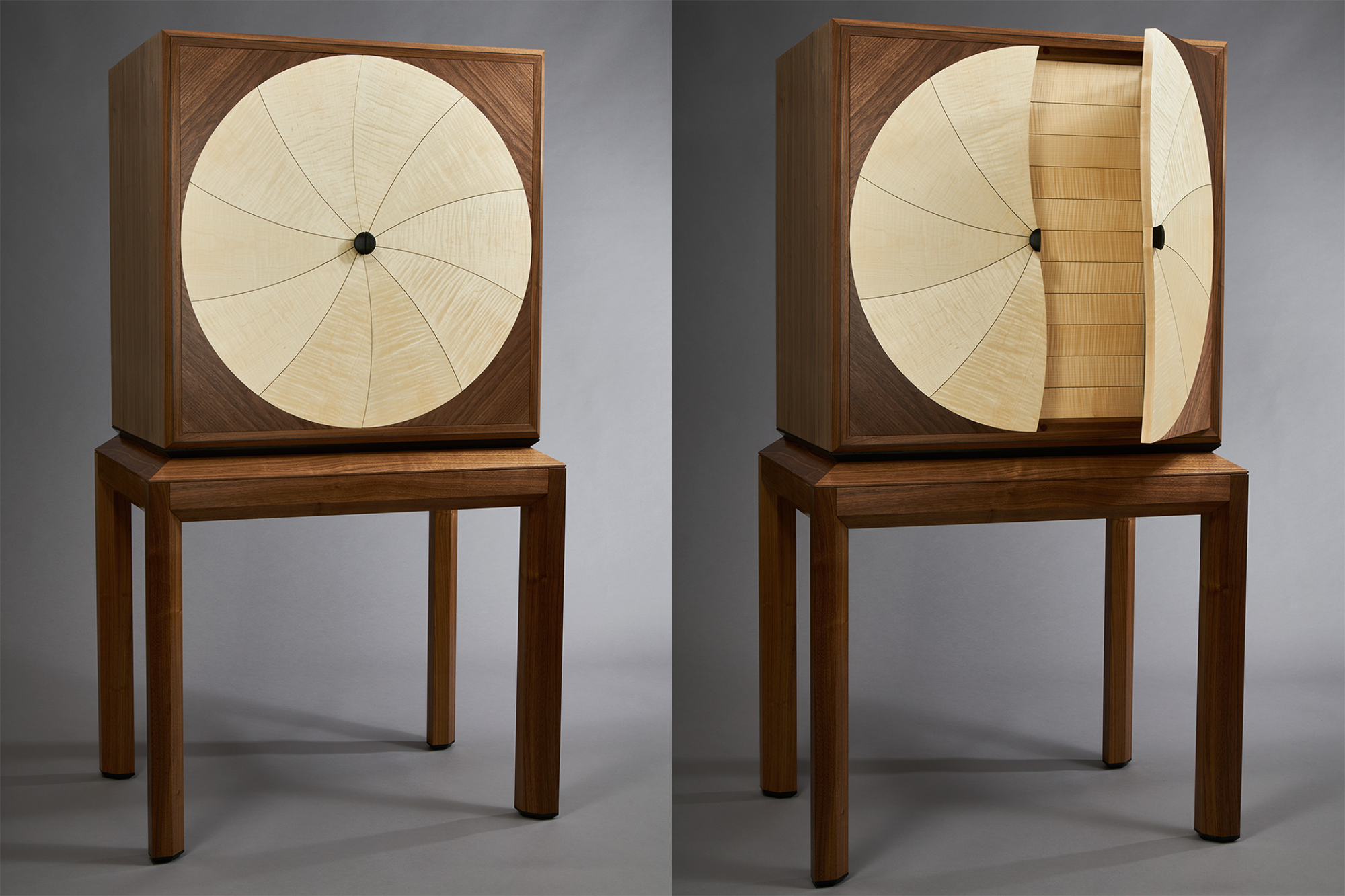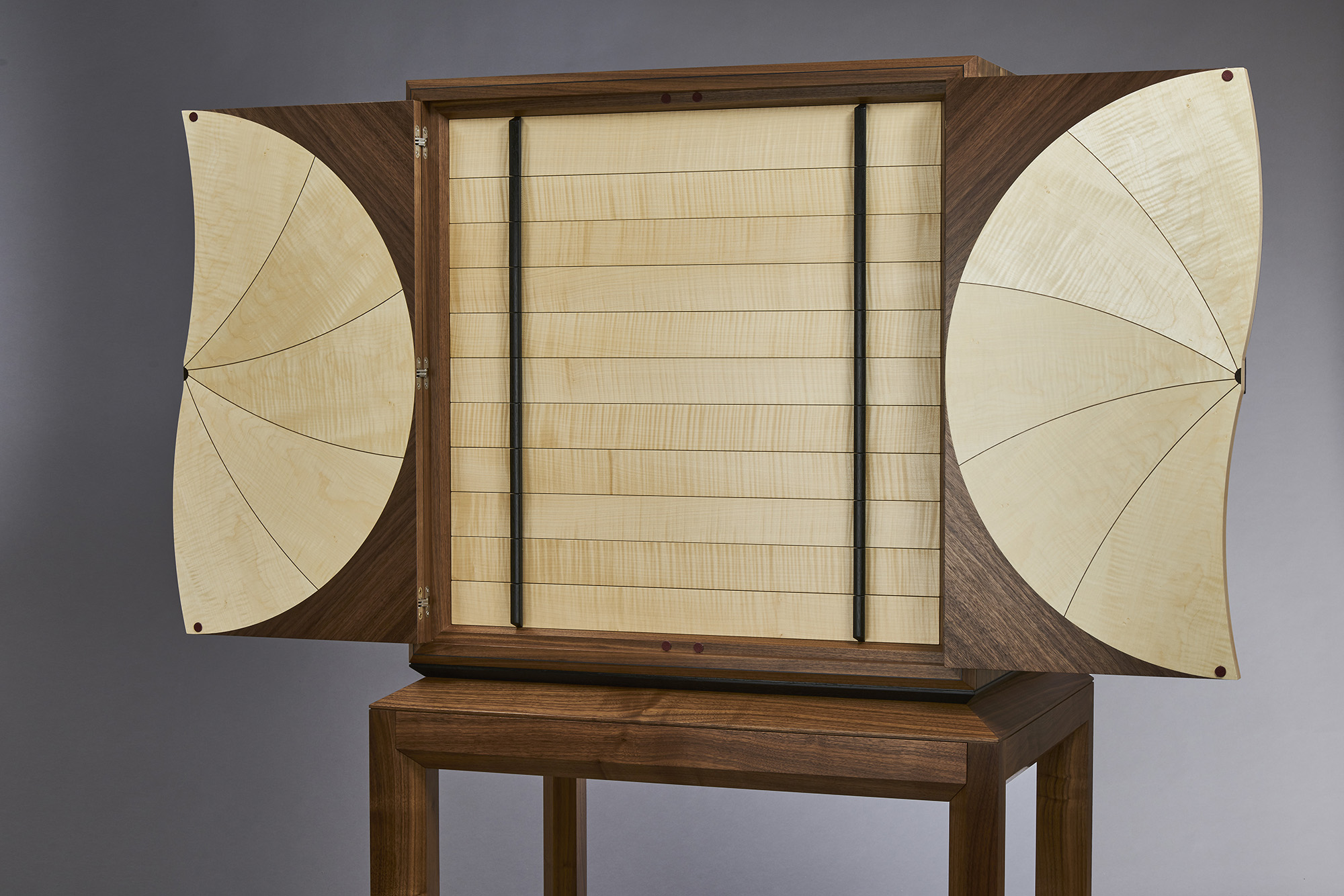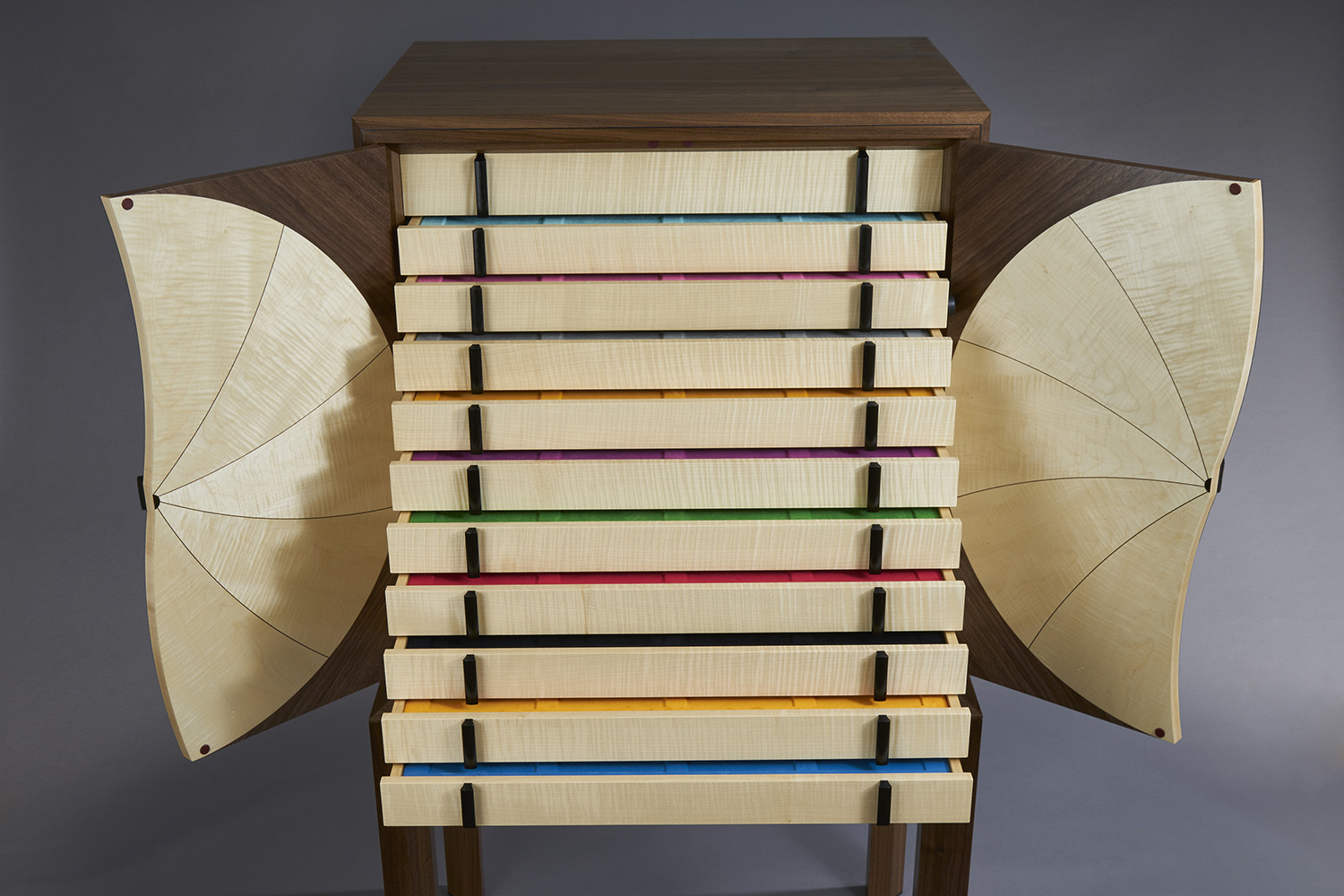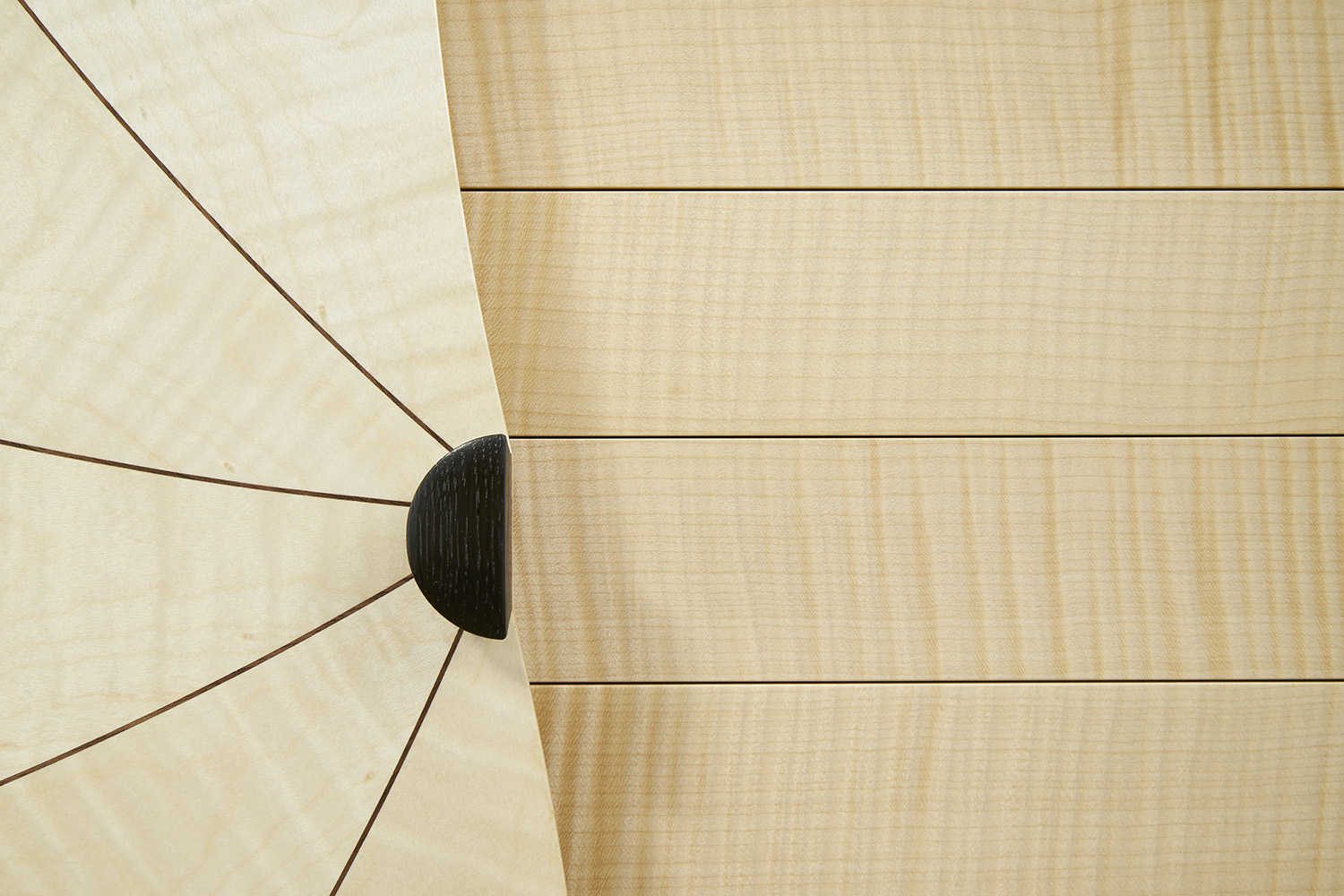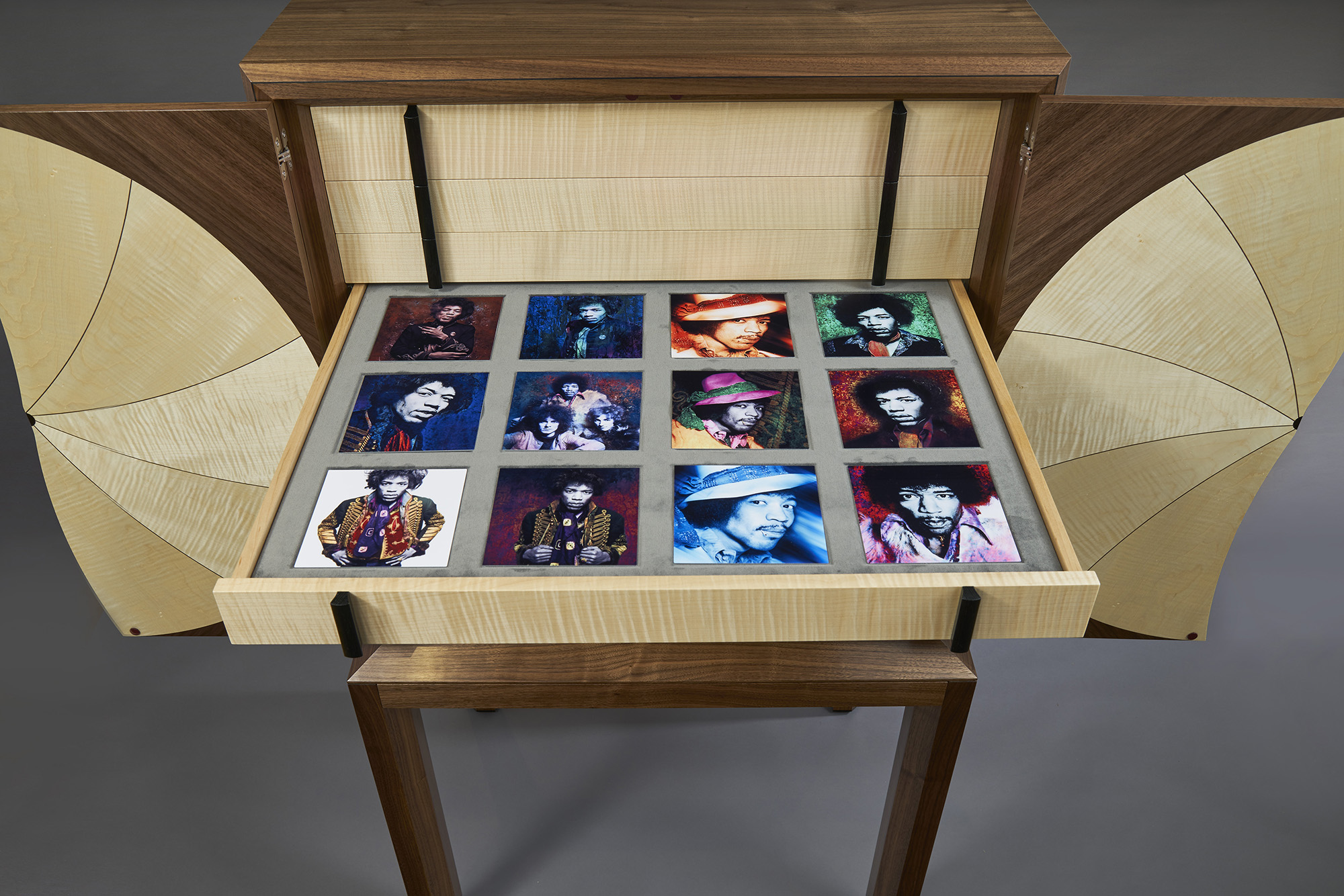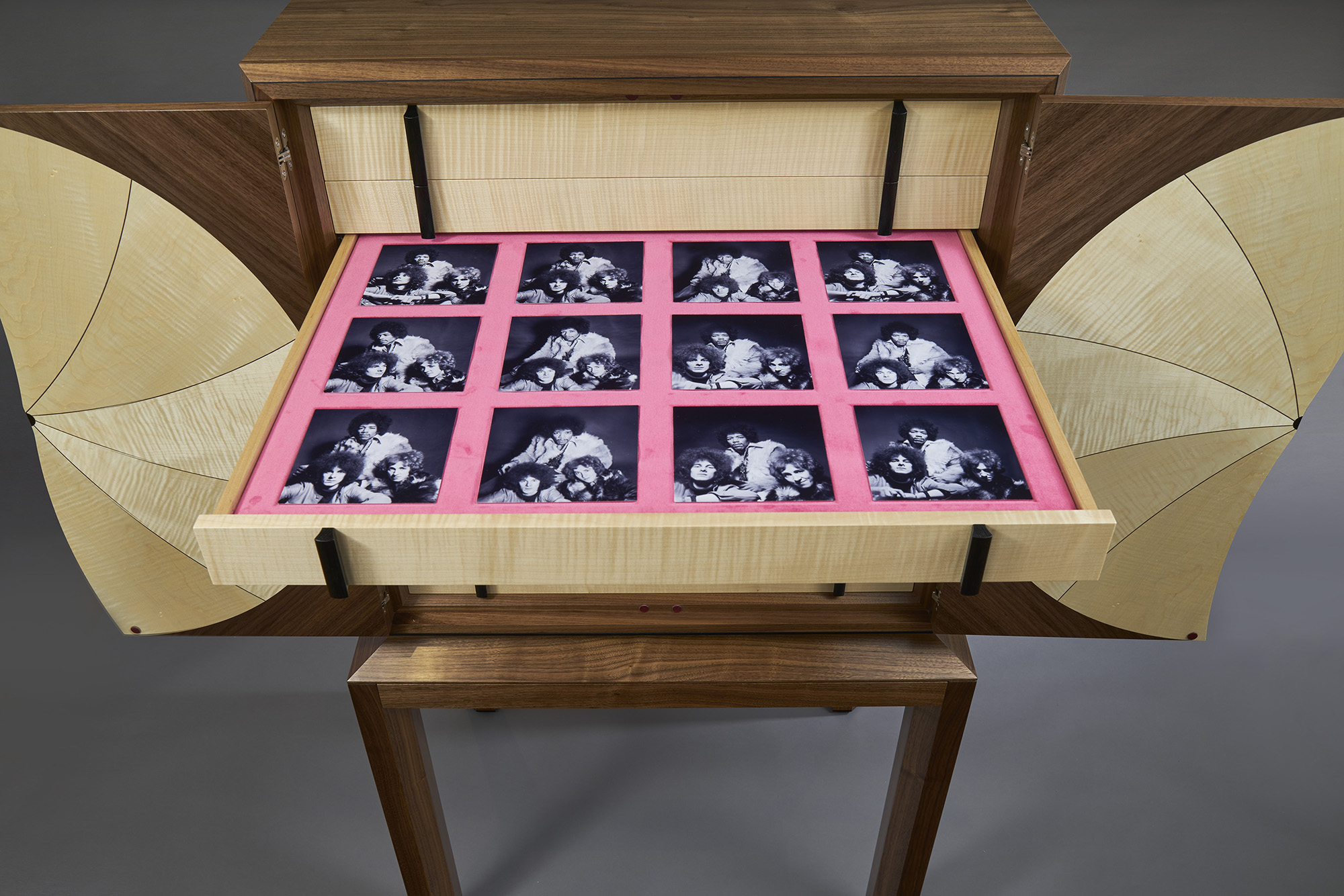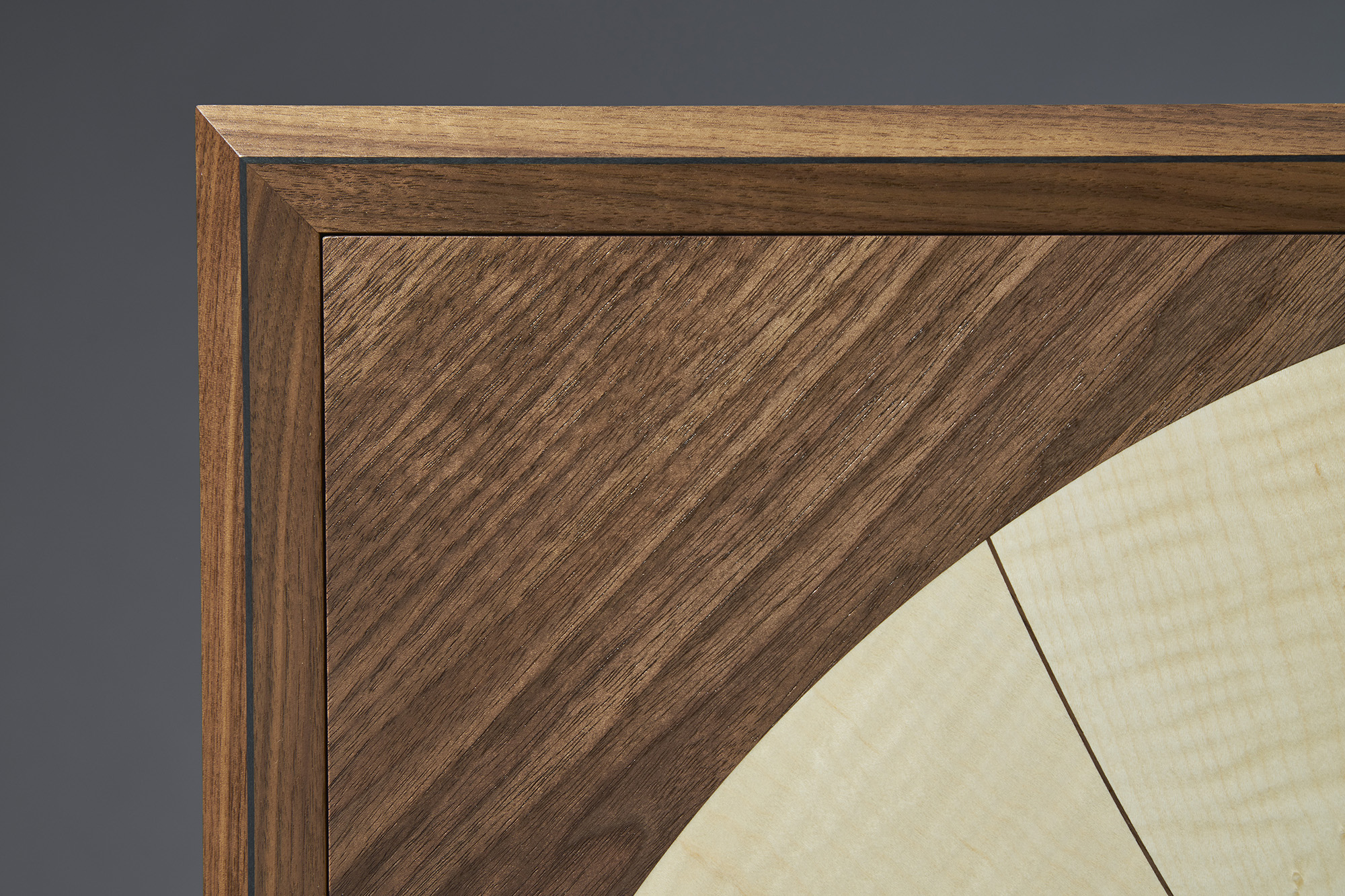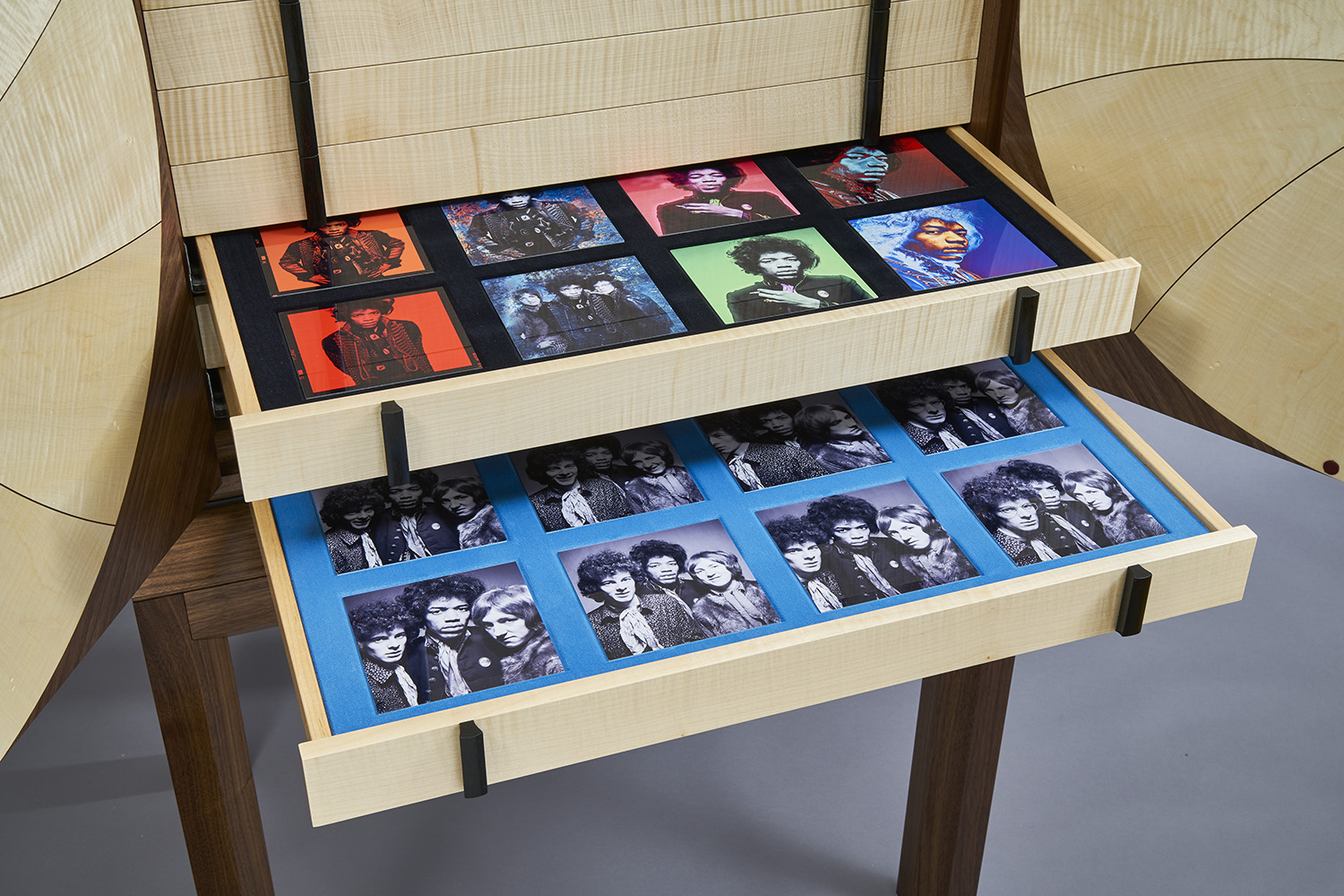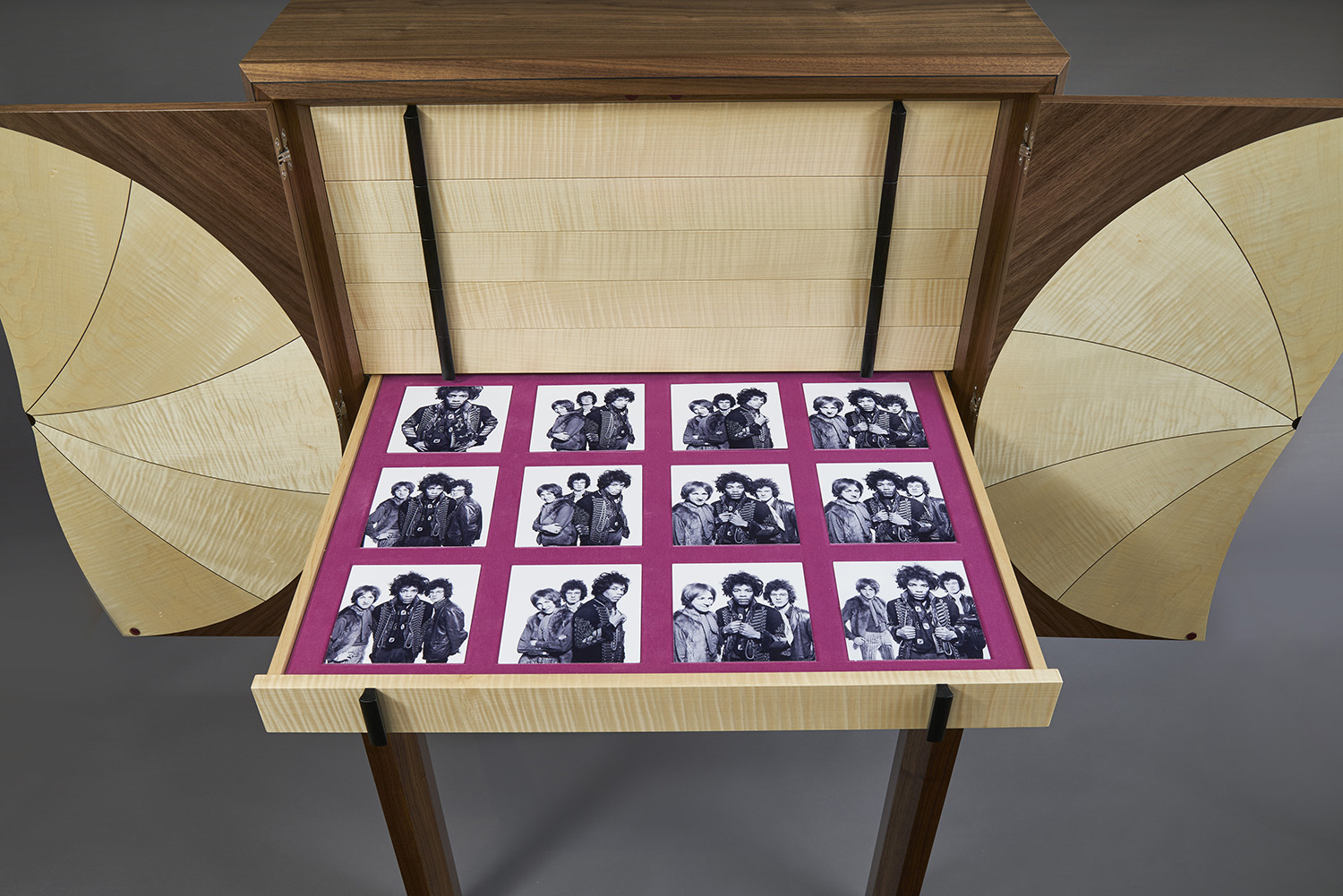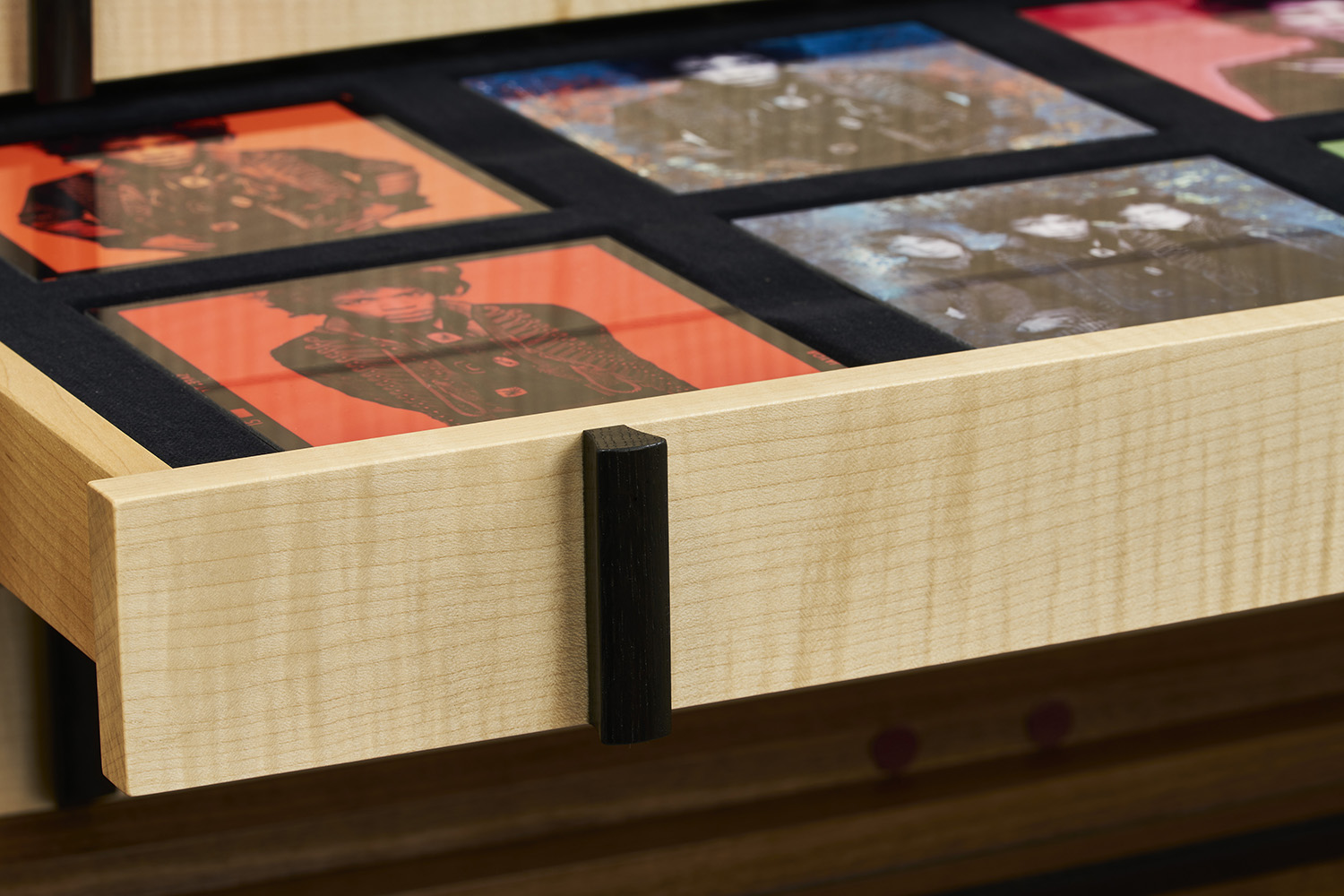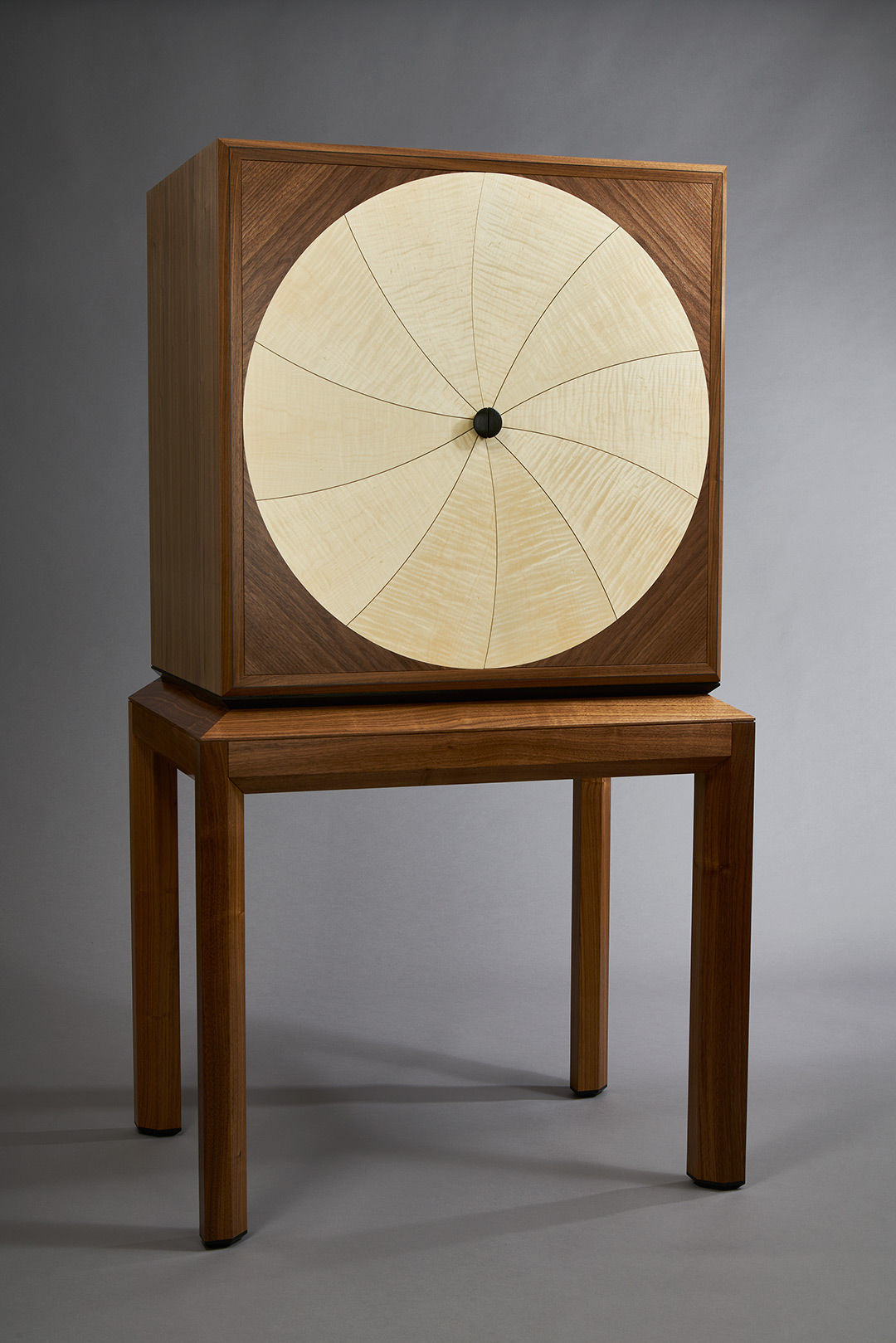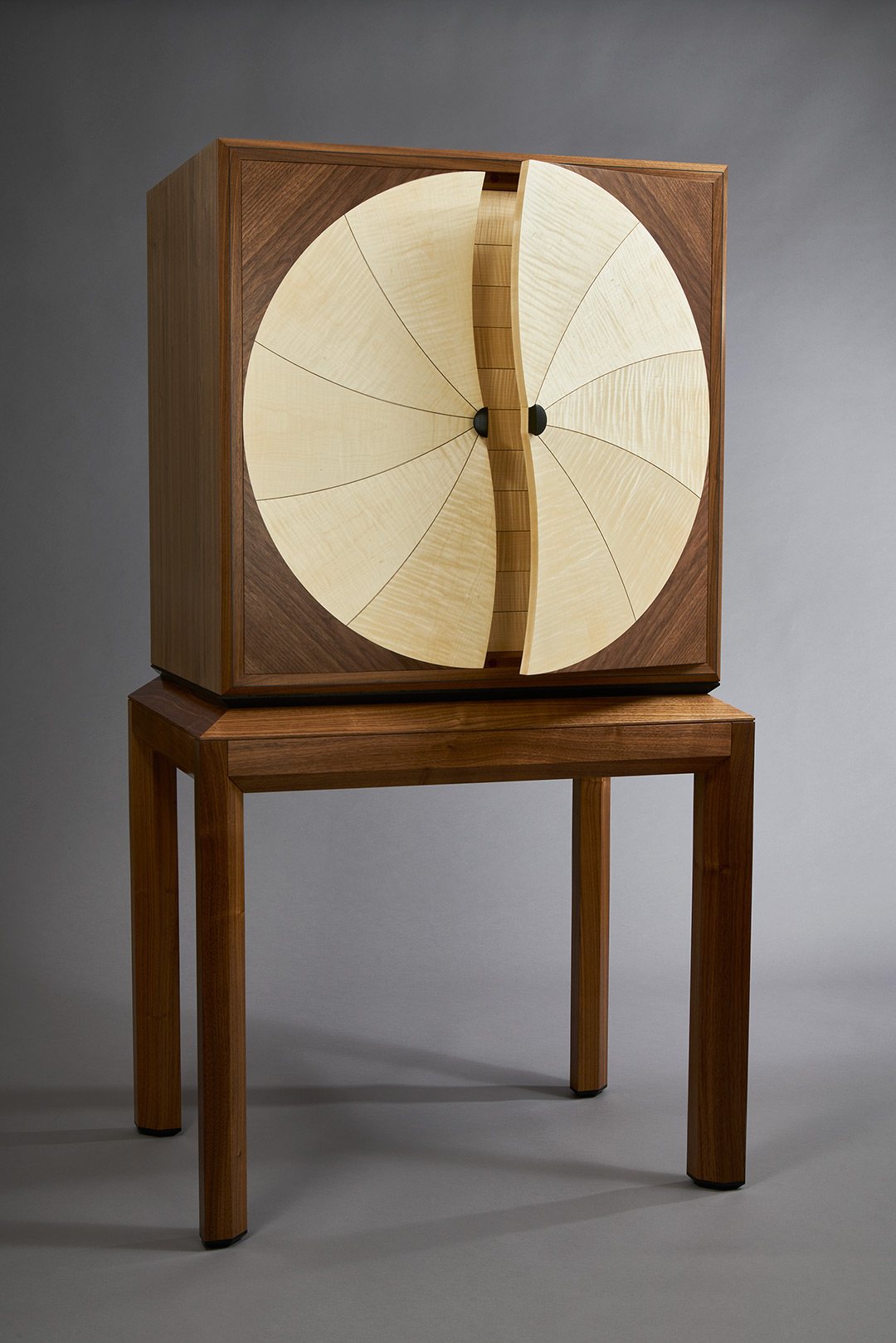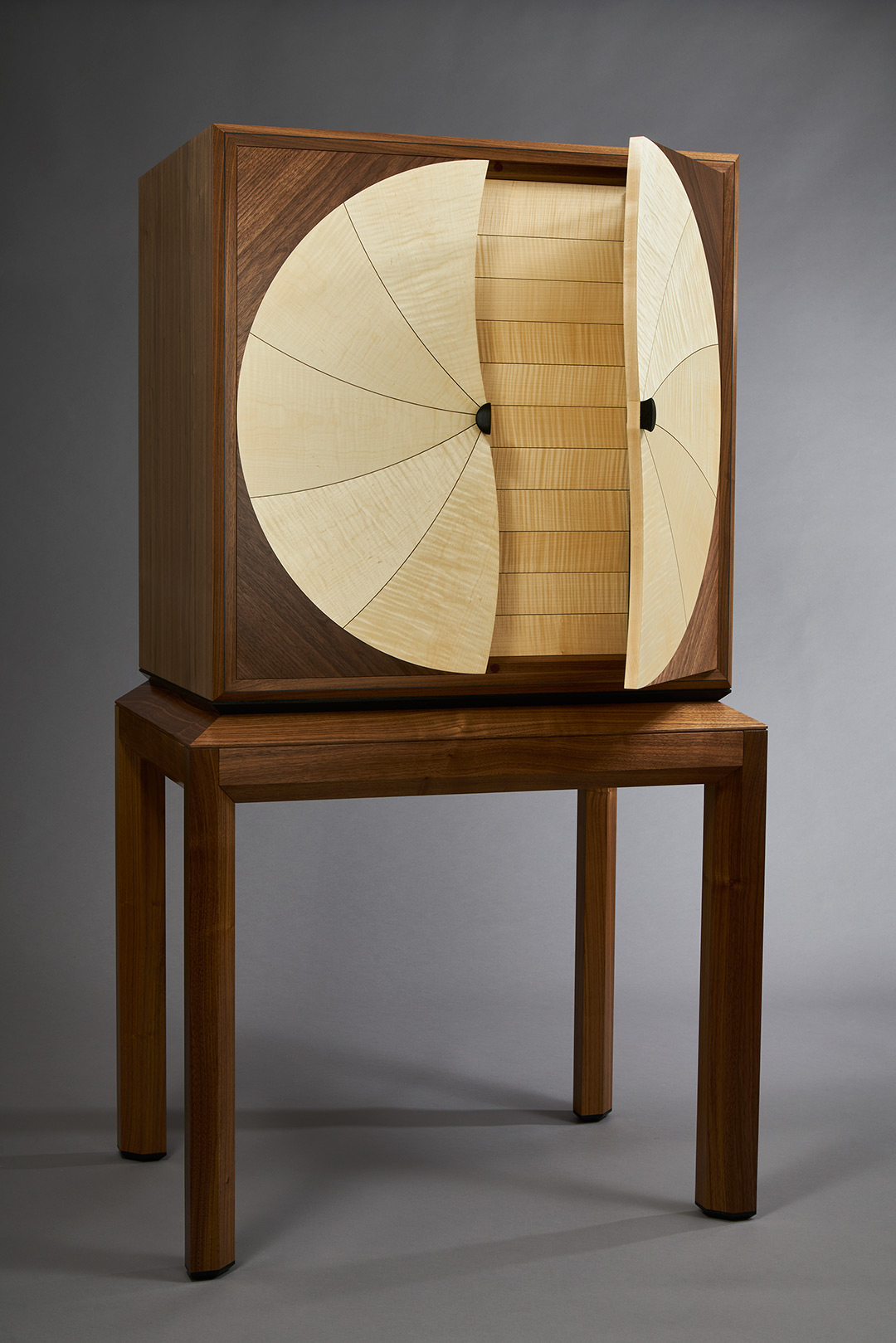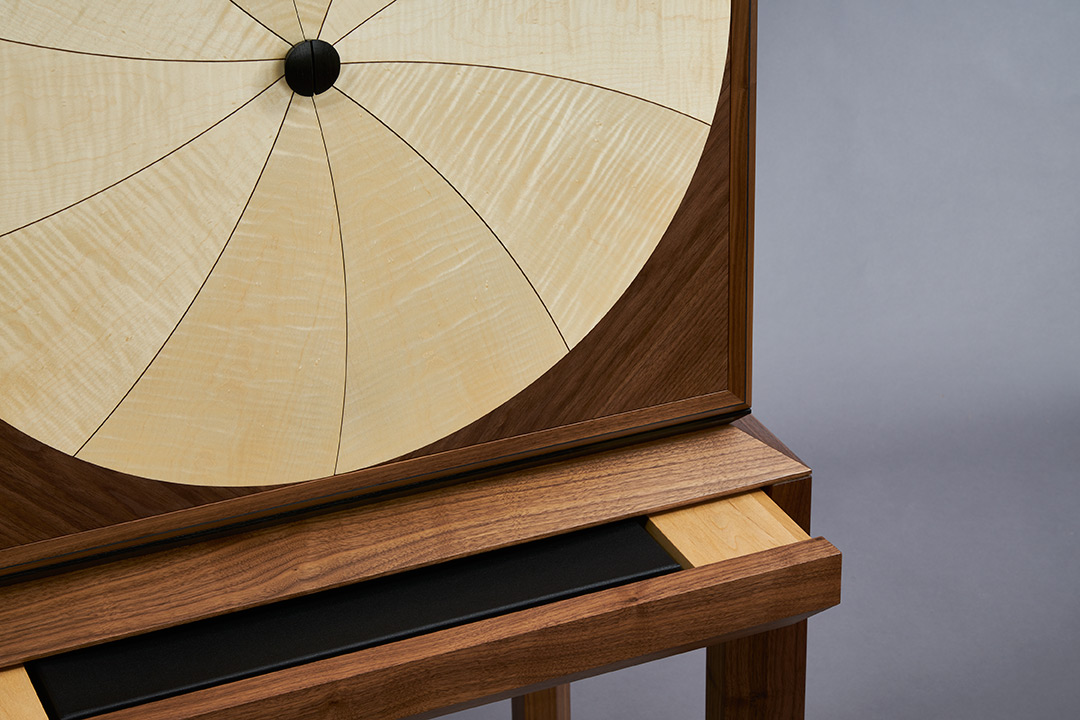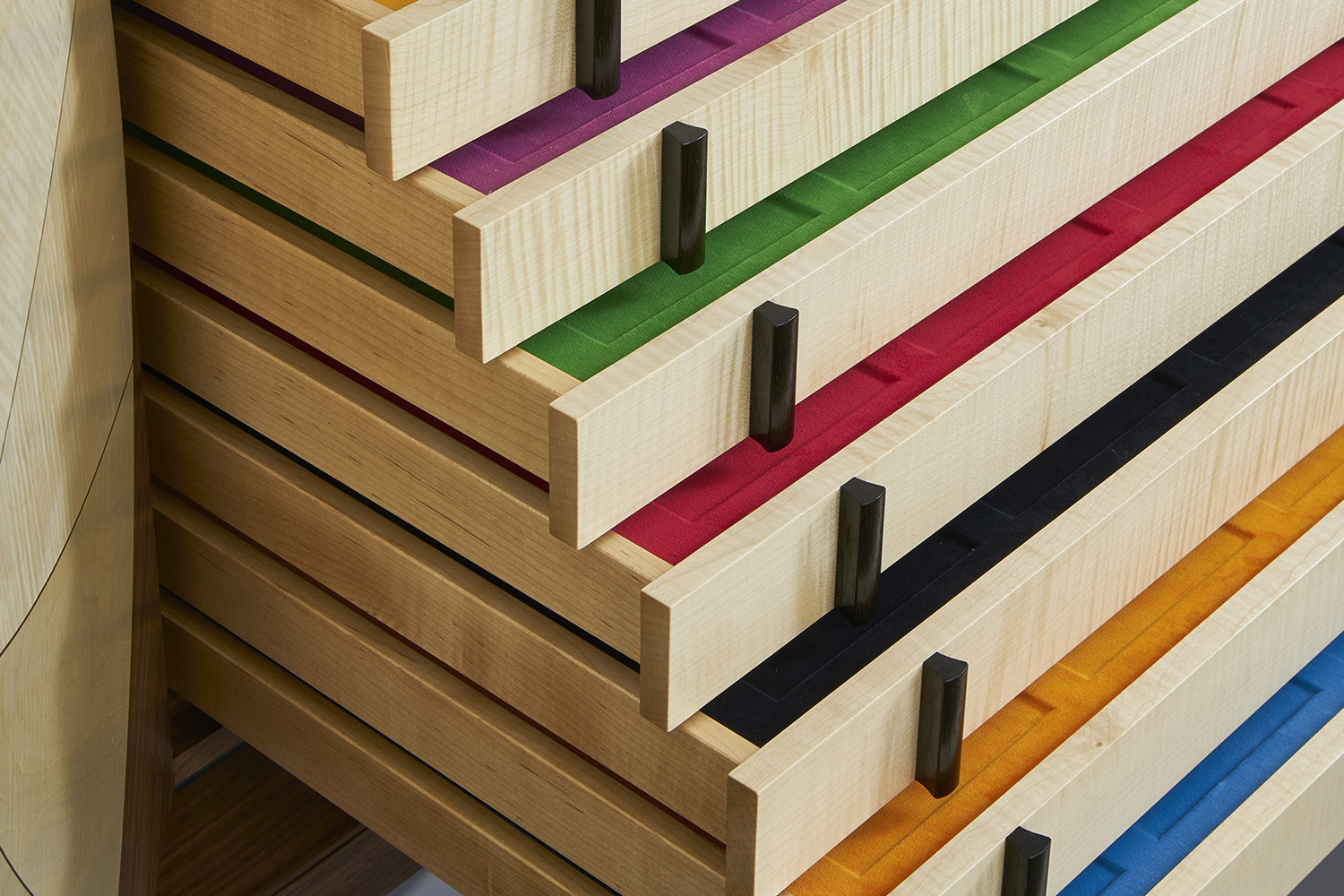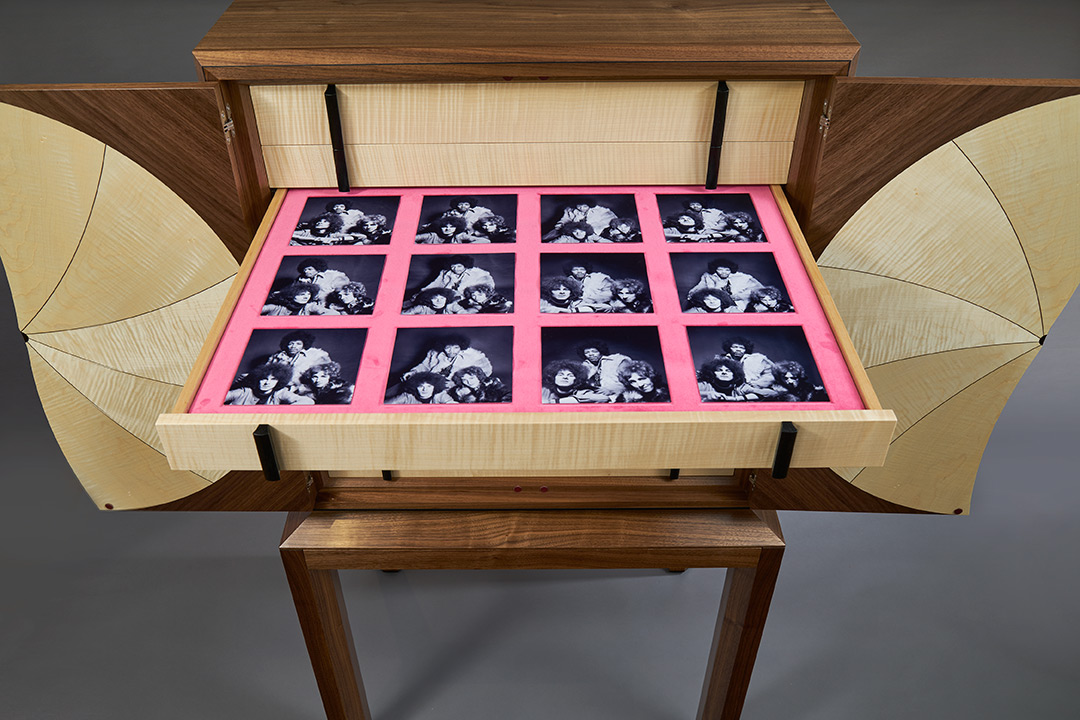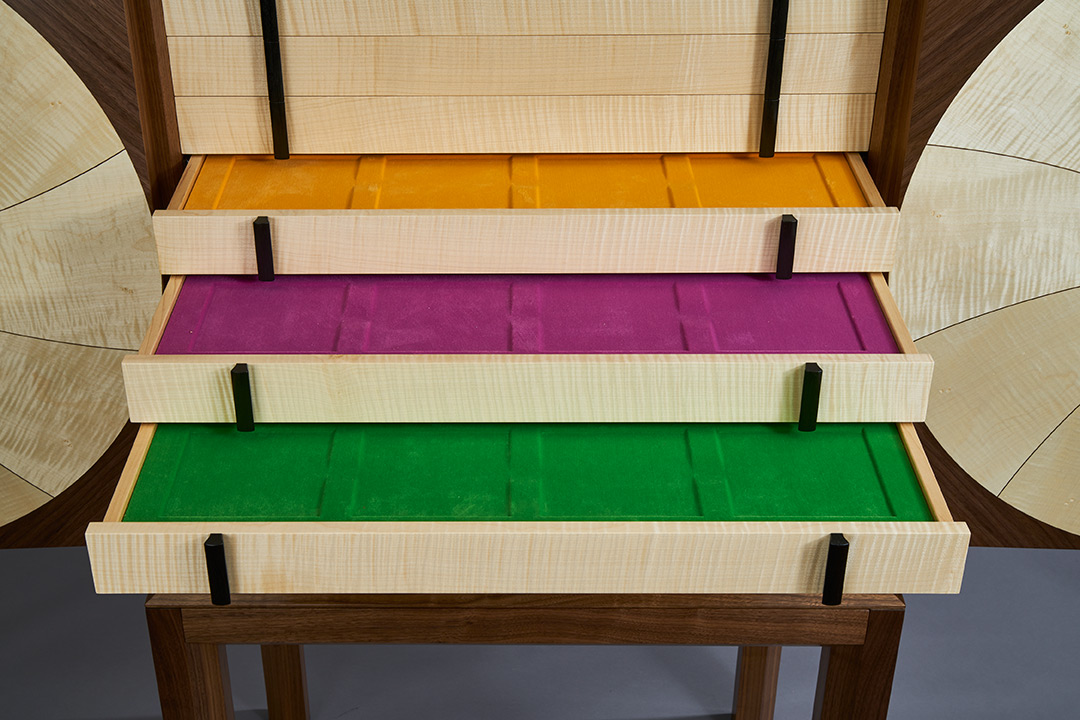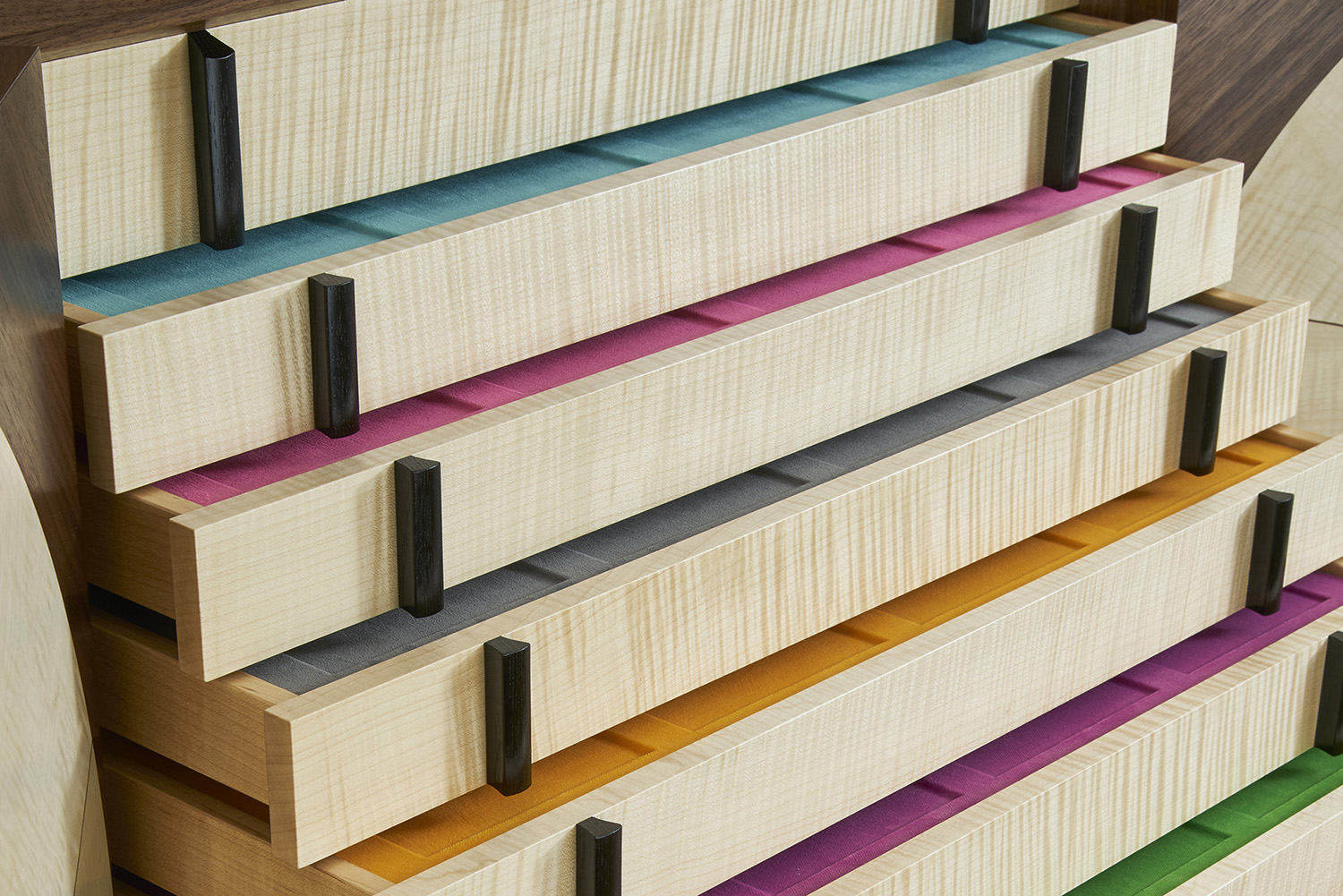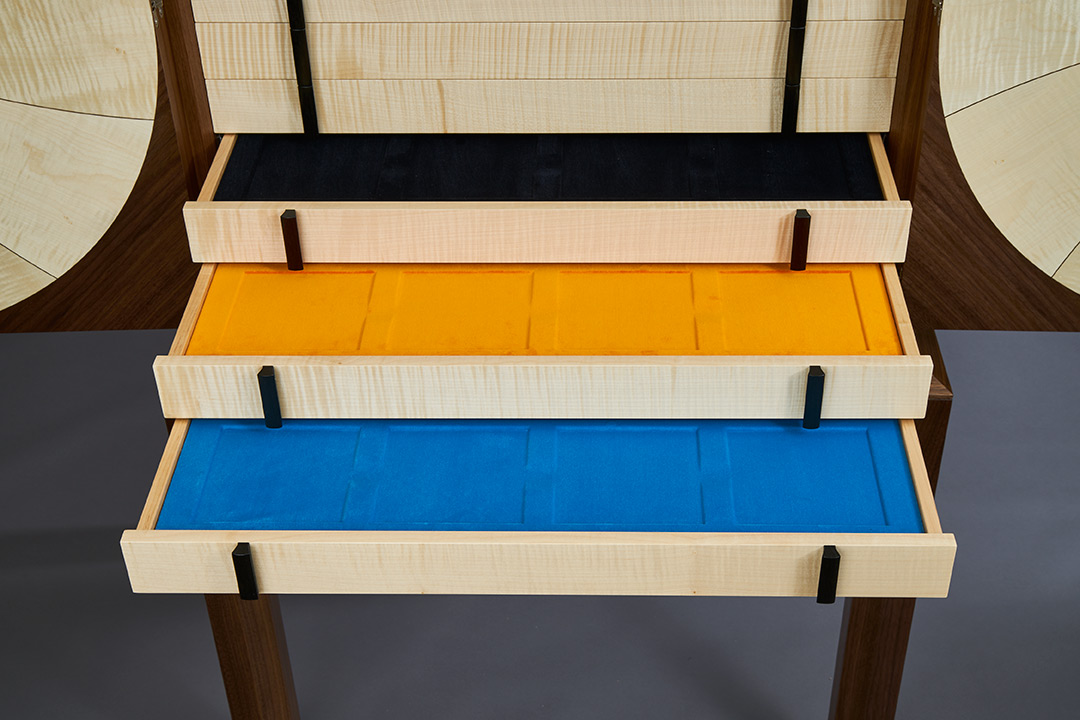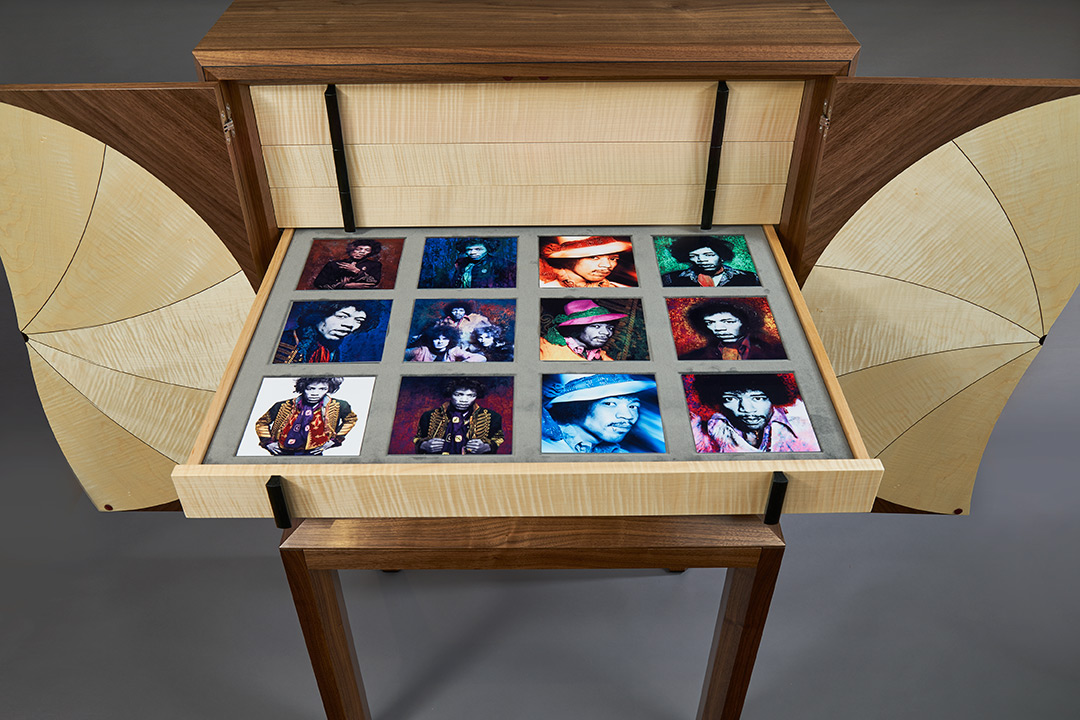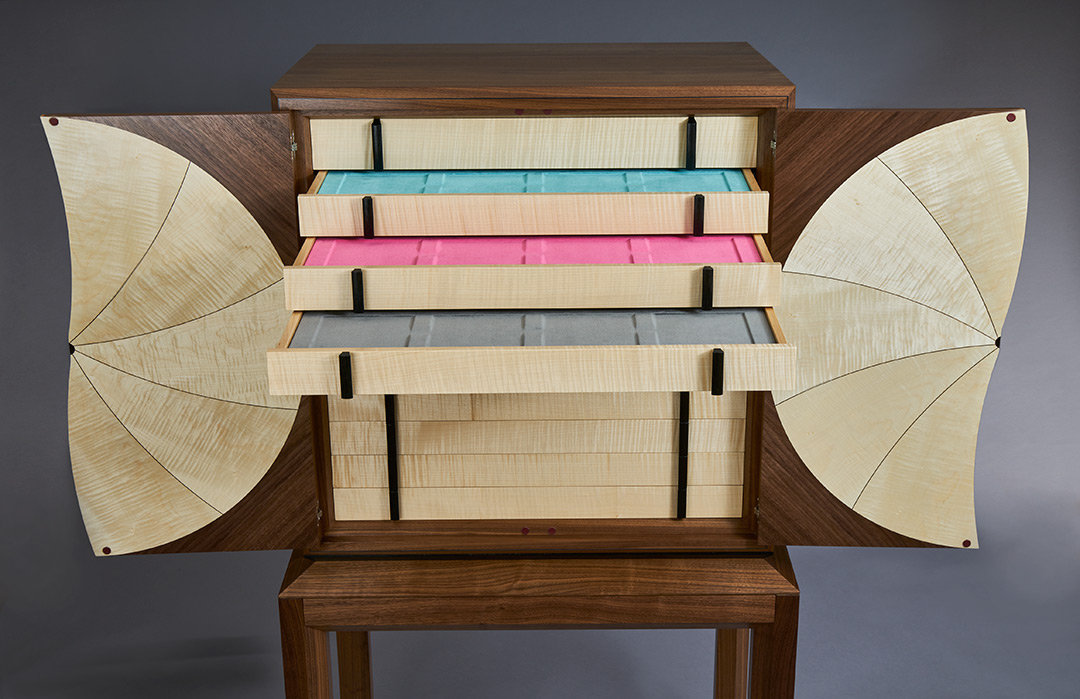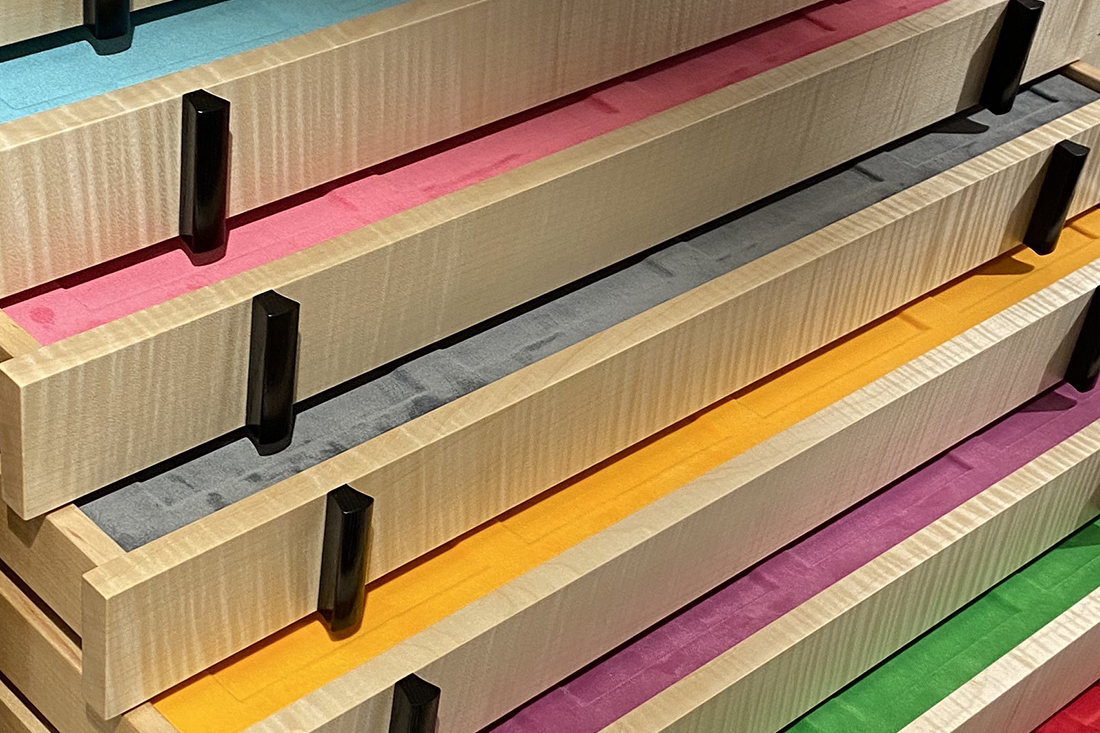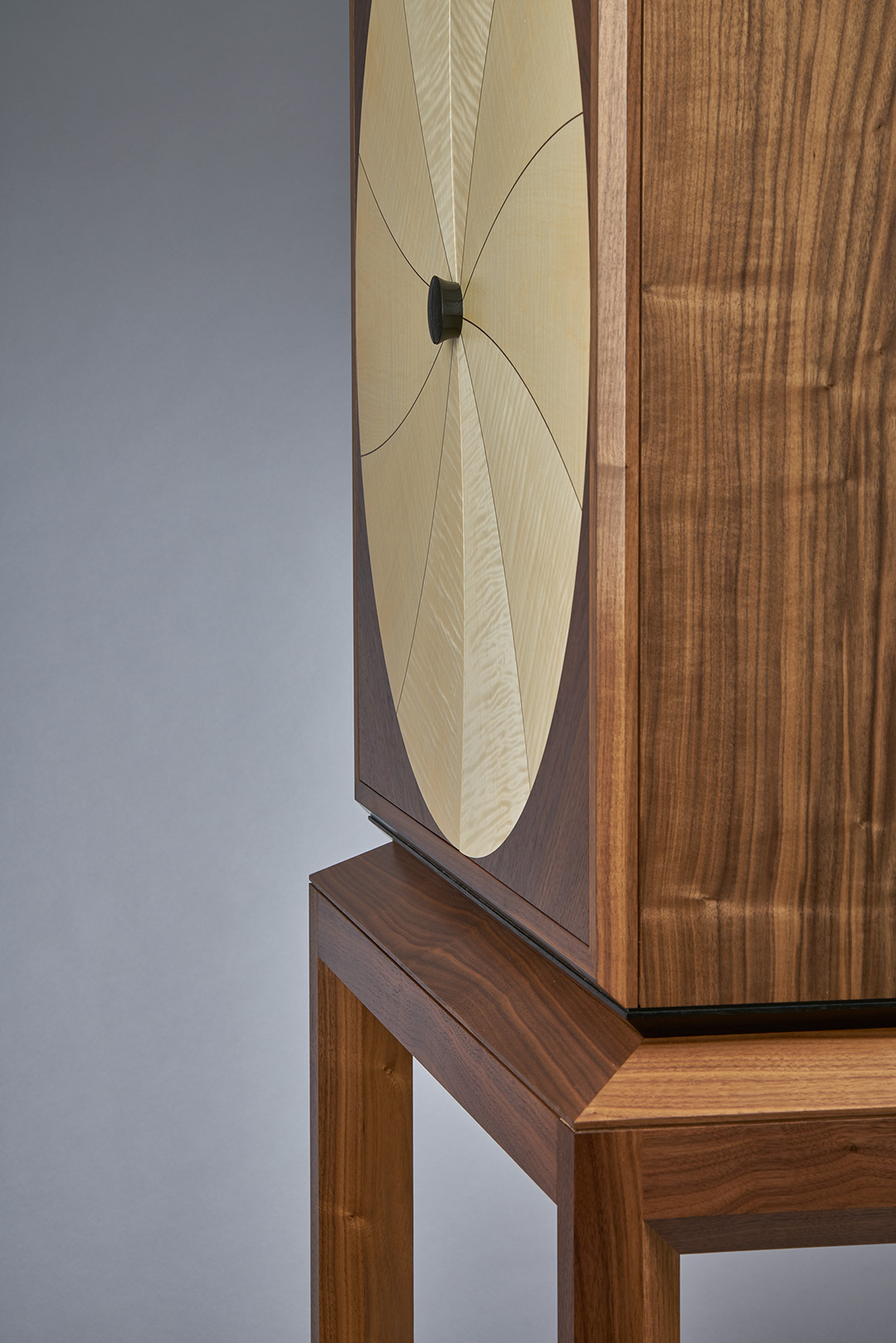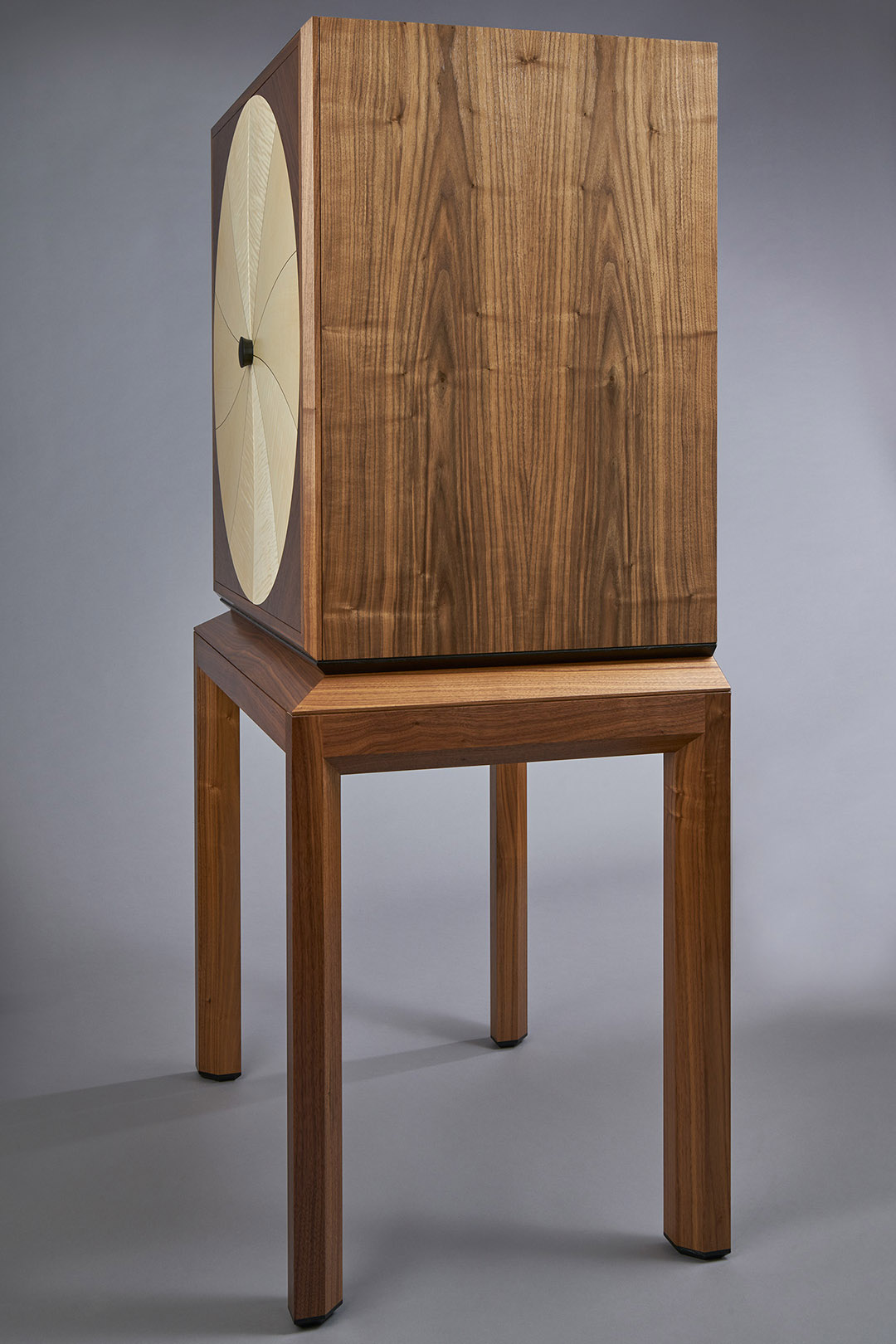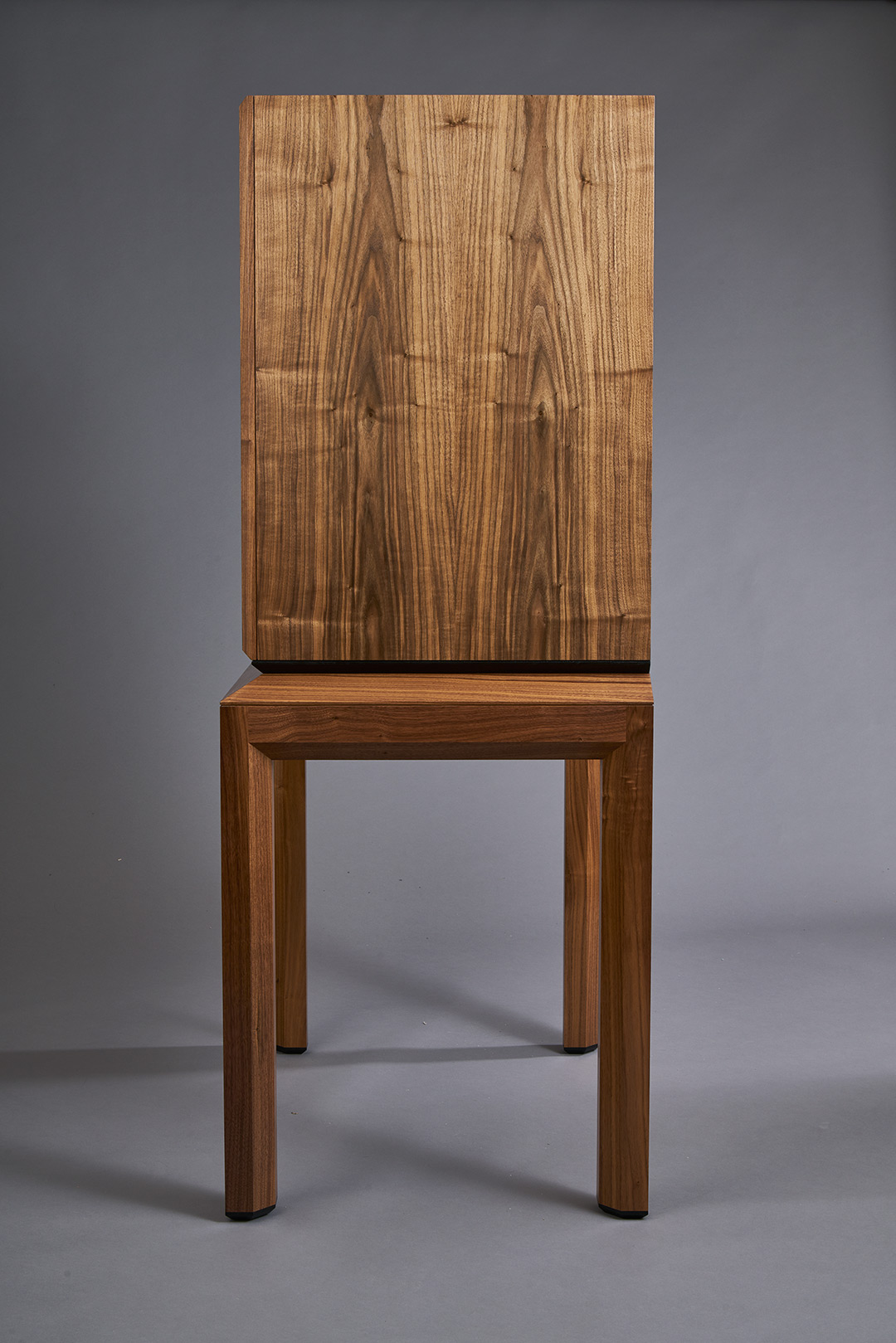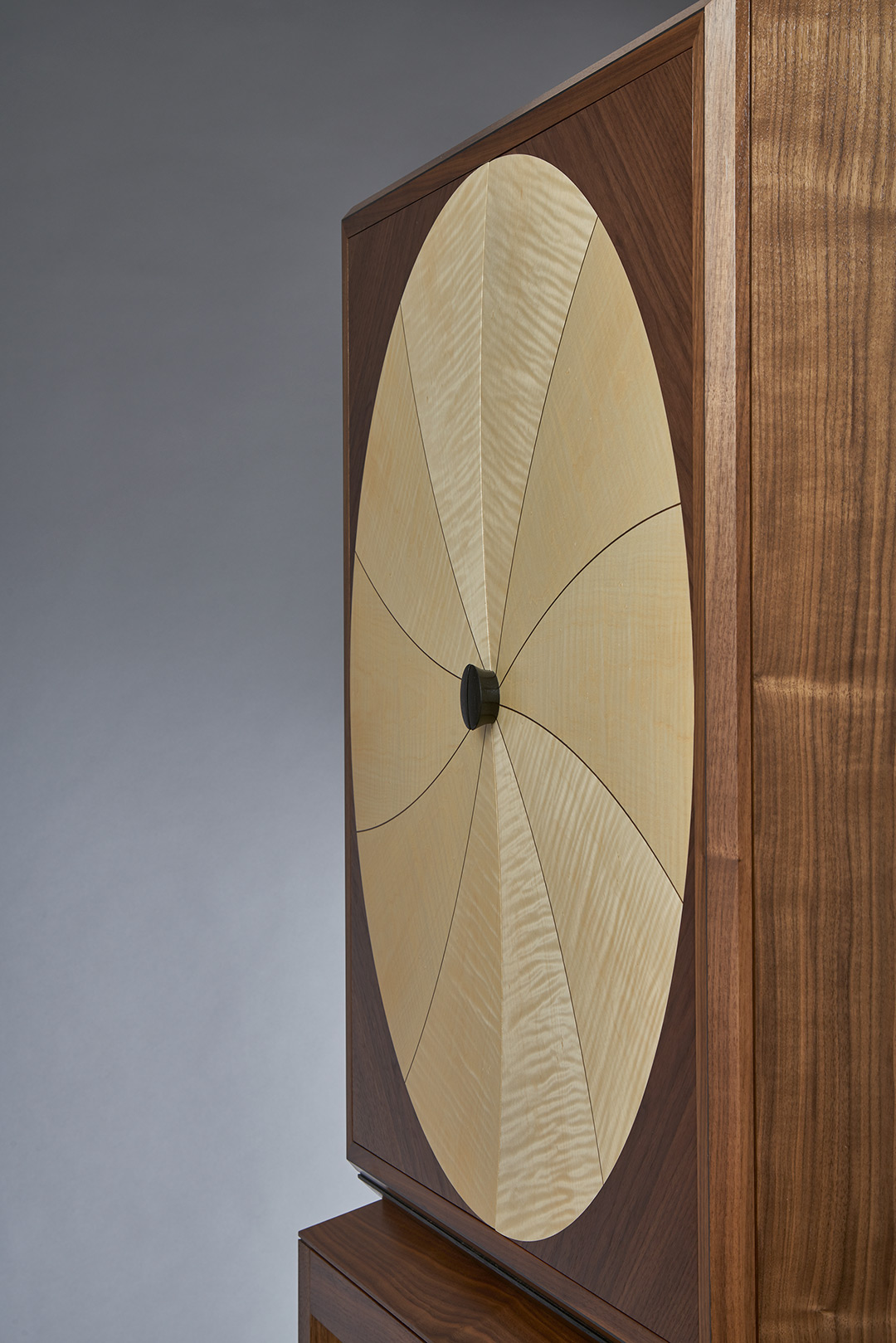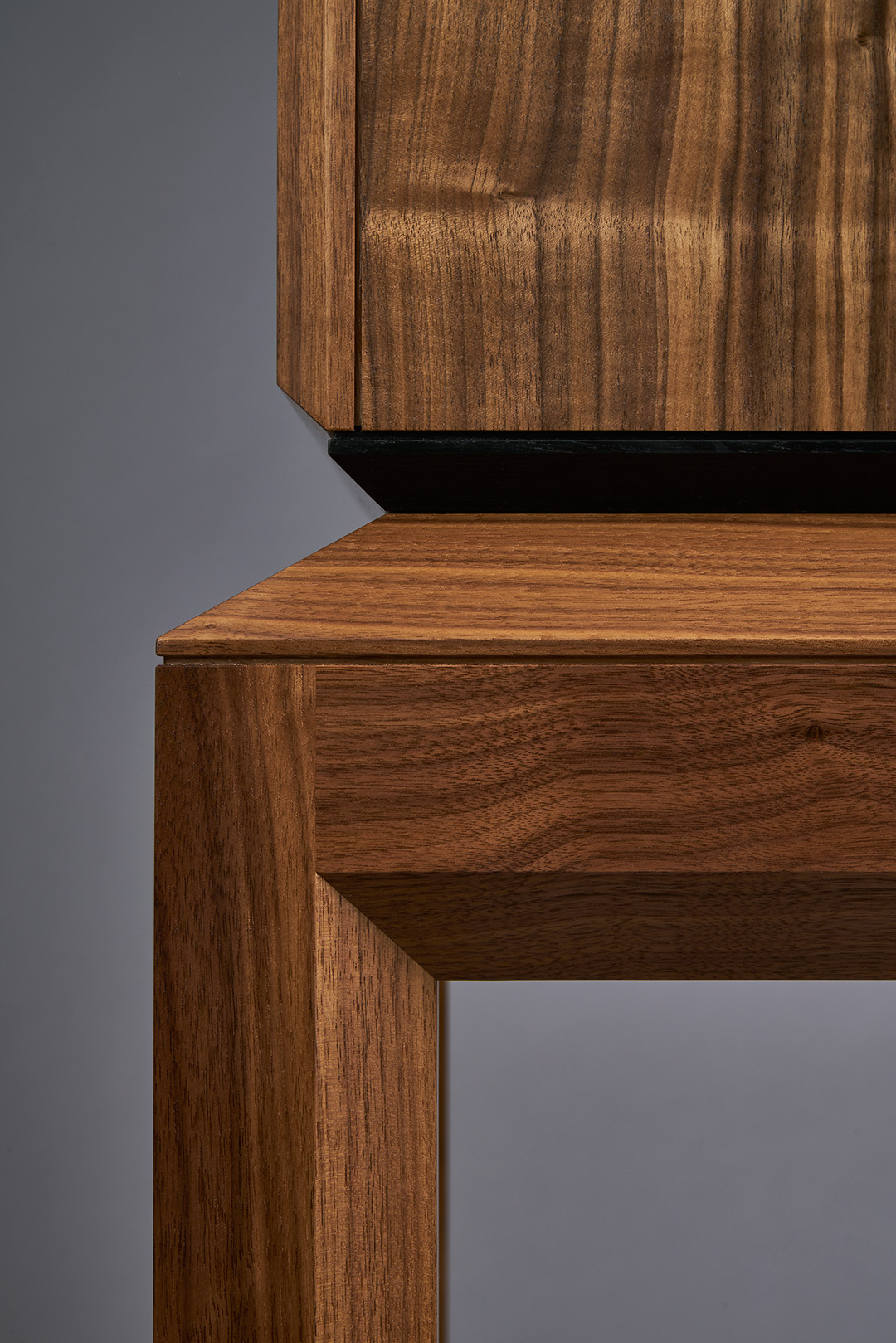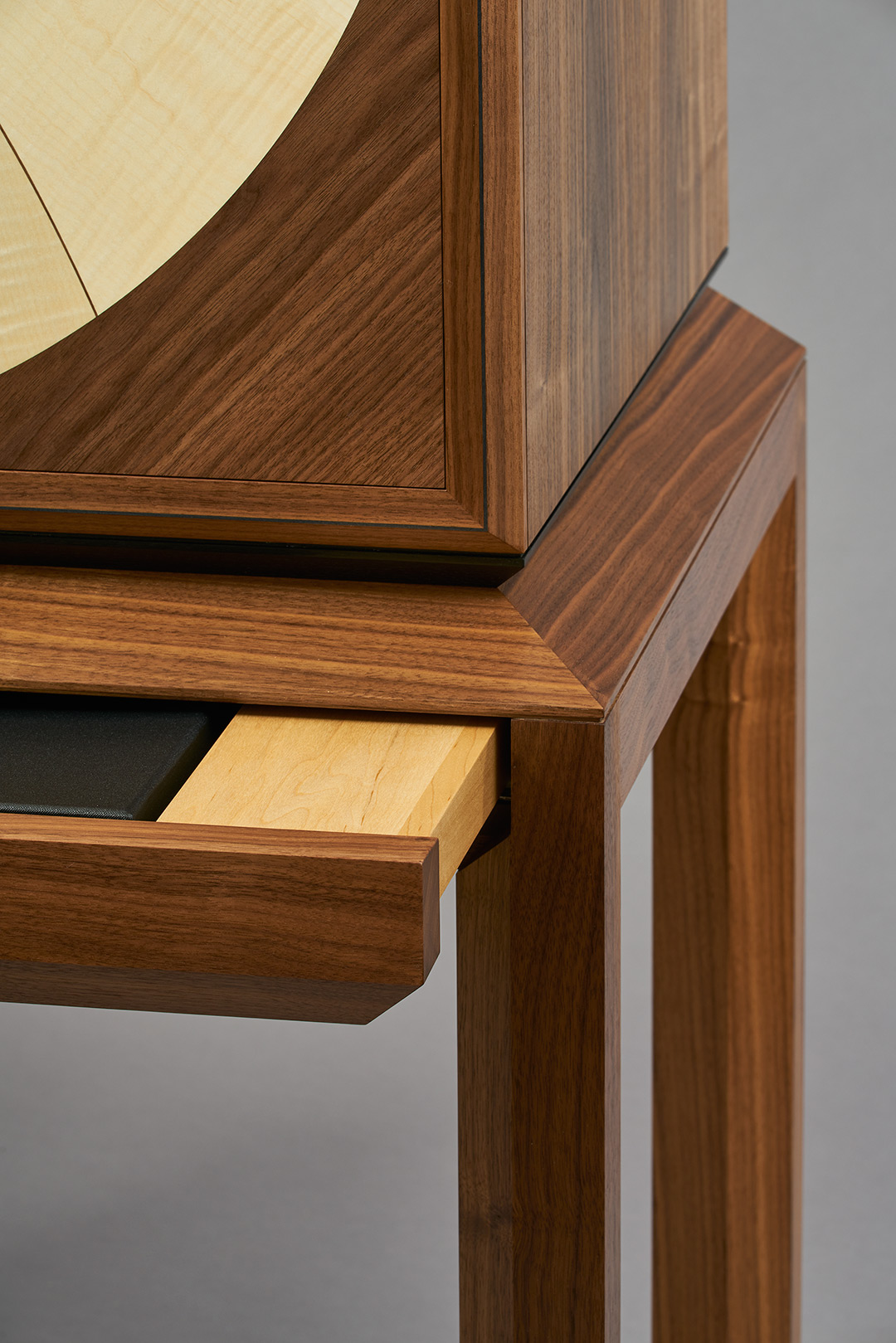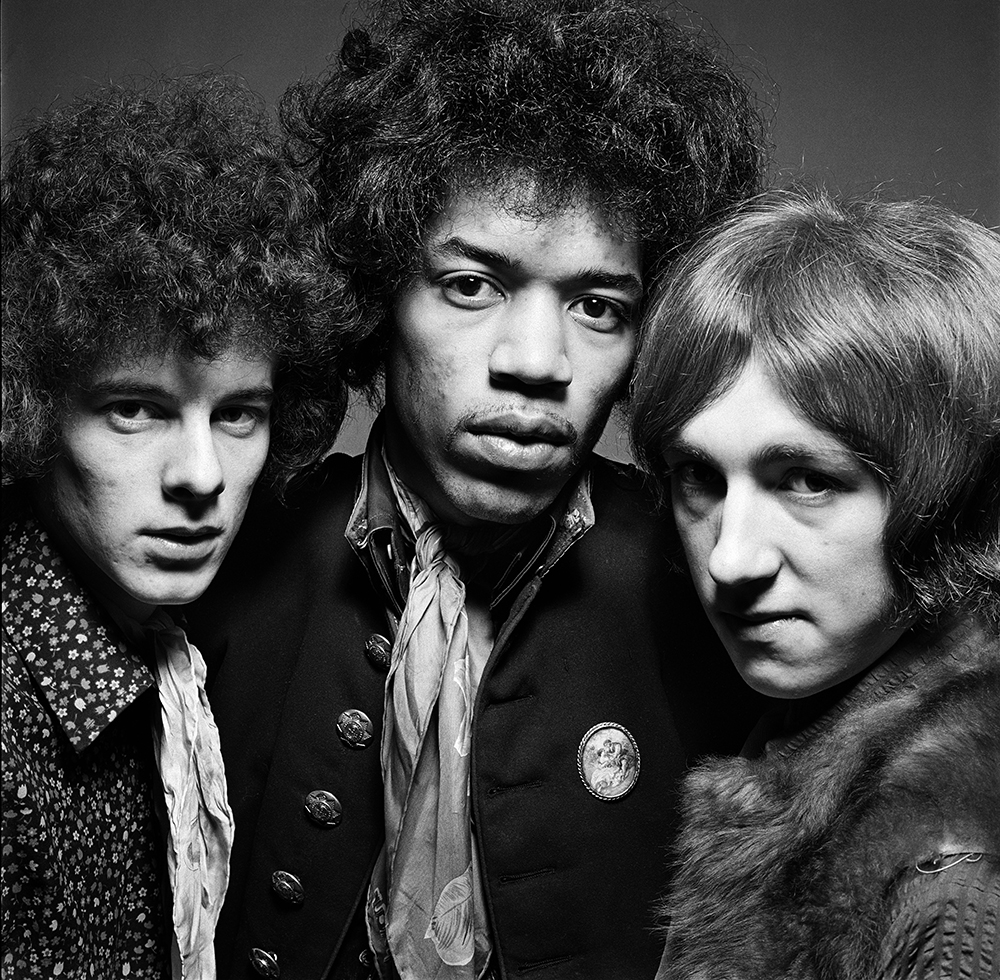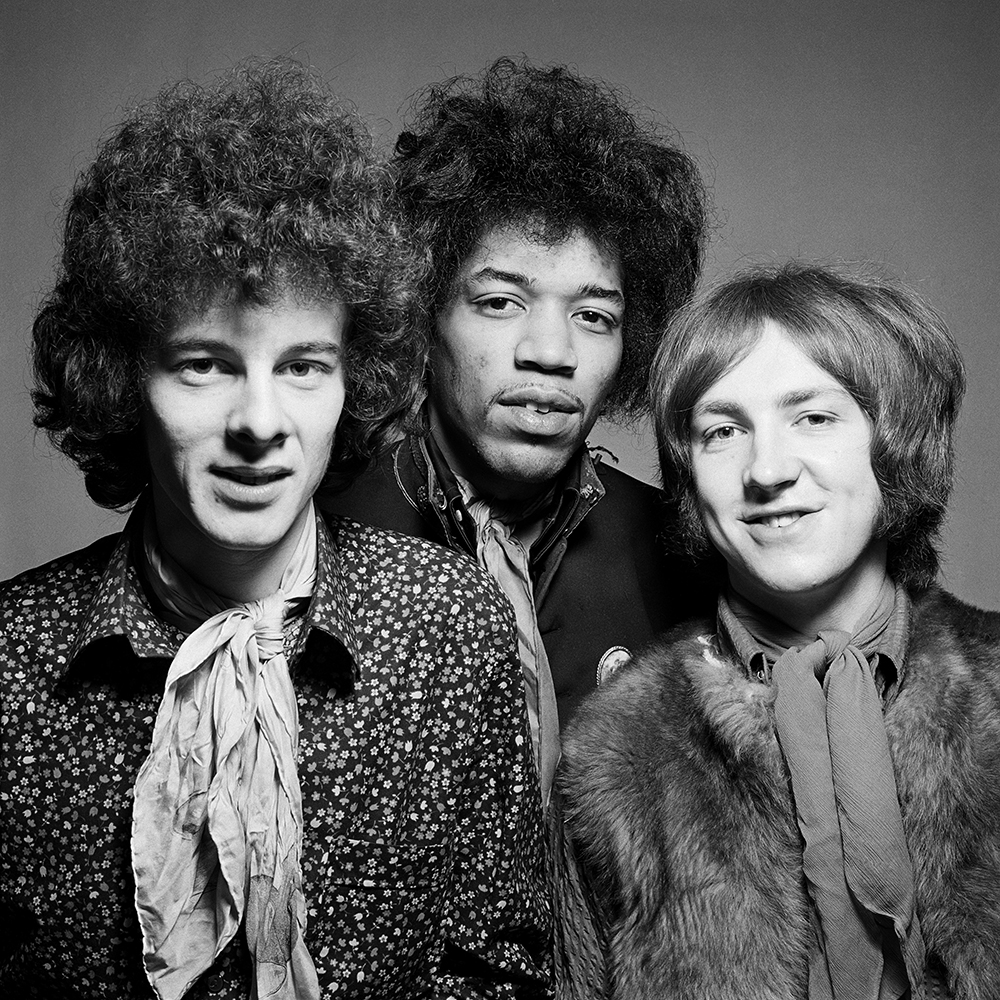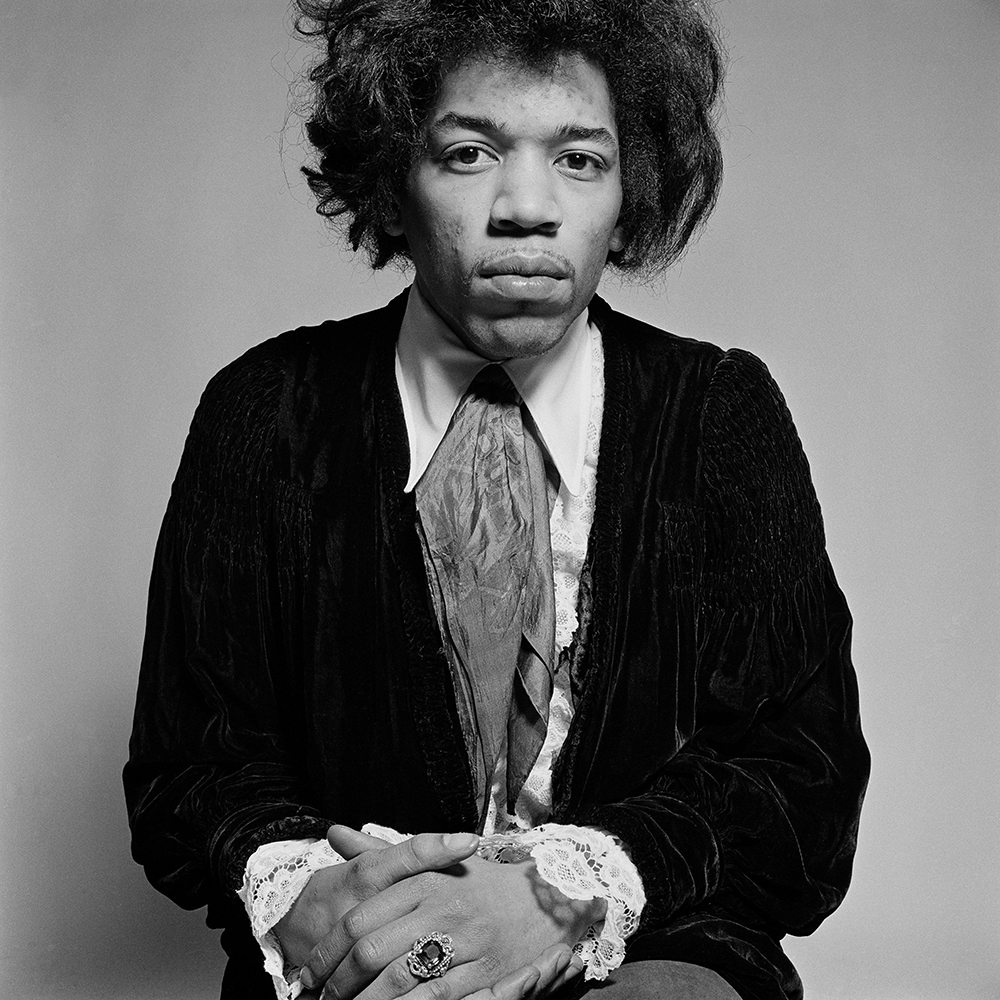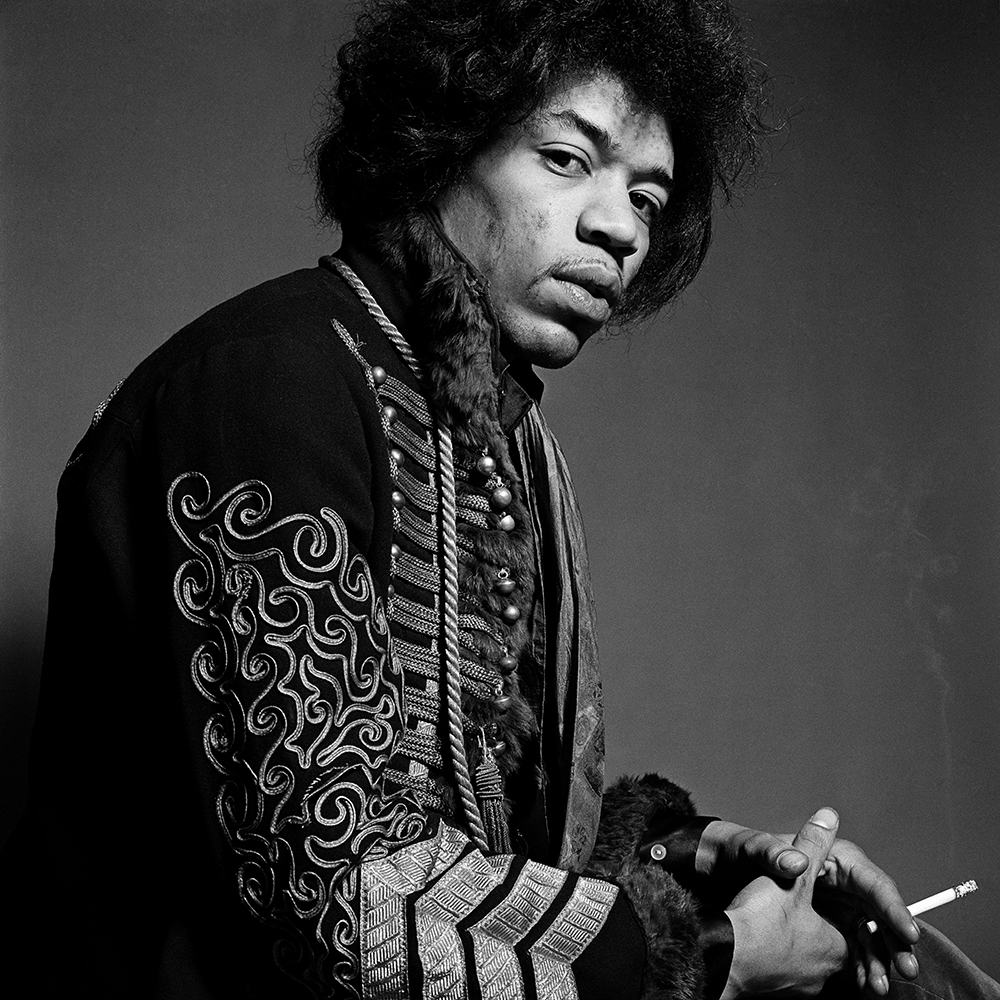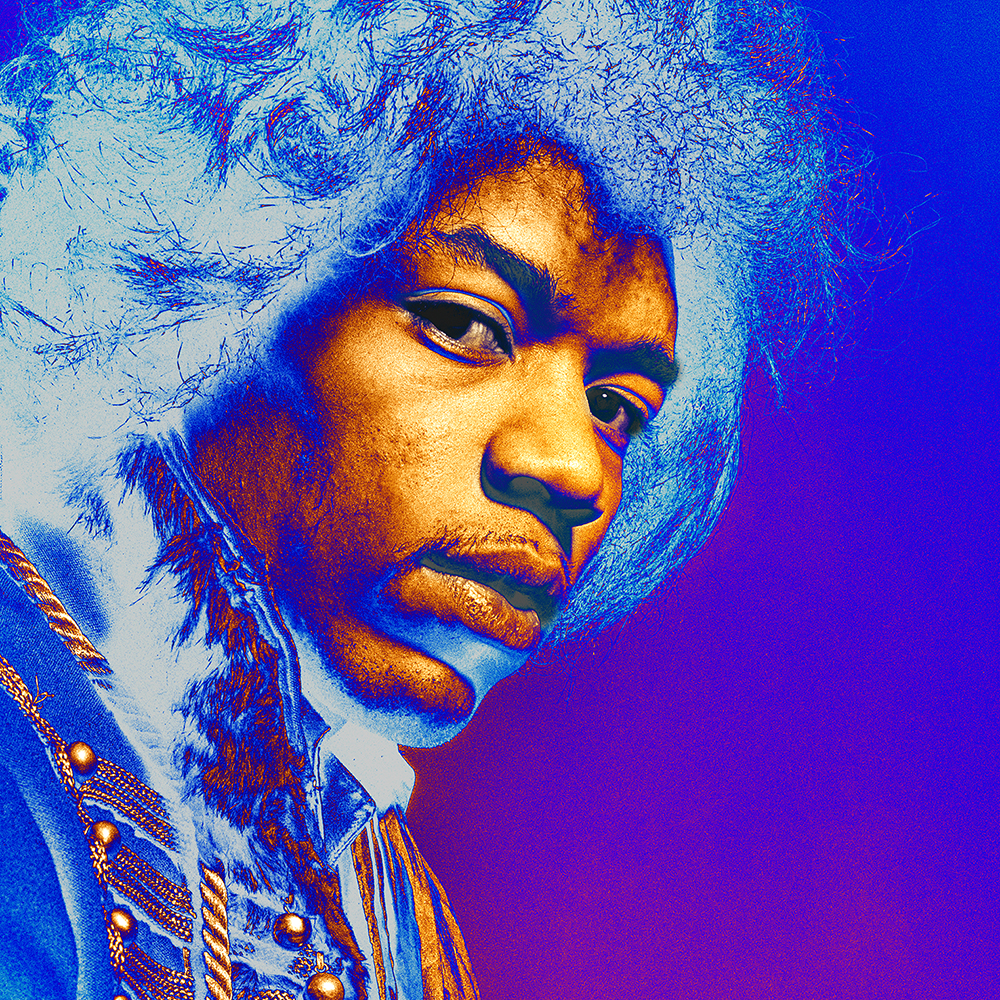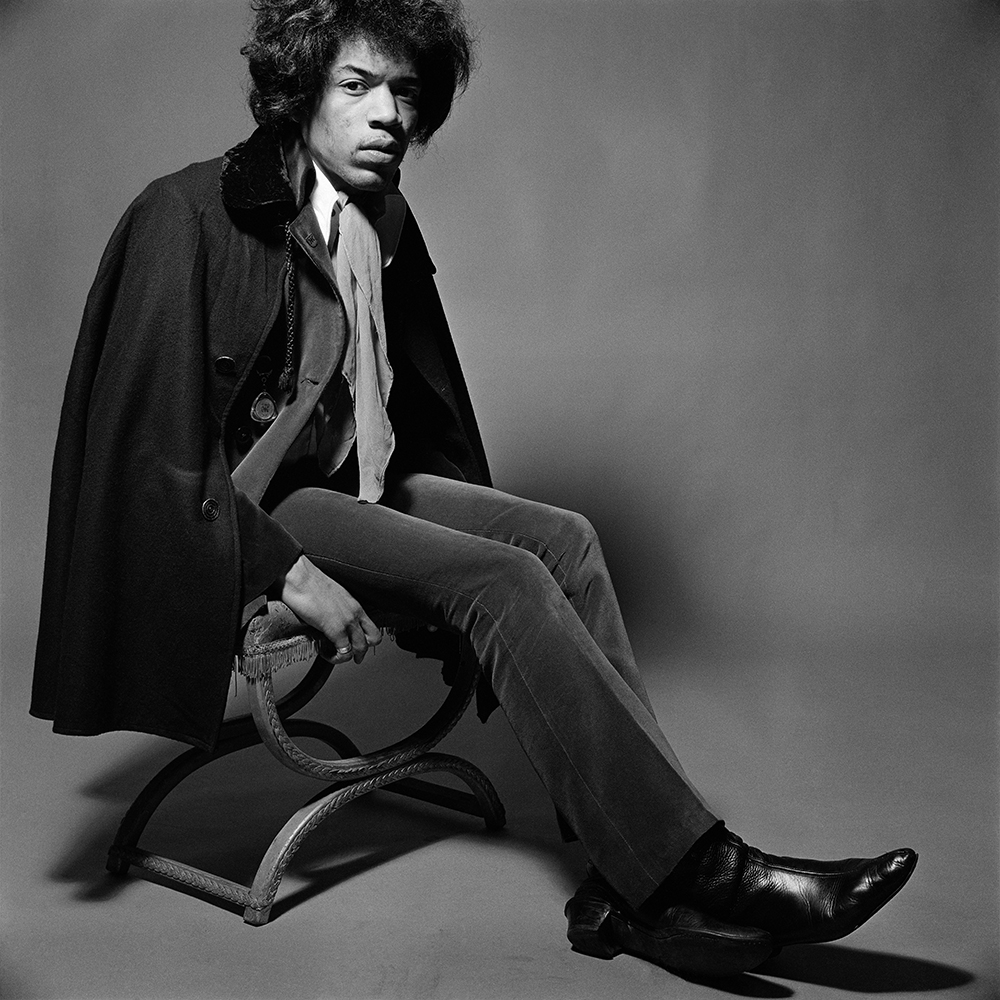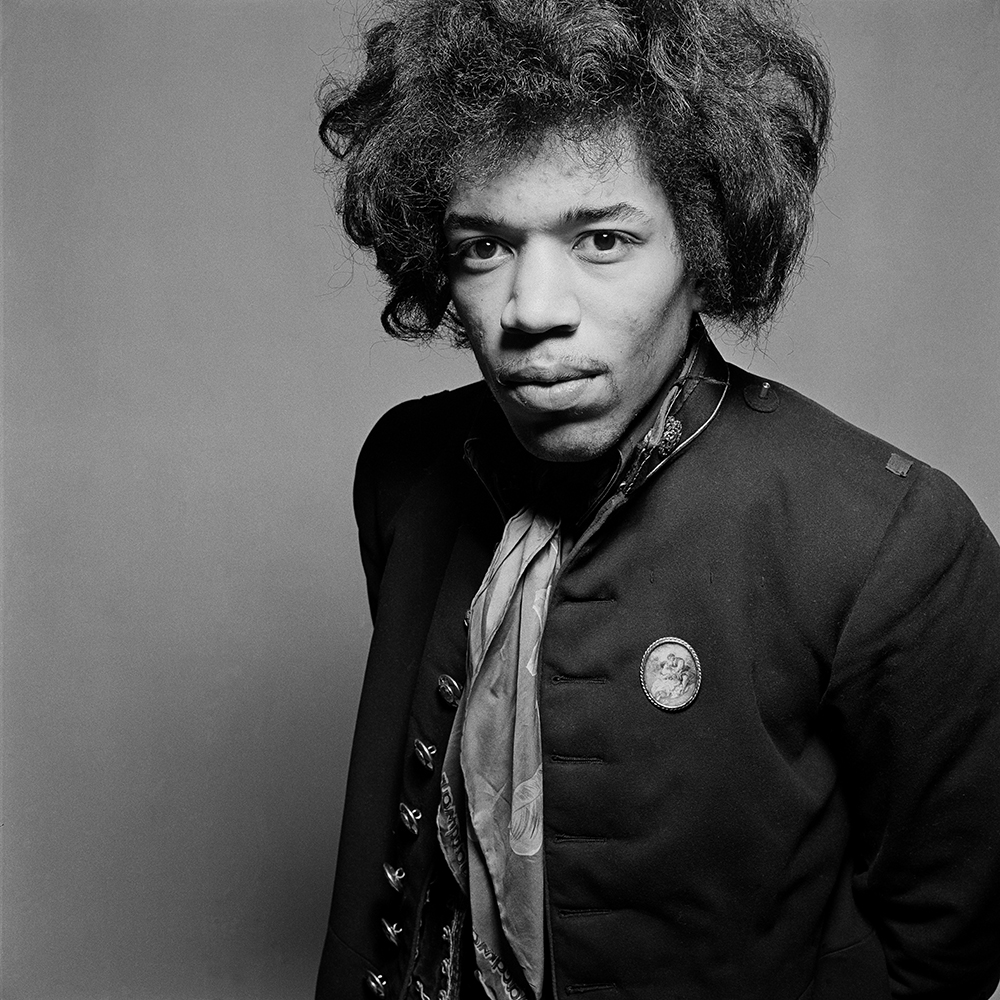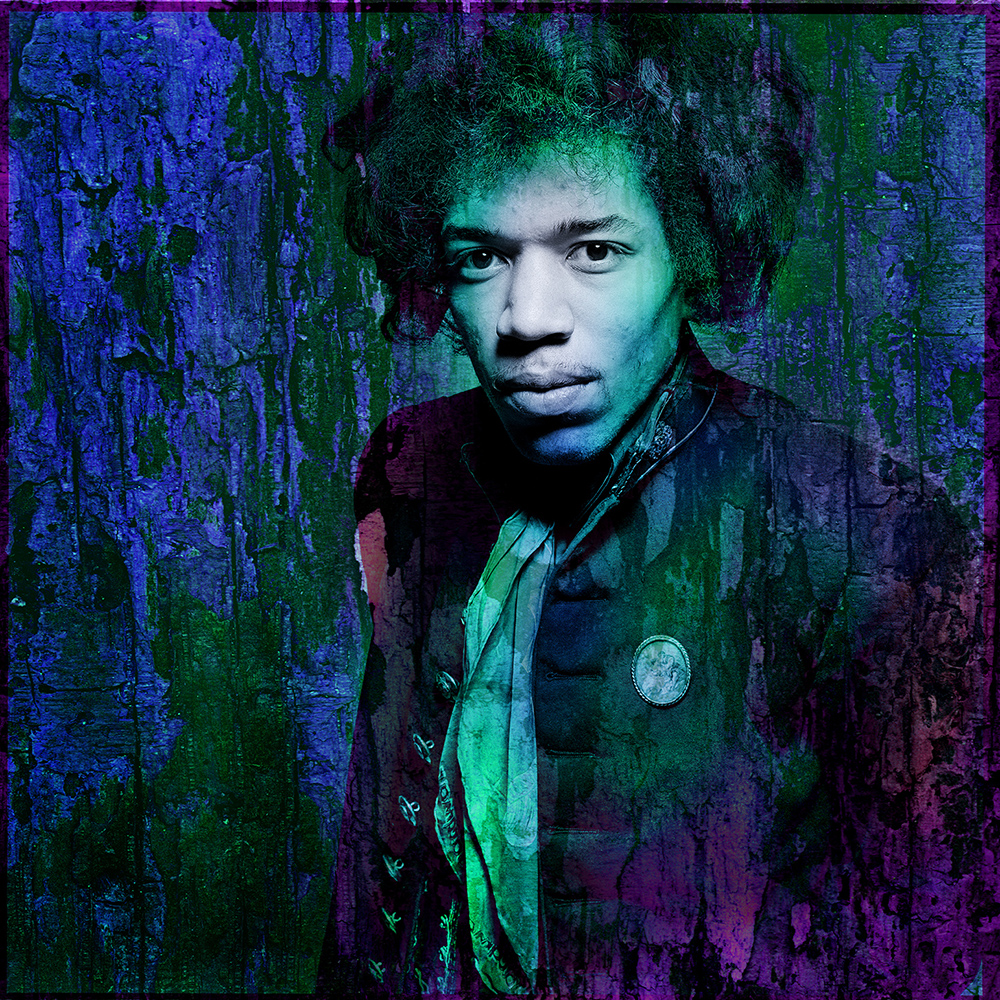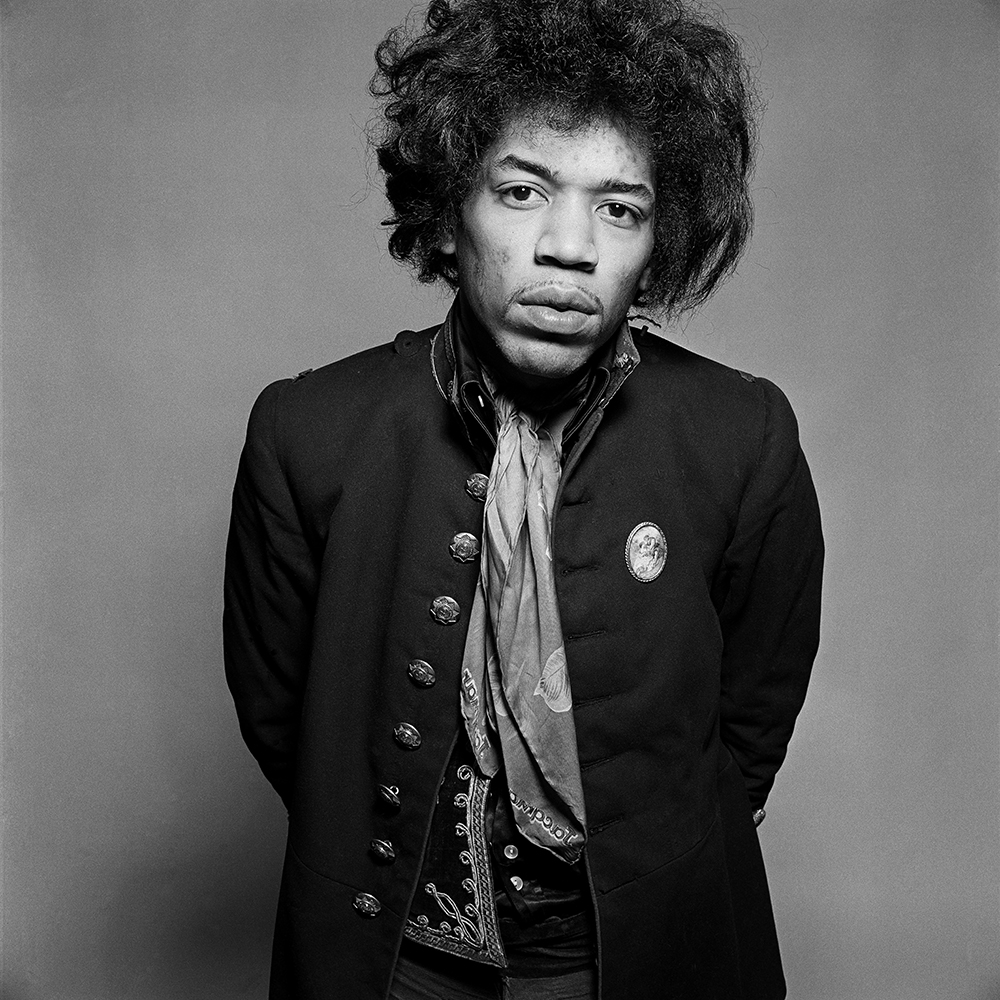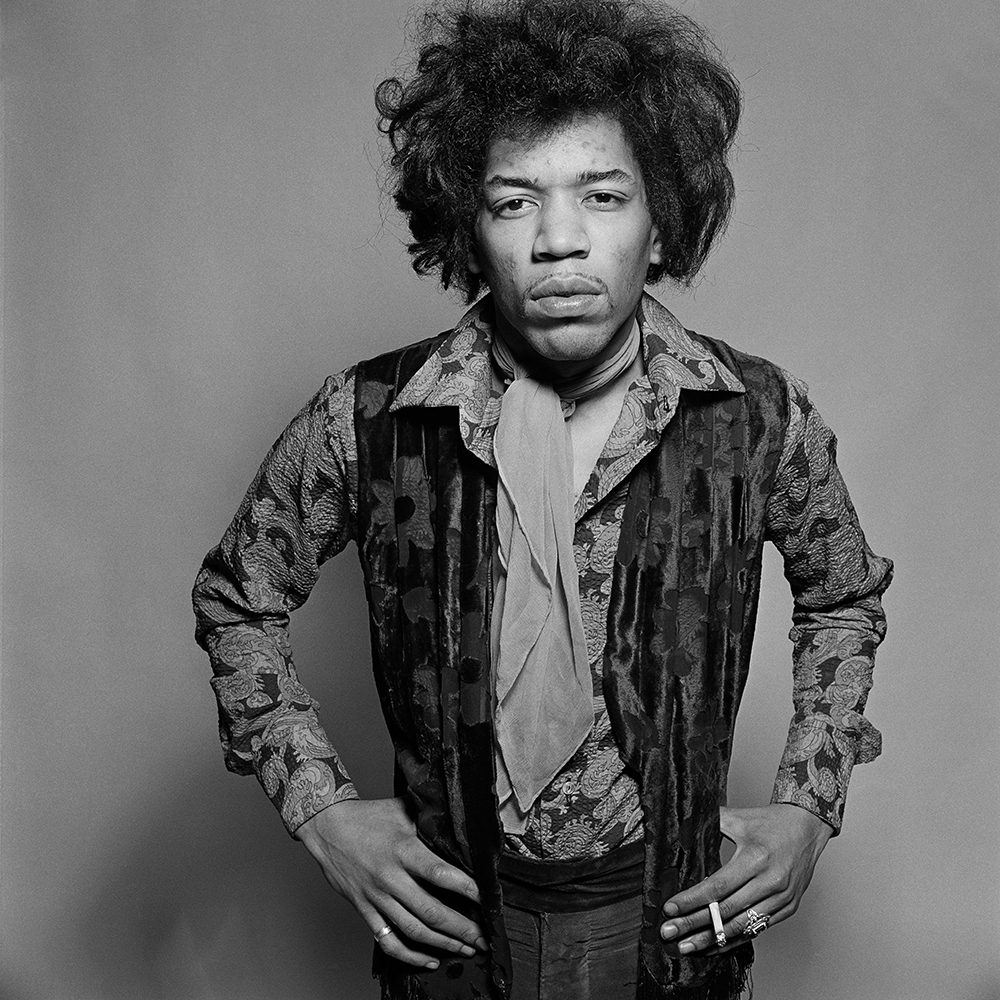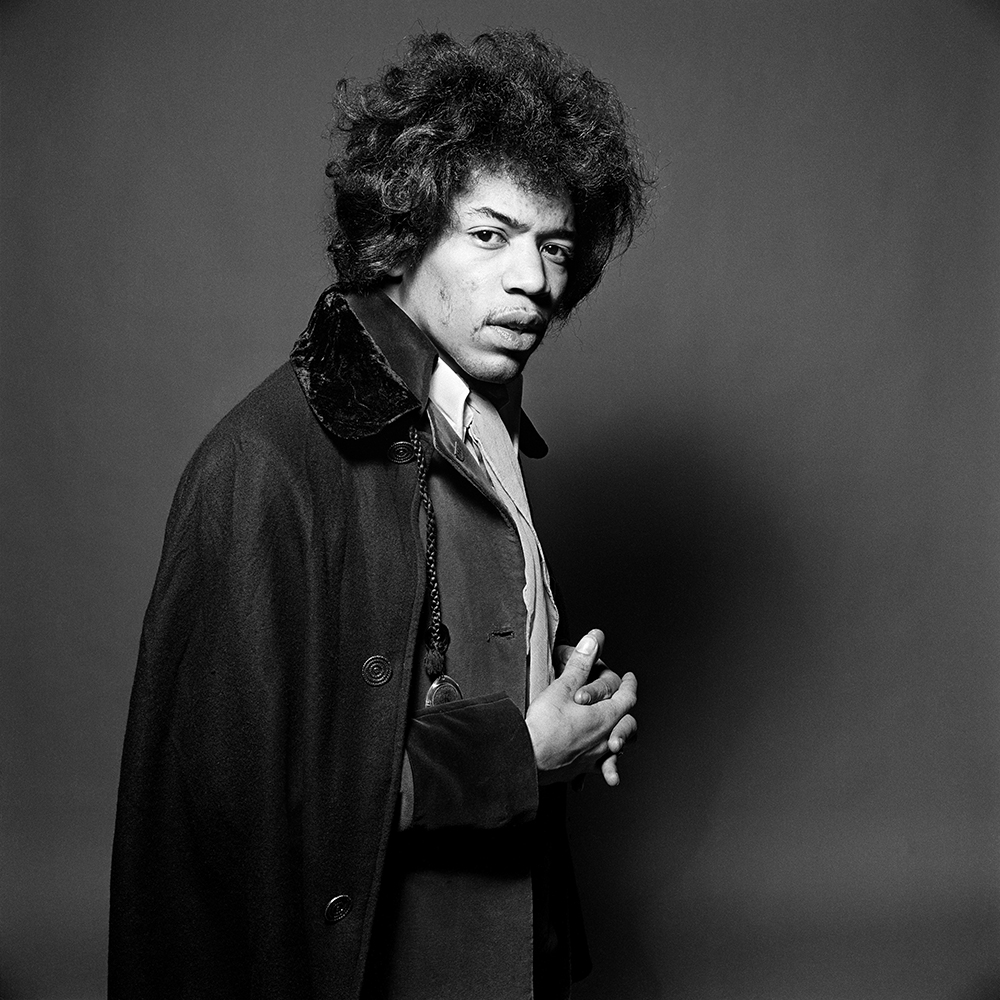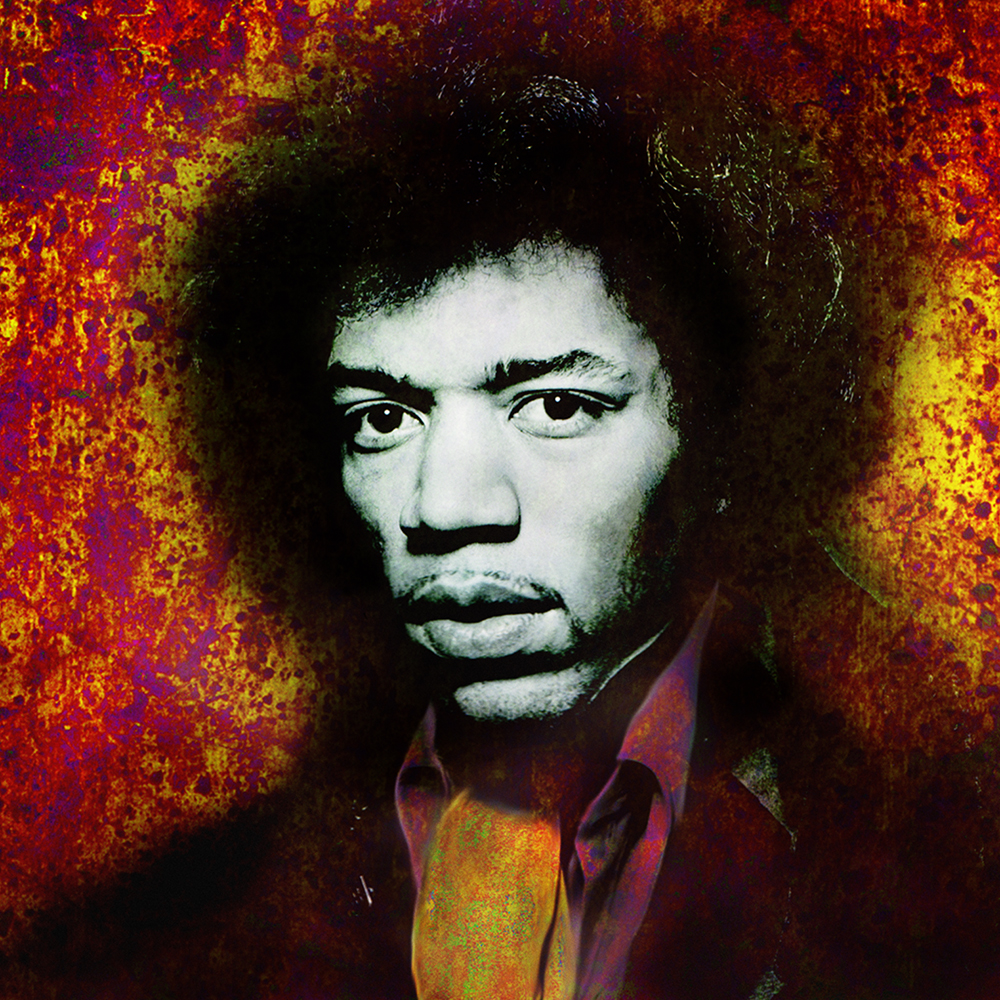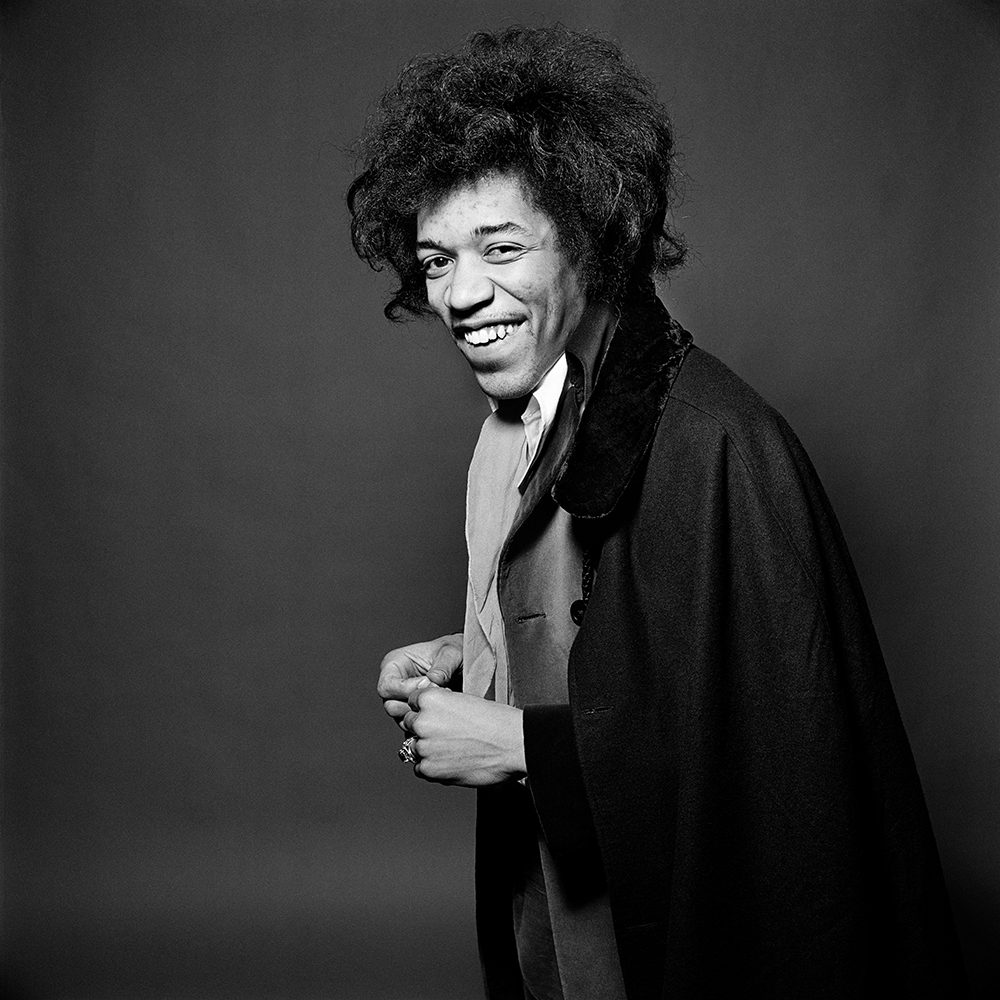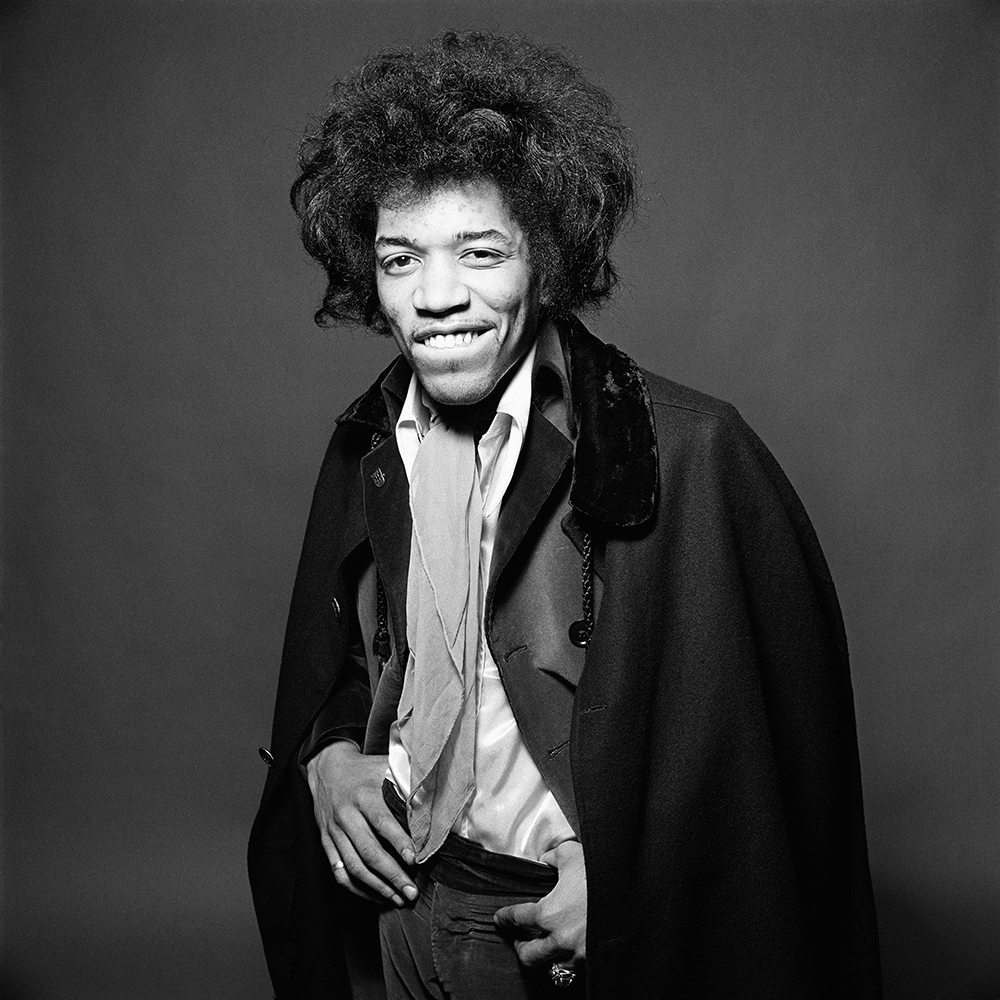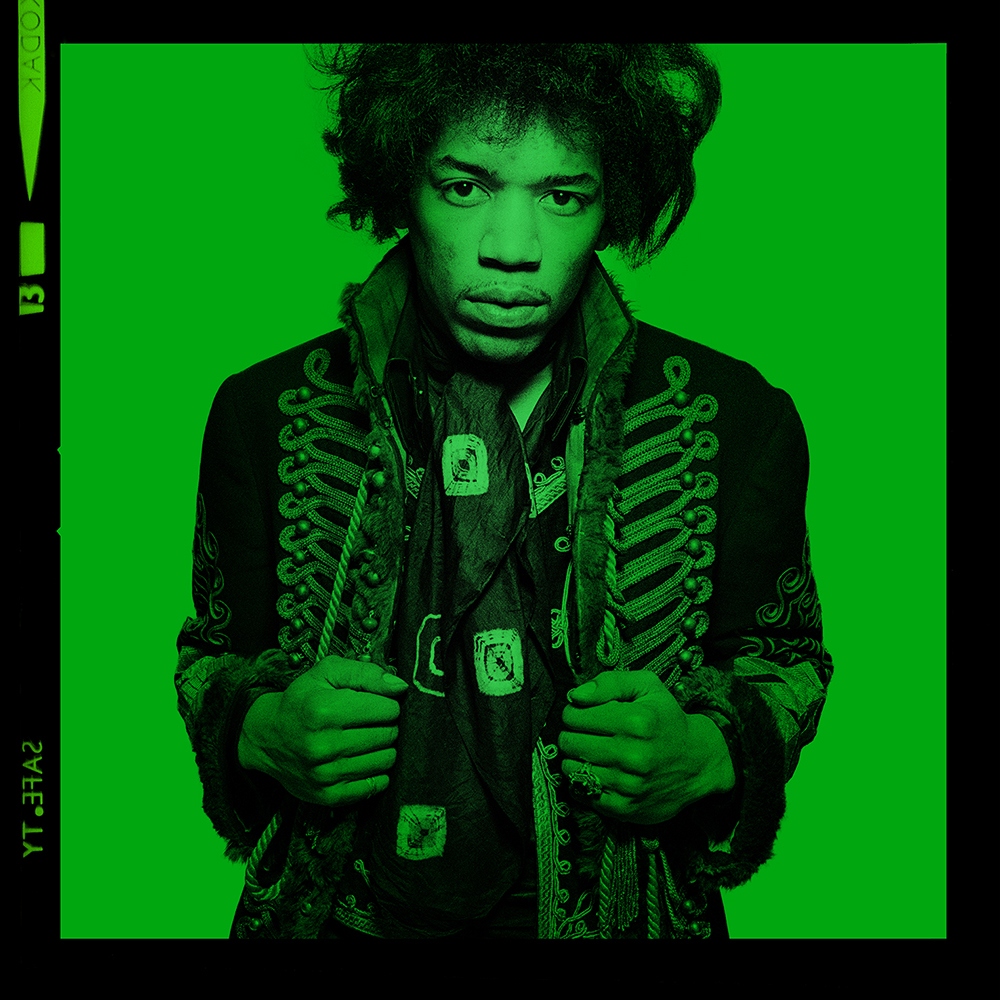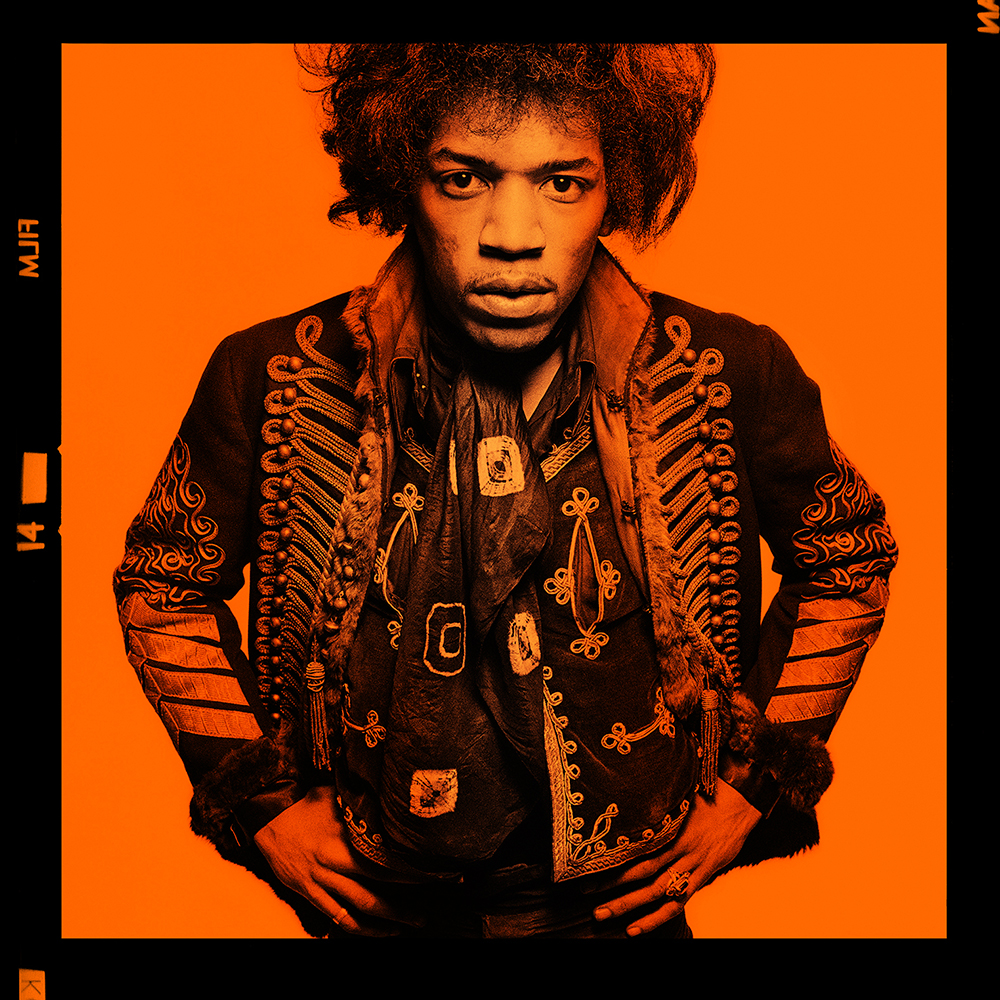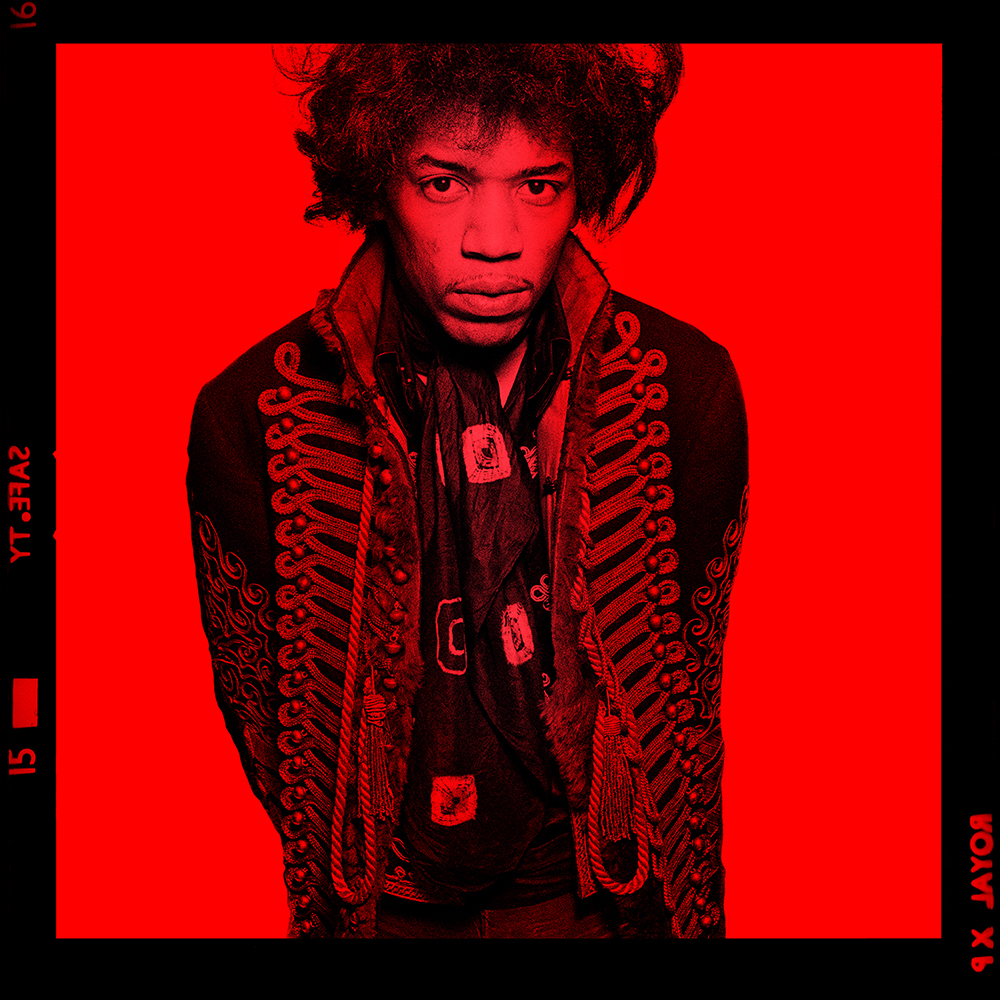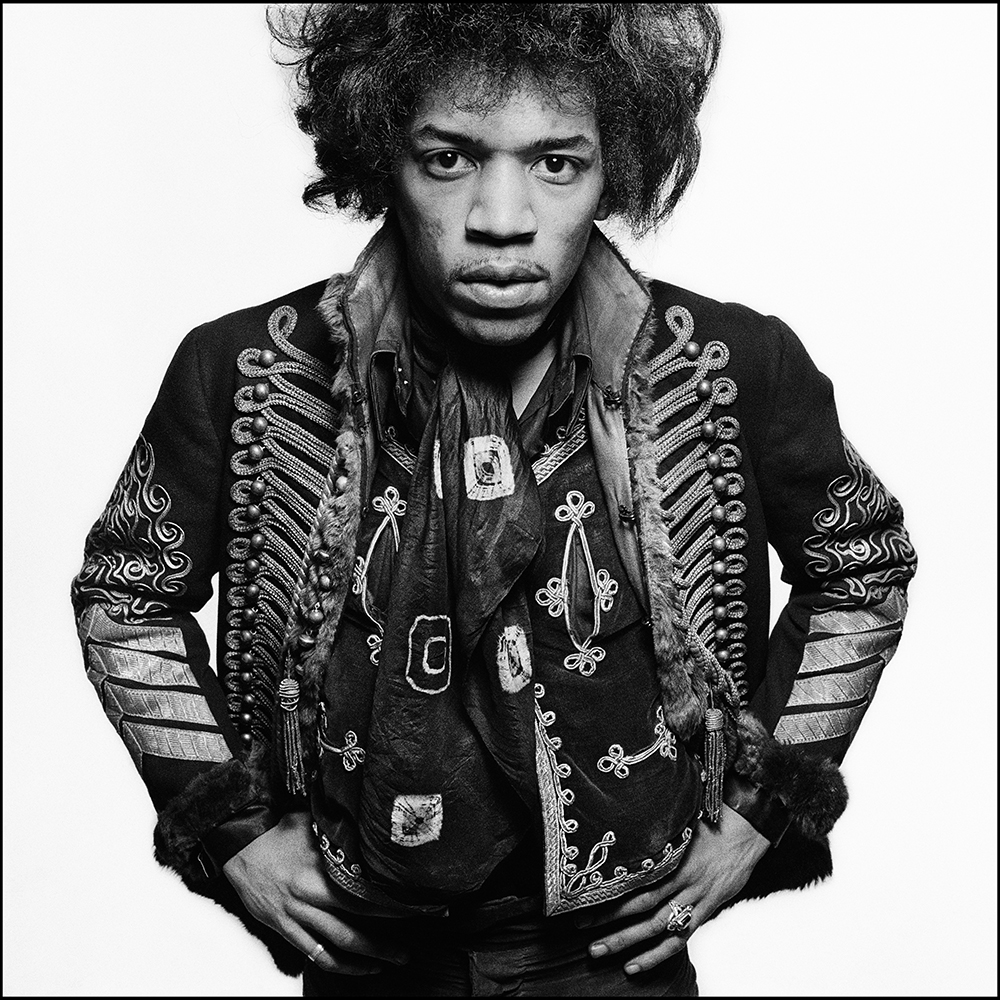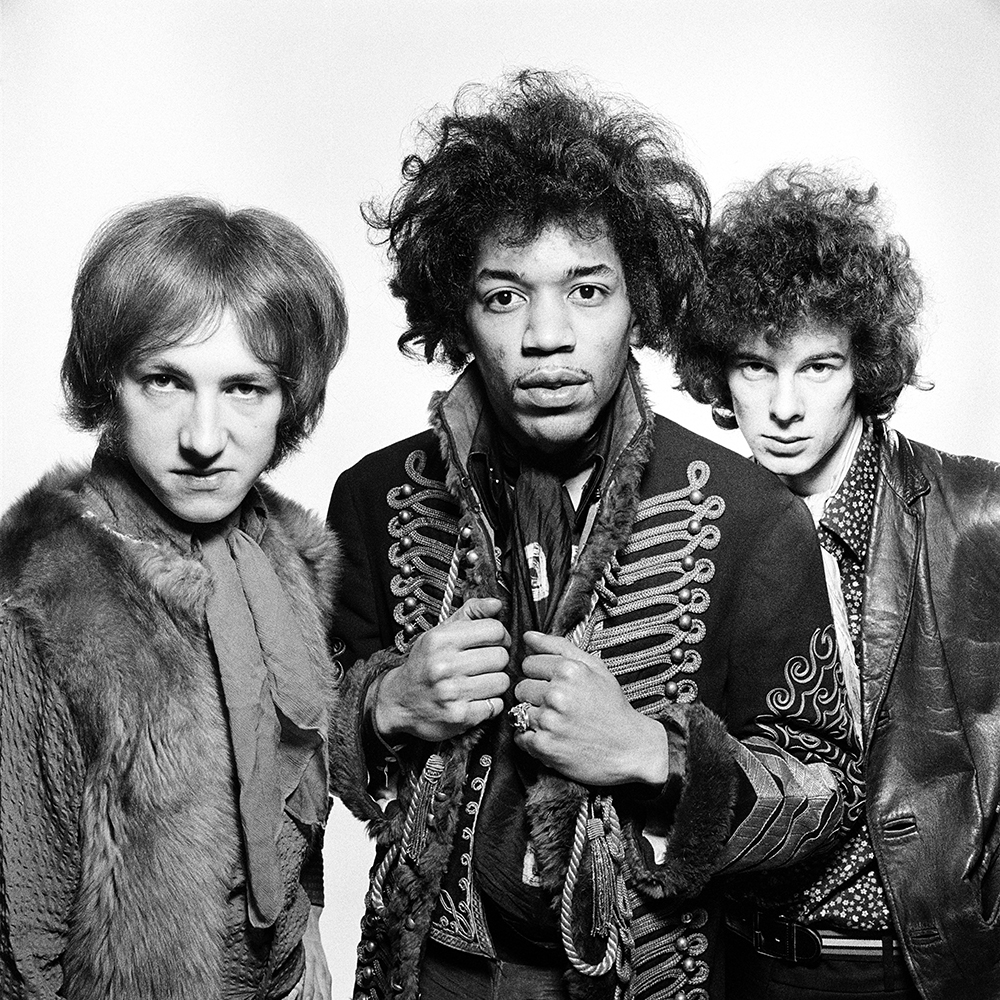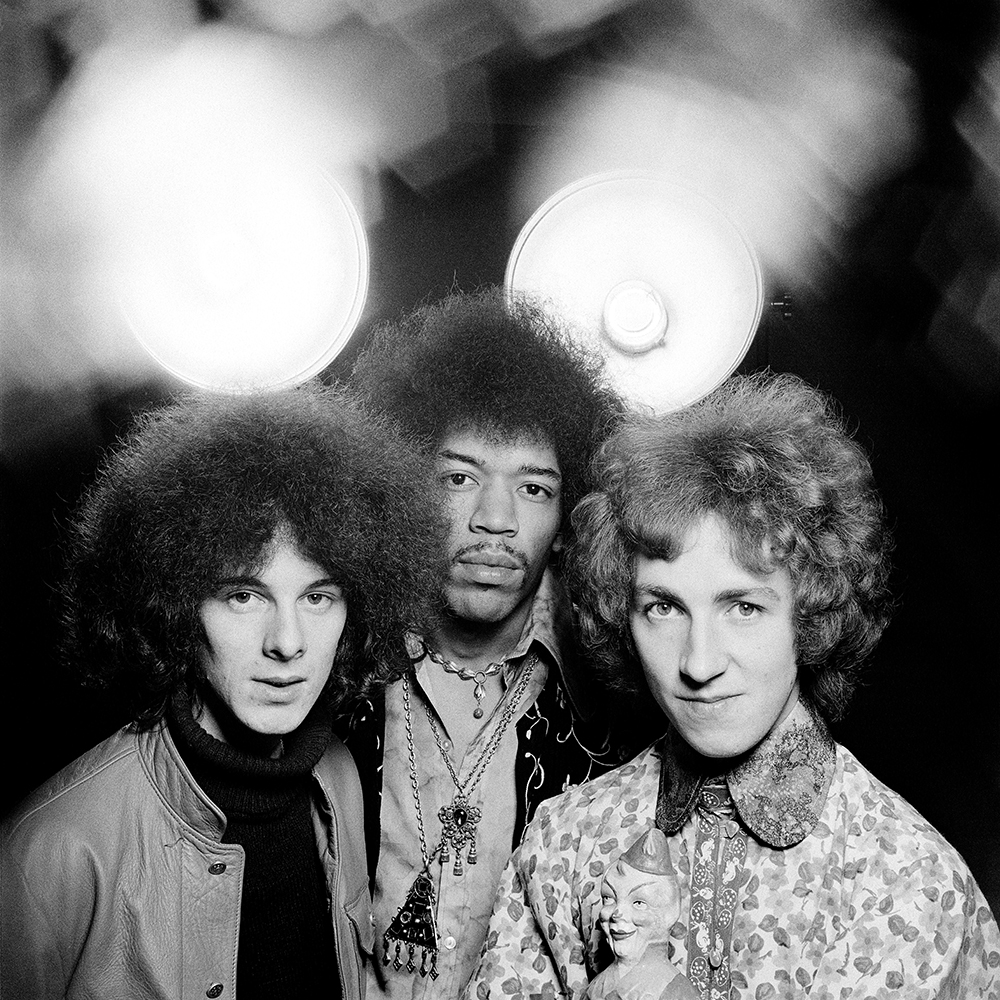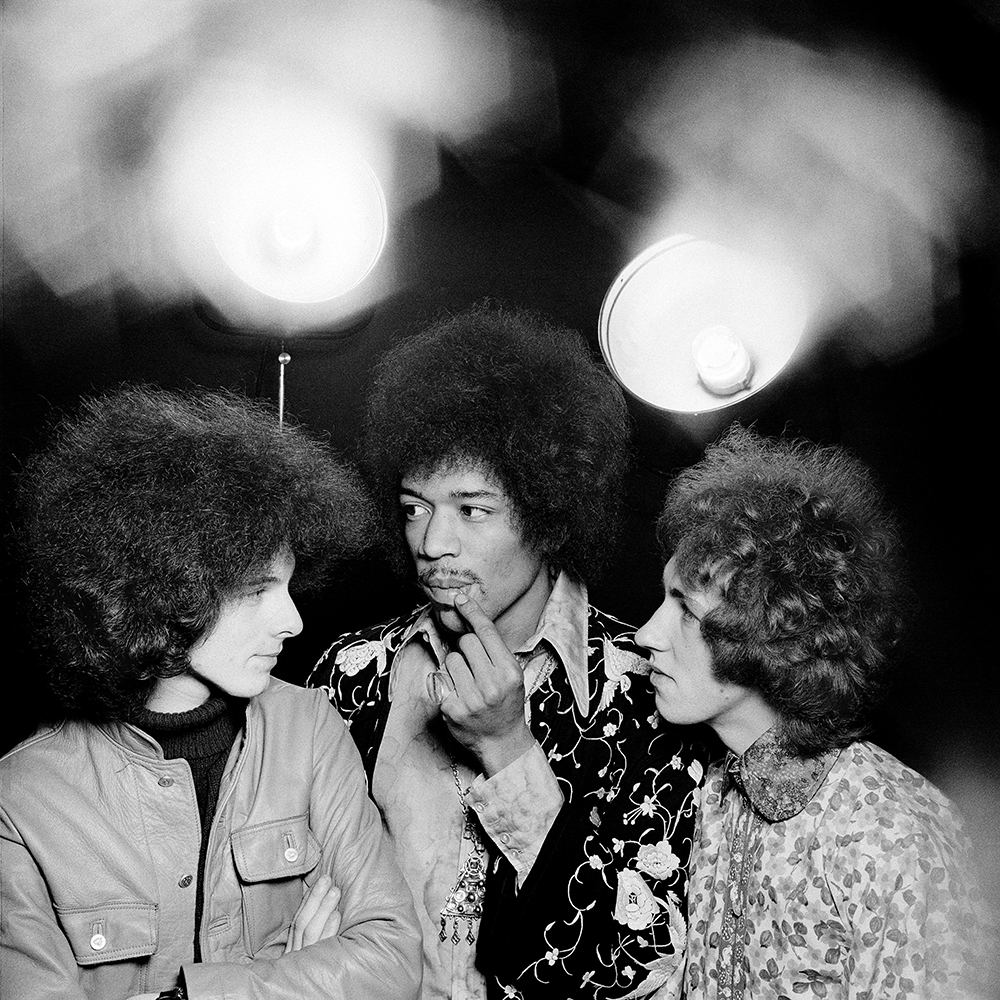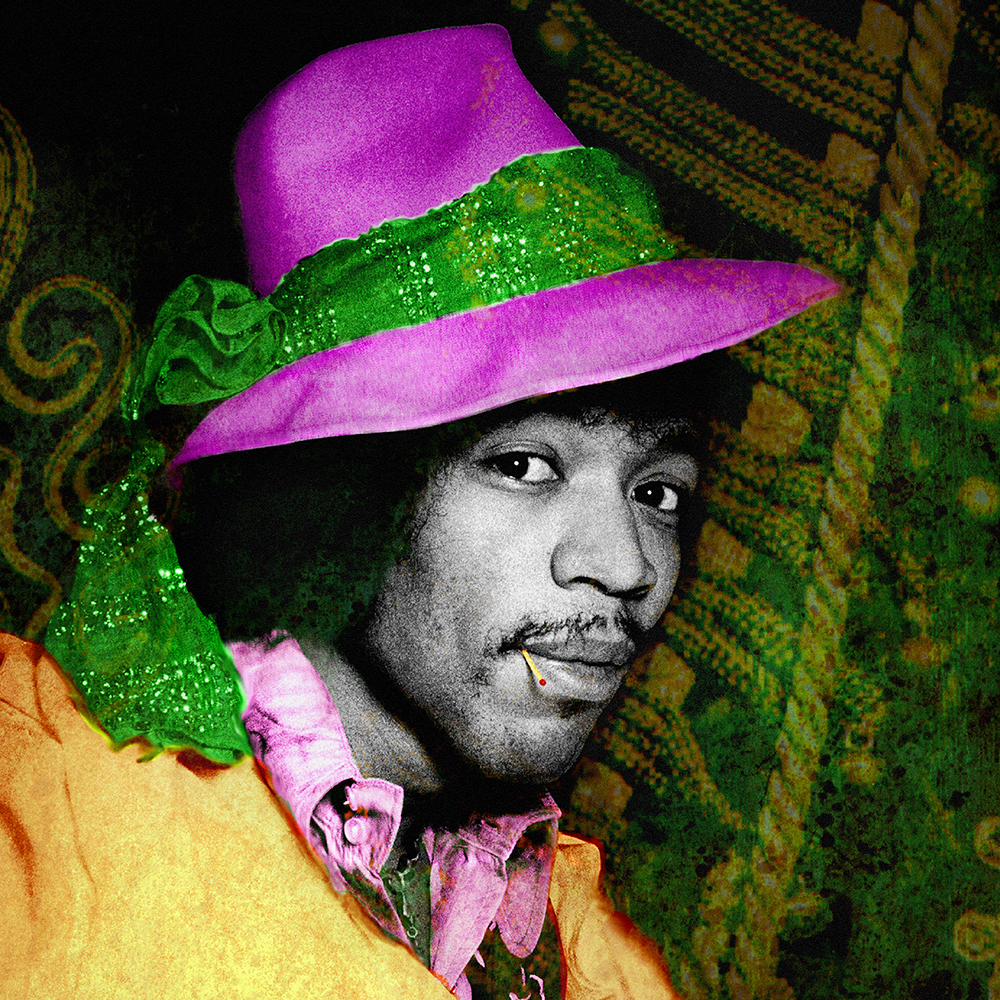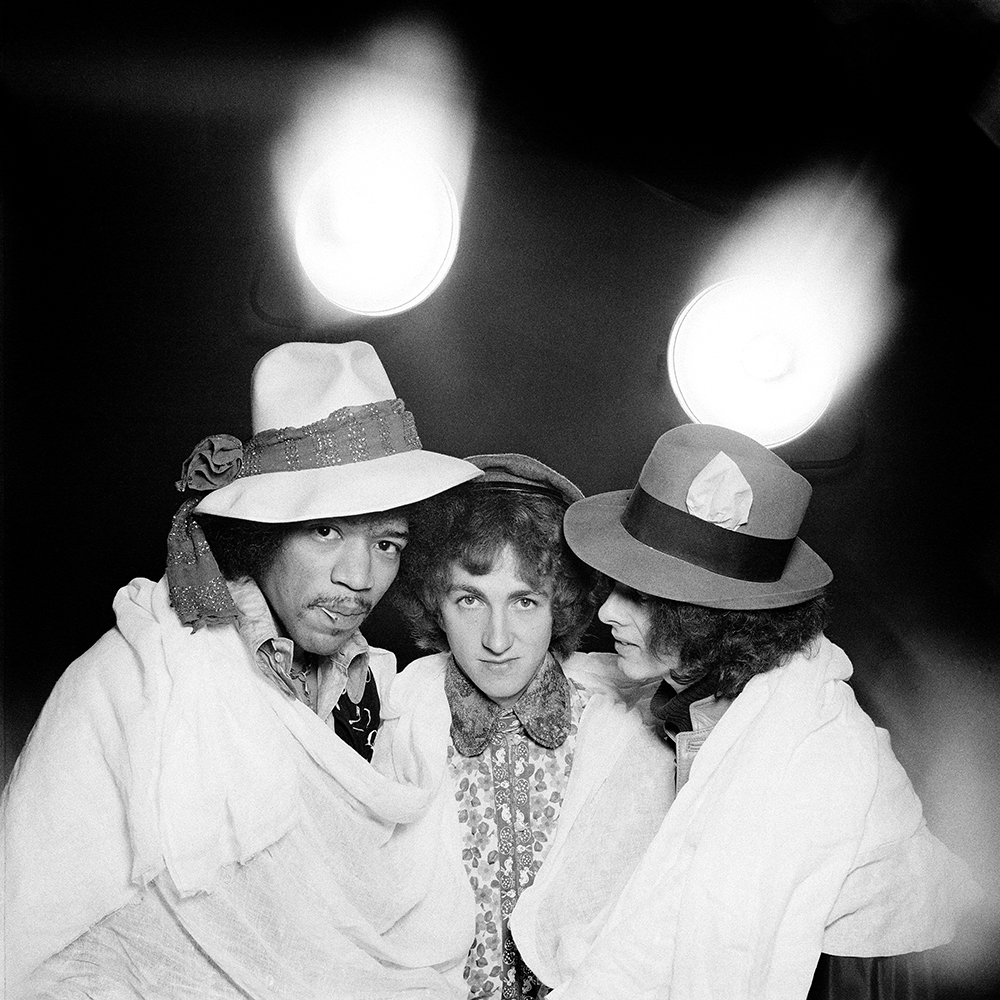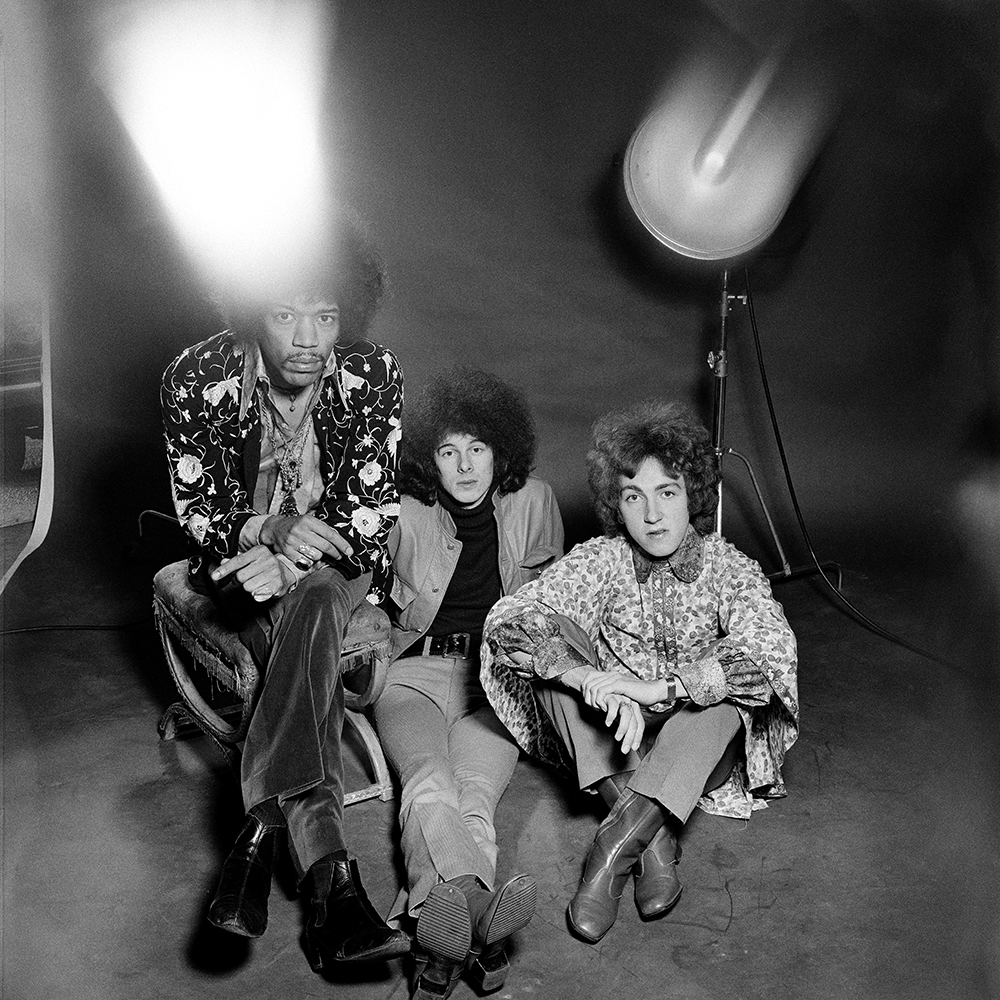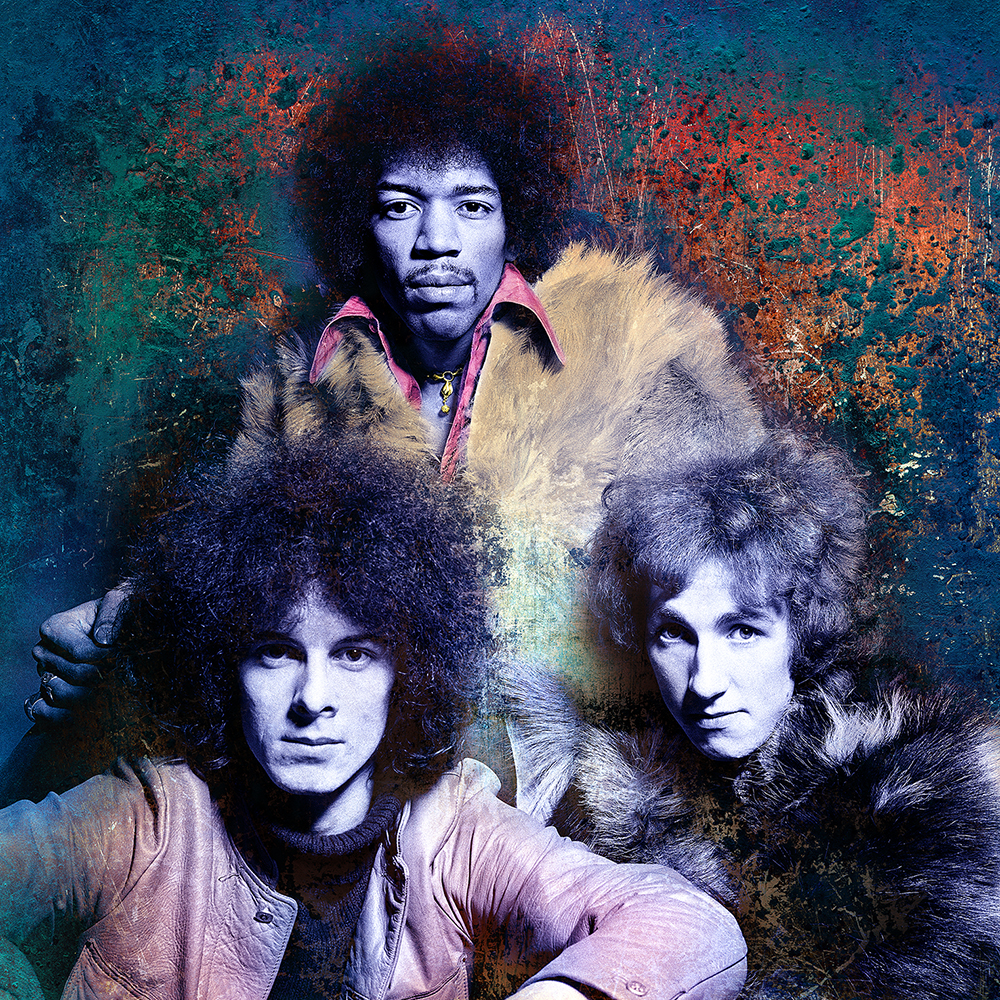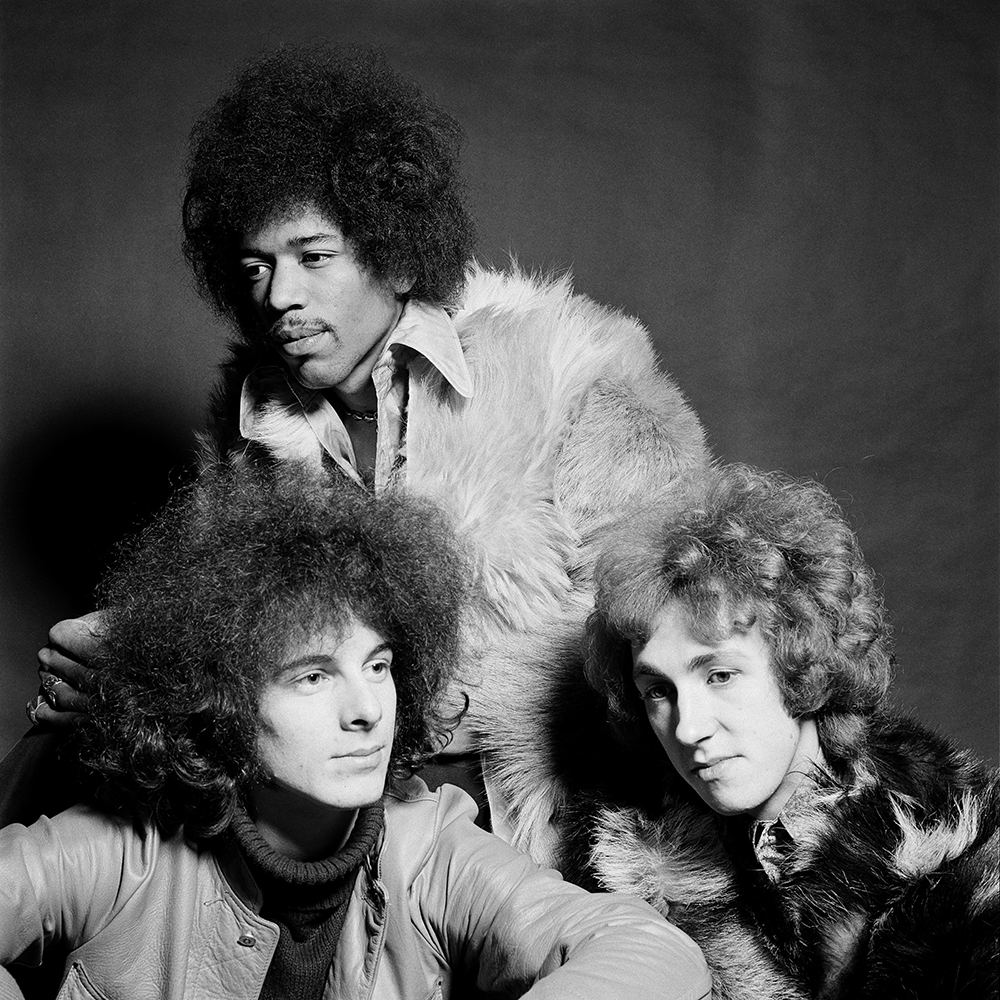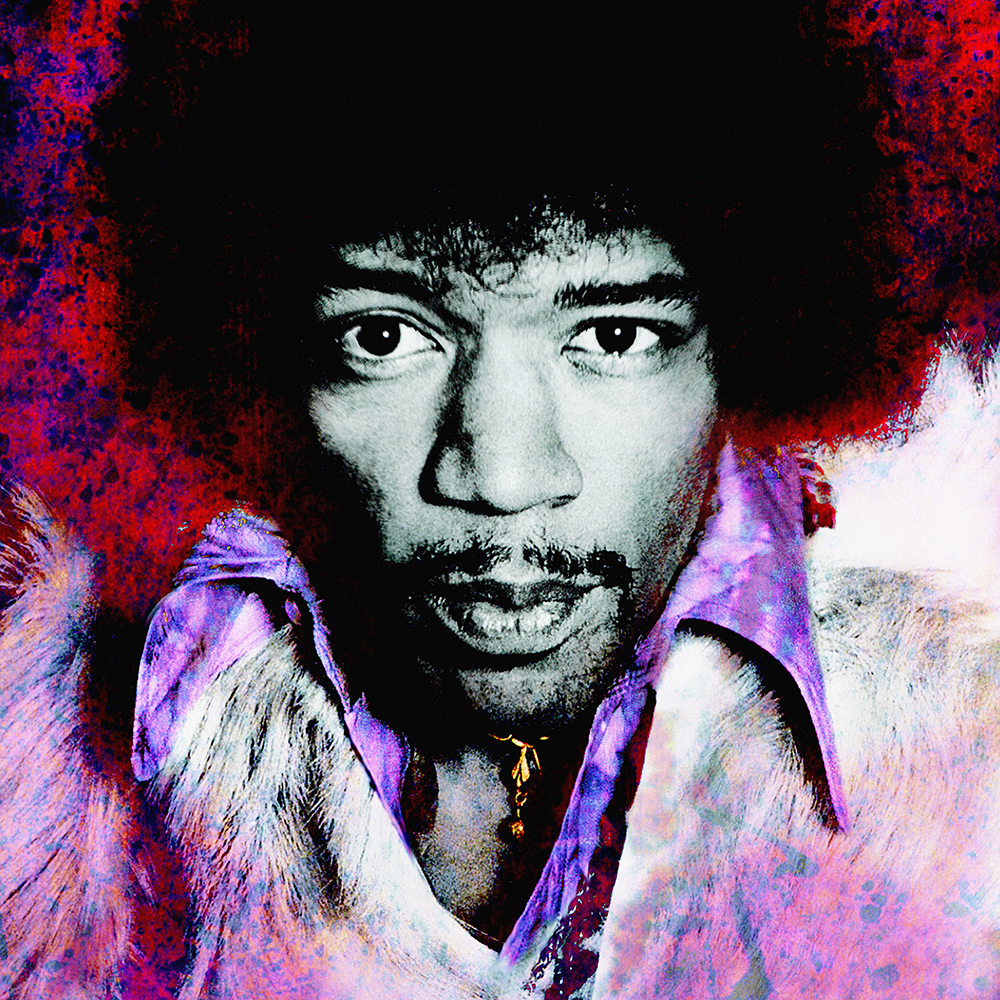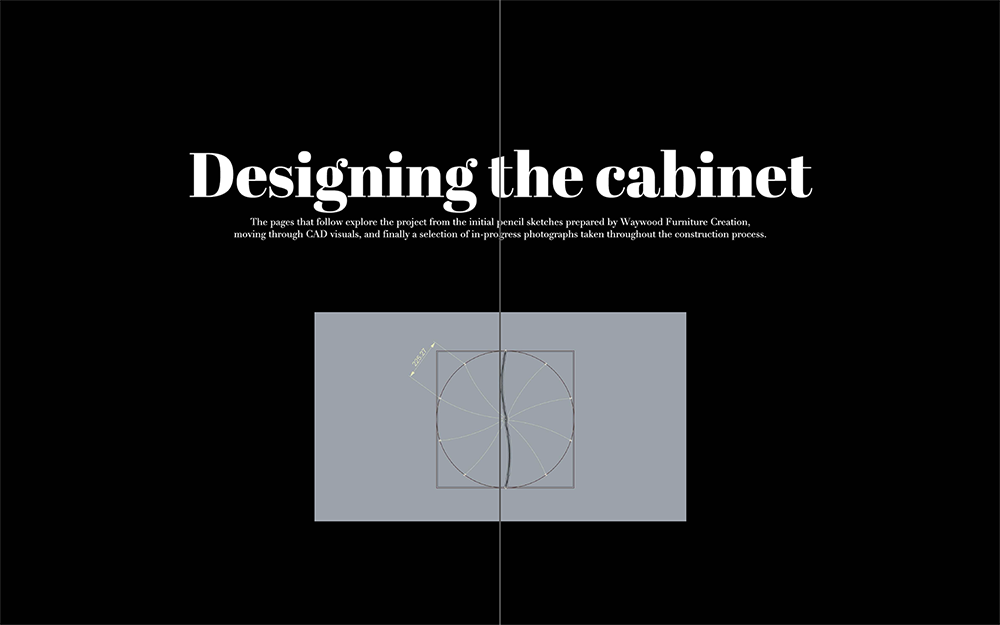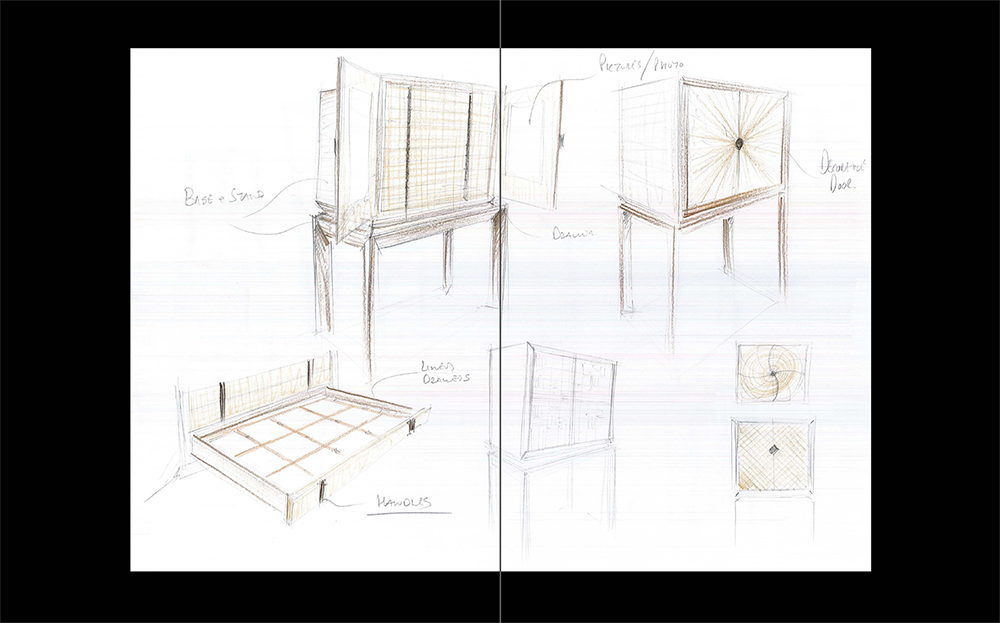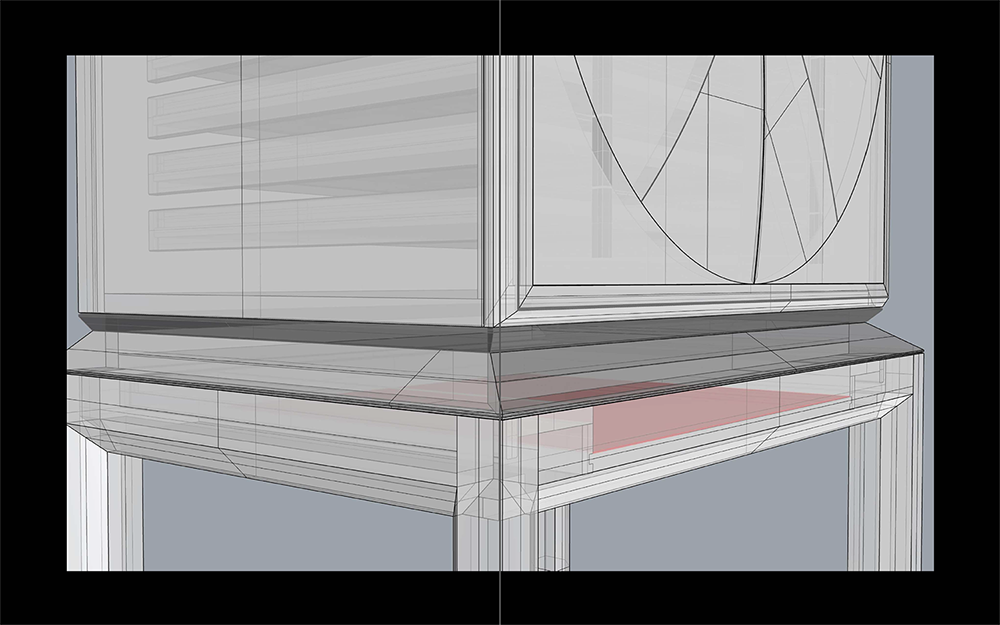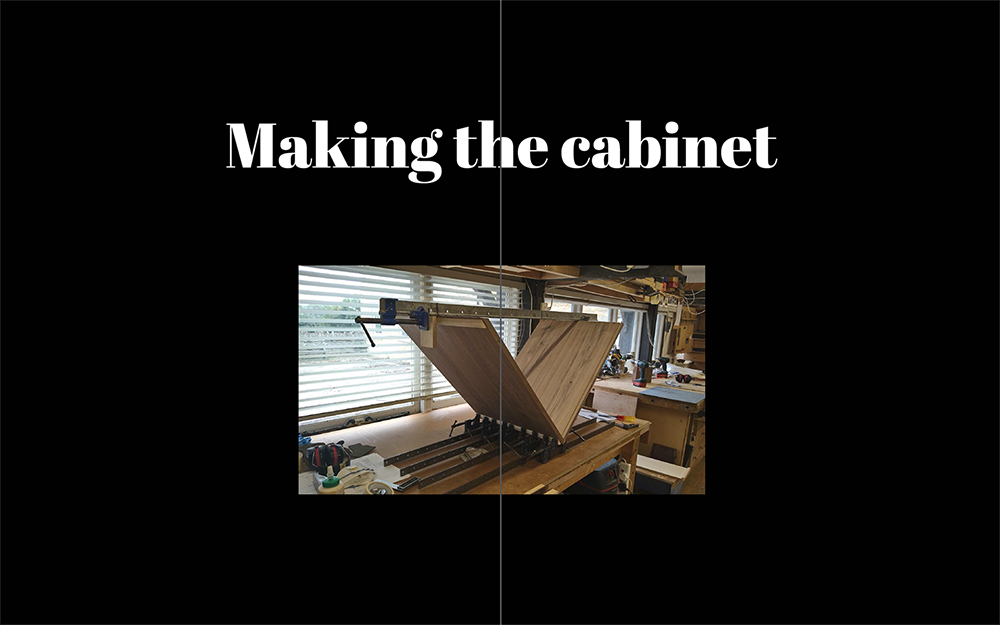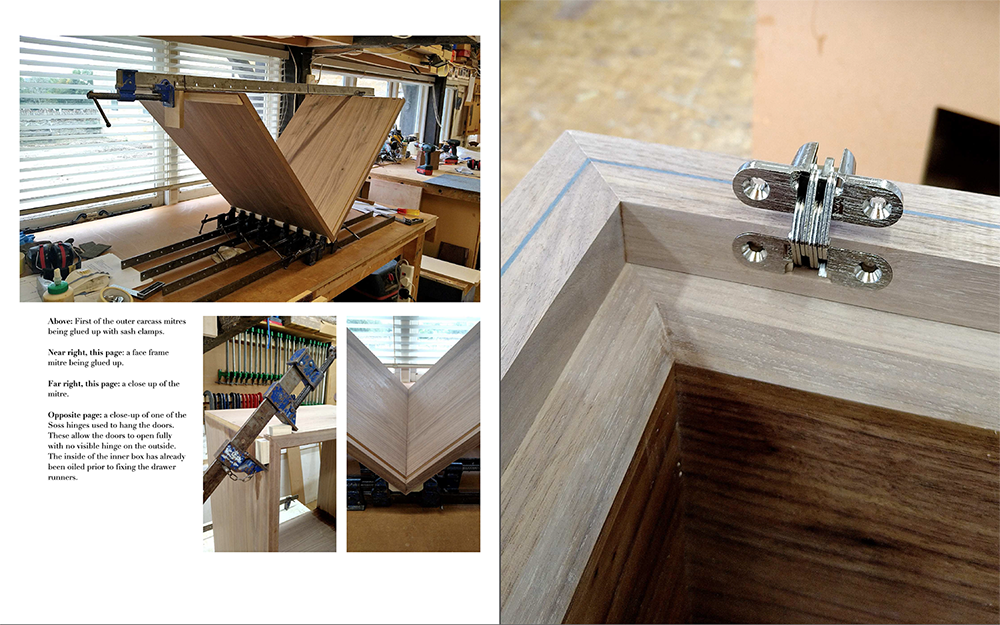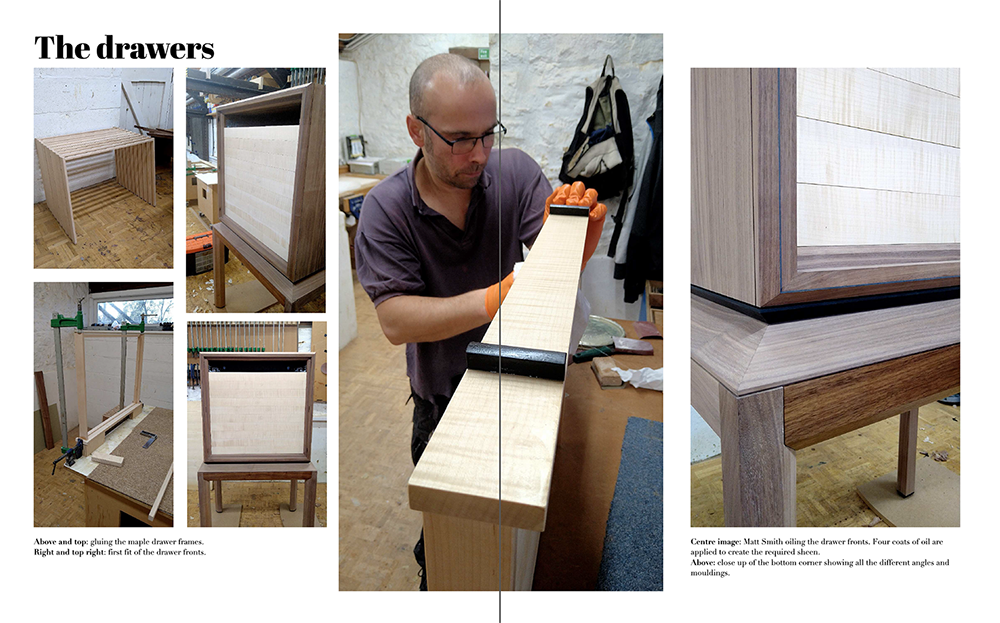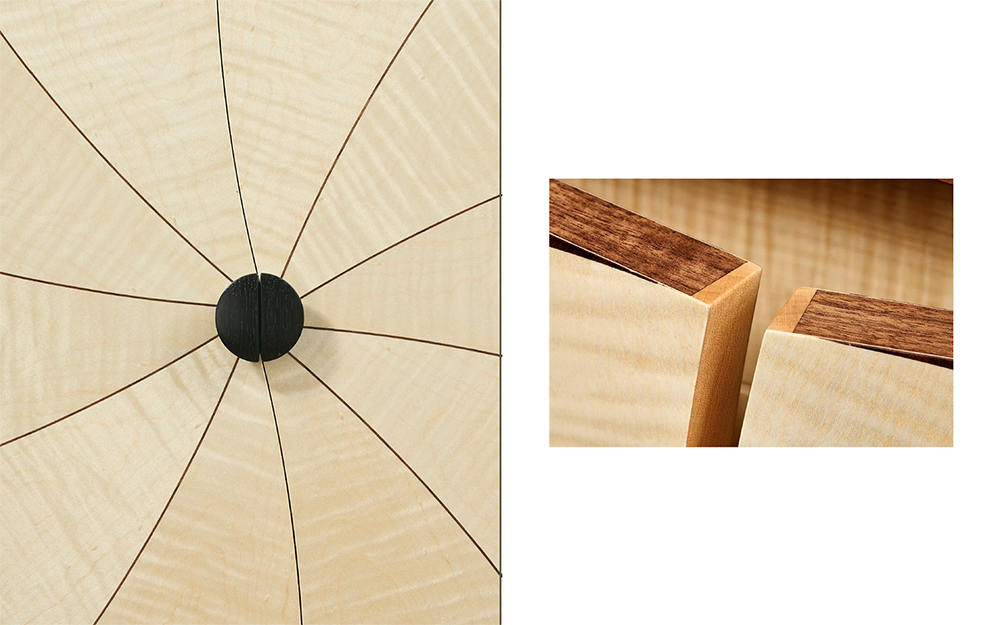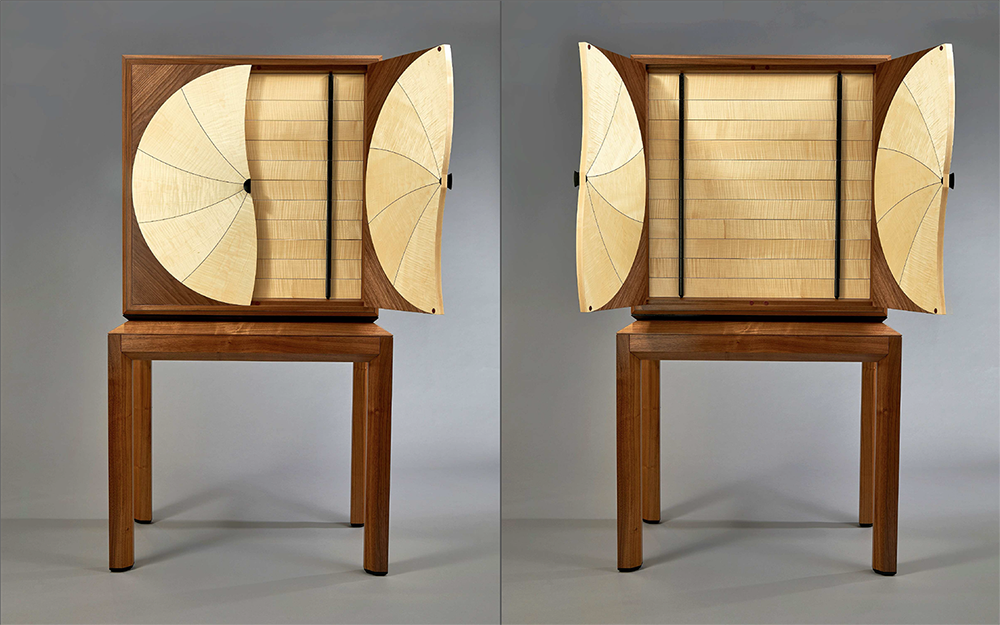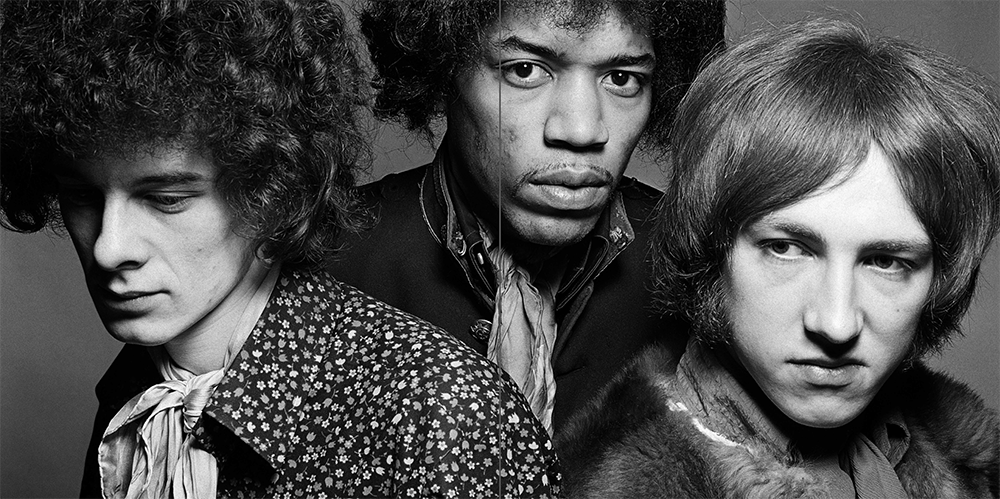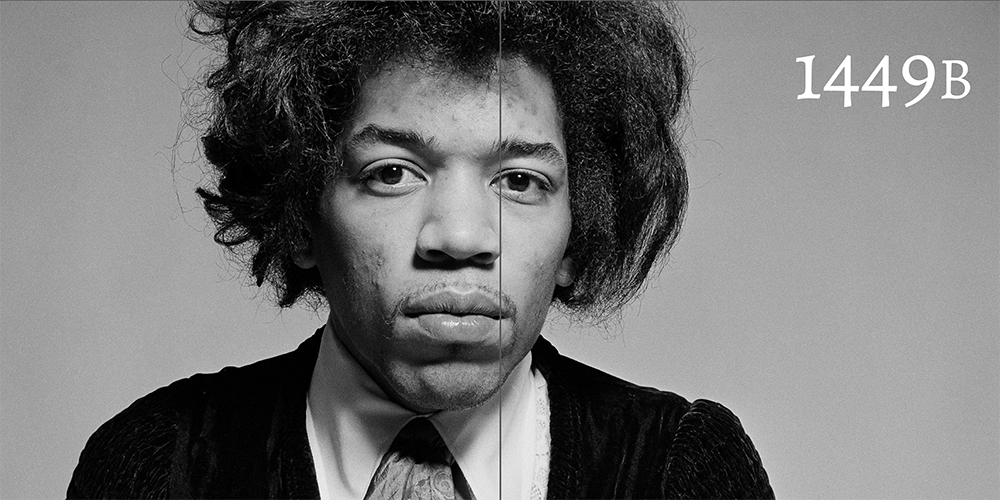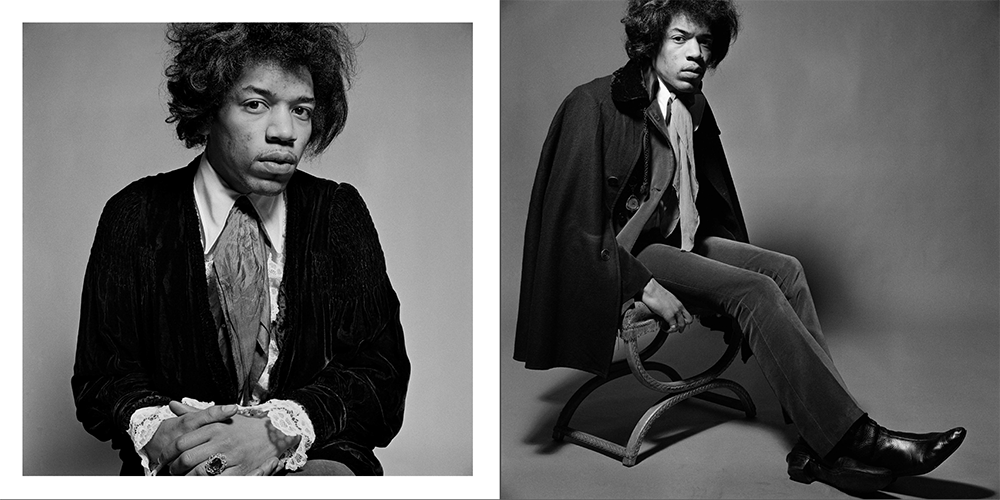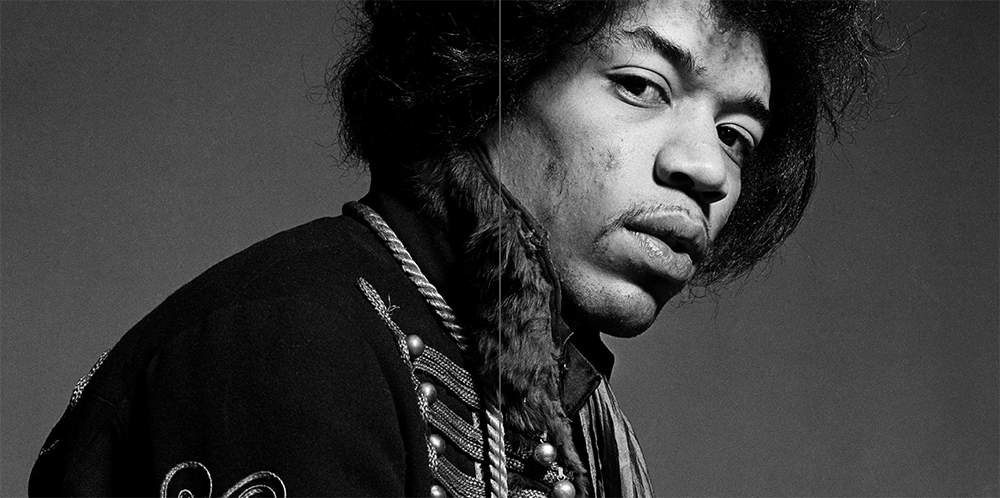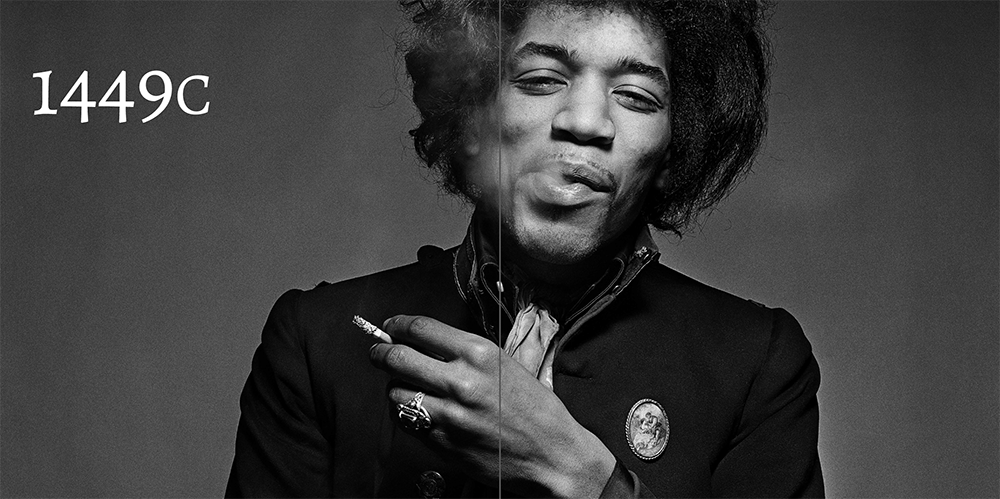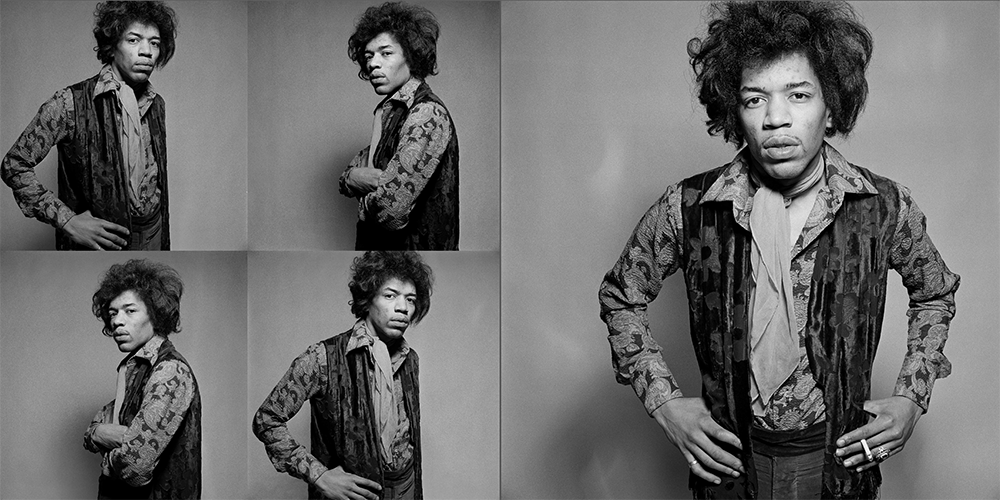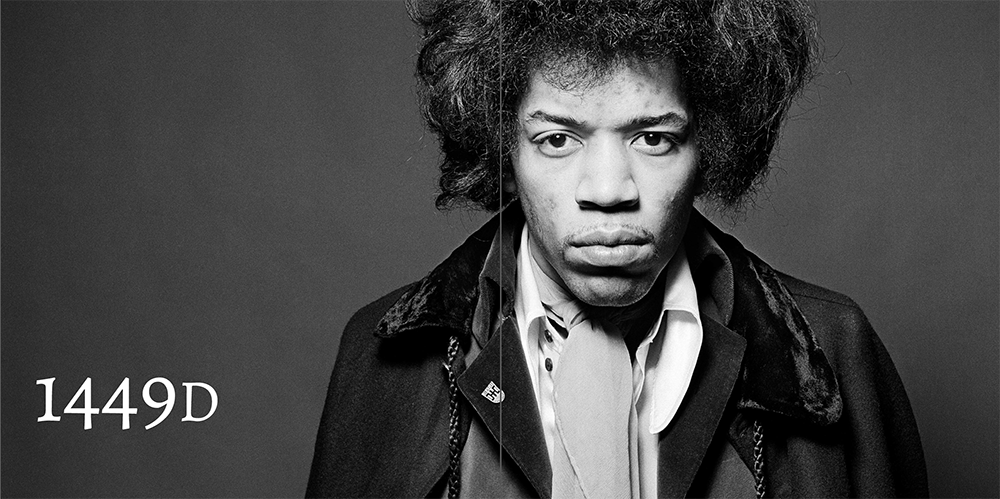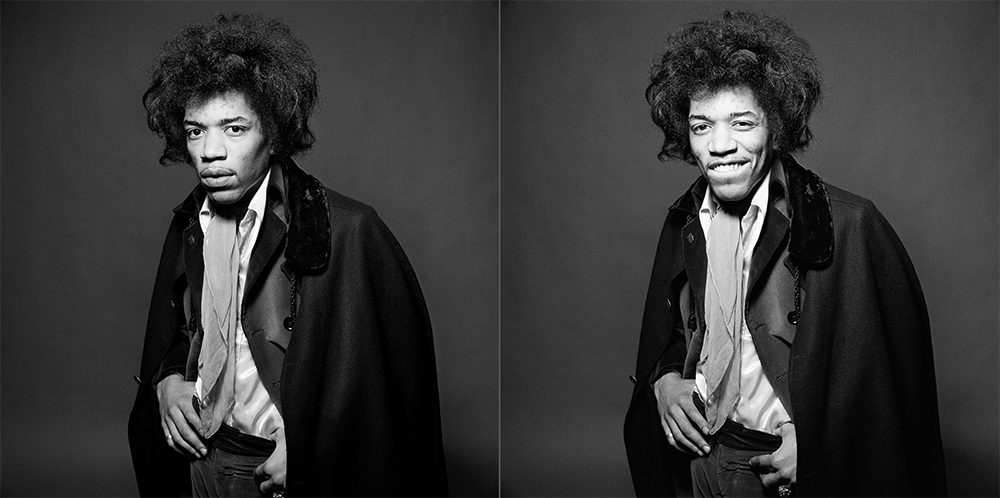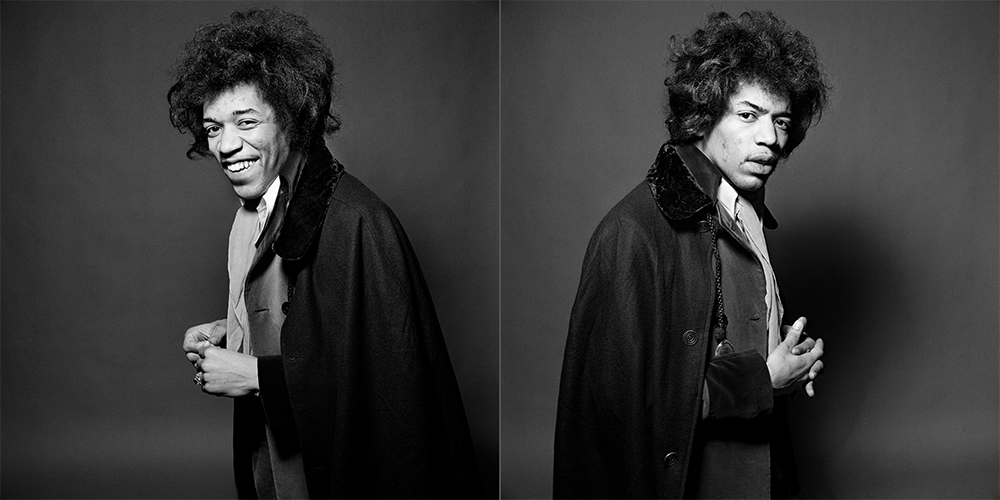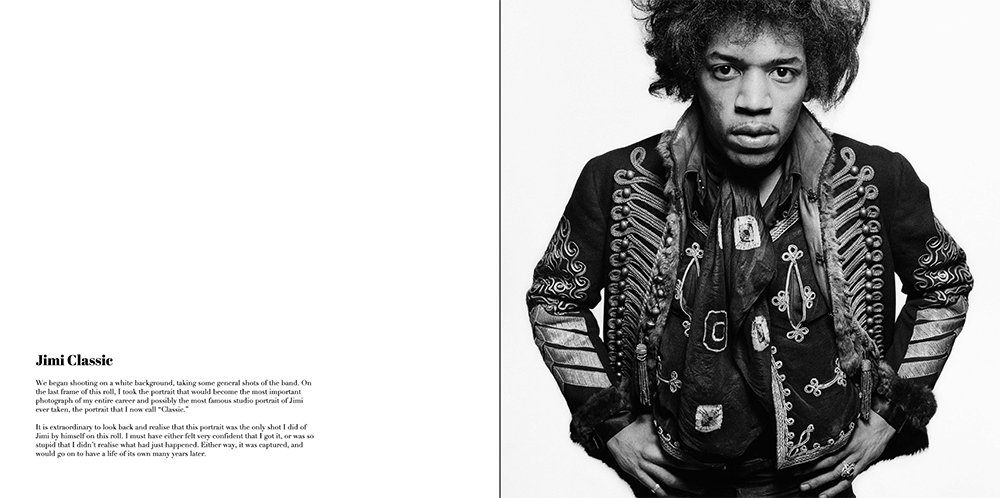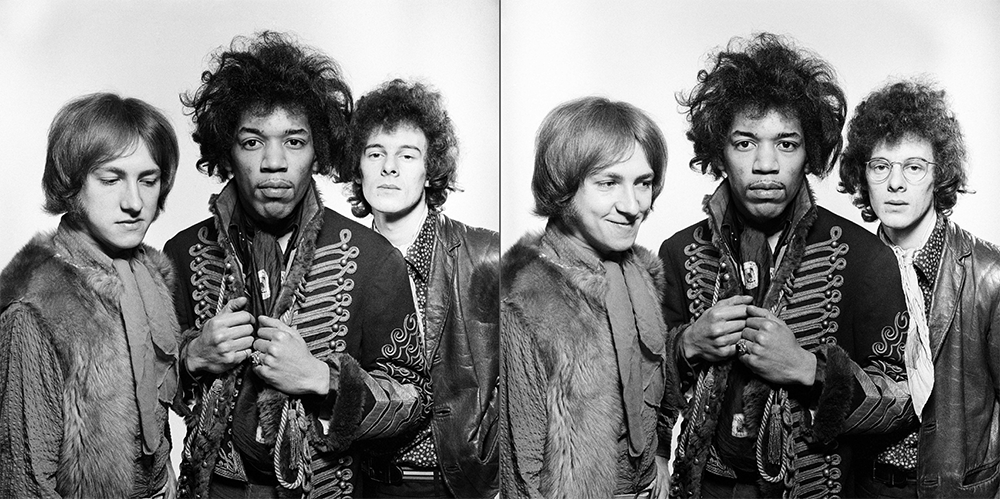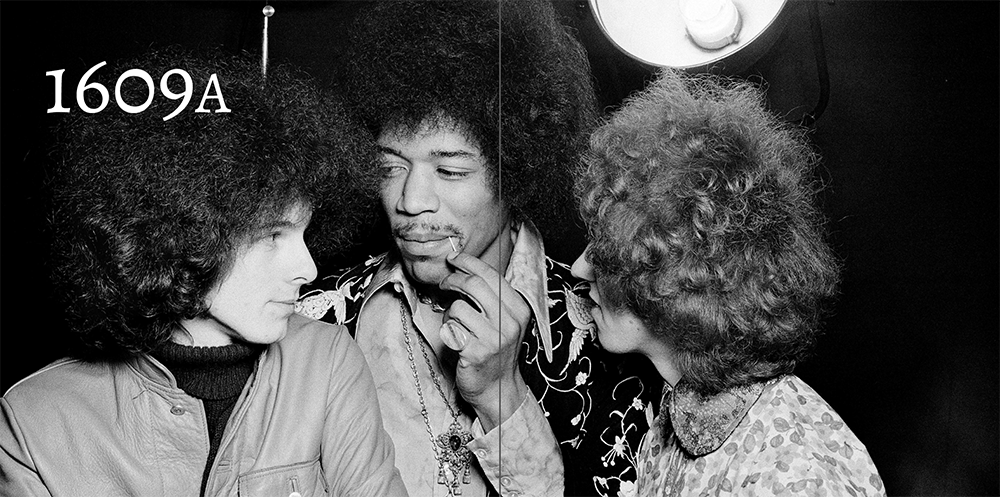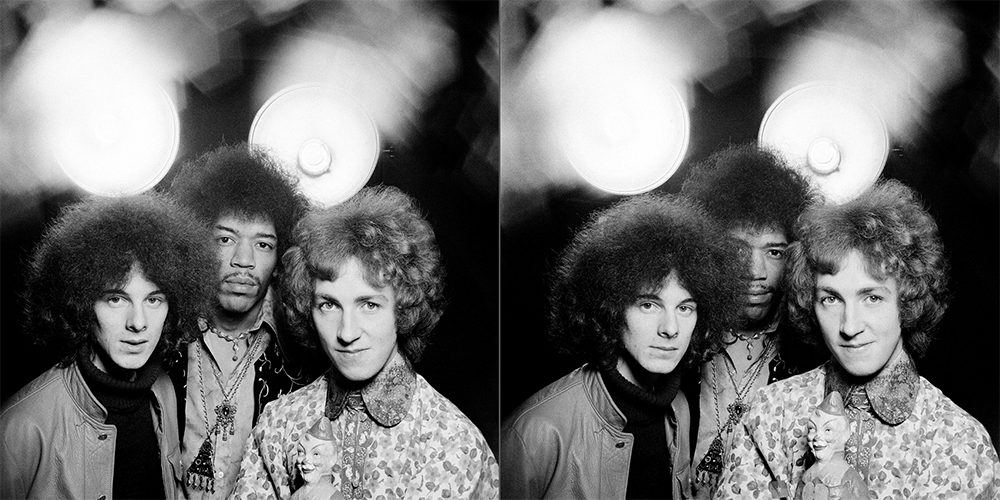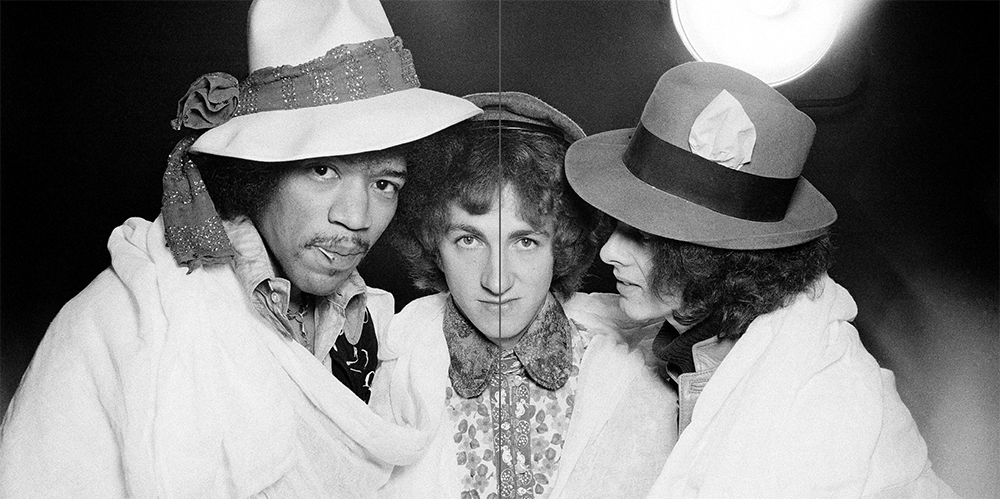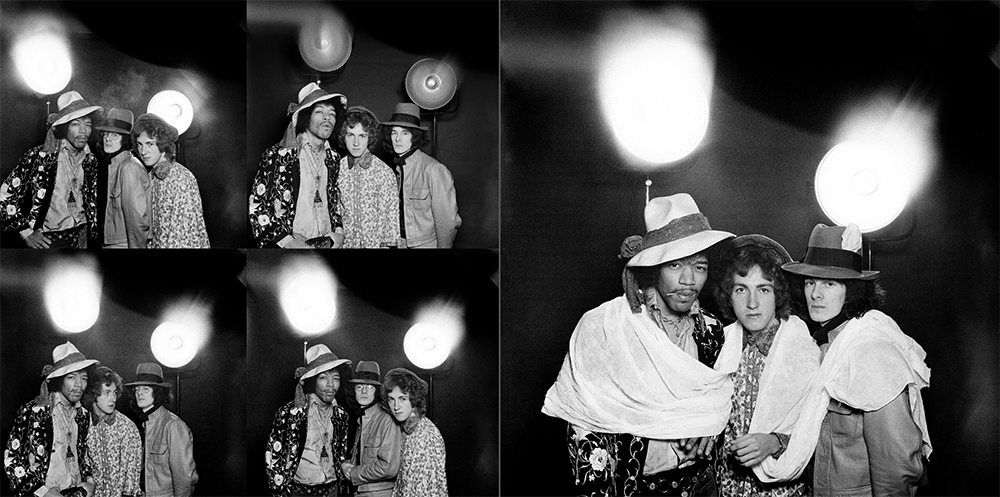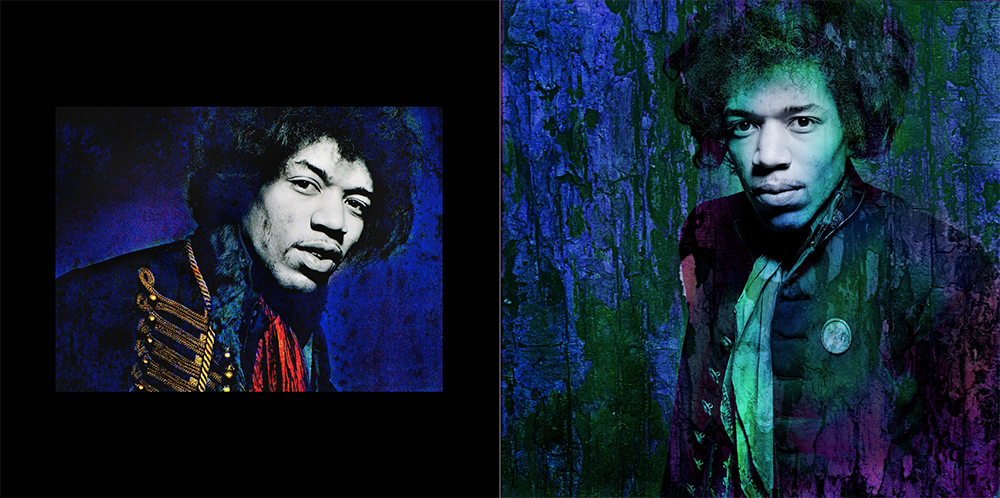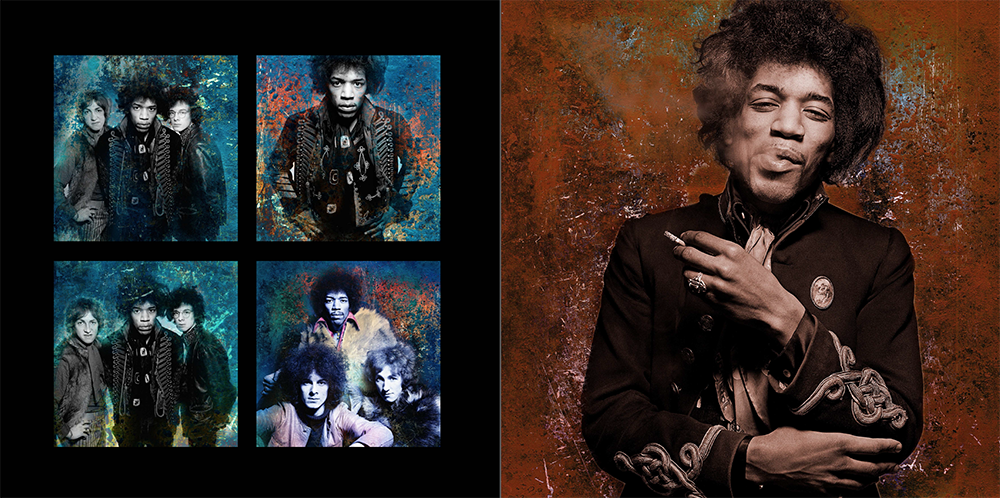The Treasury
Gered Mankowitz | Jimi Hendrix
Treasury
[ˈtrɛʒ(ə)ri]
NOUN
treasury (noun) · treasuries (plural noun) · Treasury (noun)
A place where treasure is stored.
A collection of valuable or delightful things.
A selection of images of The Treasury
Introducing: The Treasury
The Treasury is the ultimate collector’s cabinet for the completist collector.
There has never been anything quite like it before. The Treasury gathers together the entire unabridged archive of Jimi Hendrix photographs by Gered Mankowitz—one of the world’s leading music photographers—and presents that archive in an entirely new and ground-breaking way. The Treasury contains 120 individual ChromaLuxe photographs, eight silver gelatin contact sheets and two bespoke books. It is the alpha and the omega.
Unifying these contents called for a beautiful, elegant piece of furniture to house the collection. We wanted this to be an exquisite handmade cabinet, made using the finest materials, and with innovative design features—all working in harmony with the contents. The end result had to be an object that would endure for the ages.
We have been fortunate to work with the team of award winning furniture makers at Waywood Furniture Creation, based in Oxfordshire, led on this project by senior designer Clive Brooks, and his colleague and craftsman Matt Smith. They have created a beautiful collector’s cabinet which, quite simply, takes your breath away.
Below we give you an insight into the craftsmanship involved in the creation of this exquisite piece, and explain why we wanted to bring it into existence. To make this collection extra special, all the contents have been made on a bespoke basis and are unique to The Treasury.
Only three of these beautiful collector’s pieces will ever be produced. Scroll down to find out more.
We hope you enjoy it.
Gered Mankowitz, photographer / Guy White, Director, Snap Galleries
The four elements
We examine each of the elements in further detail below
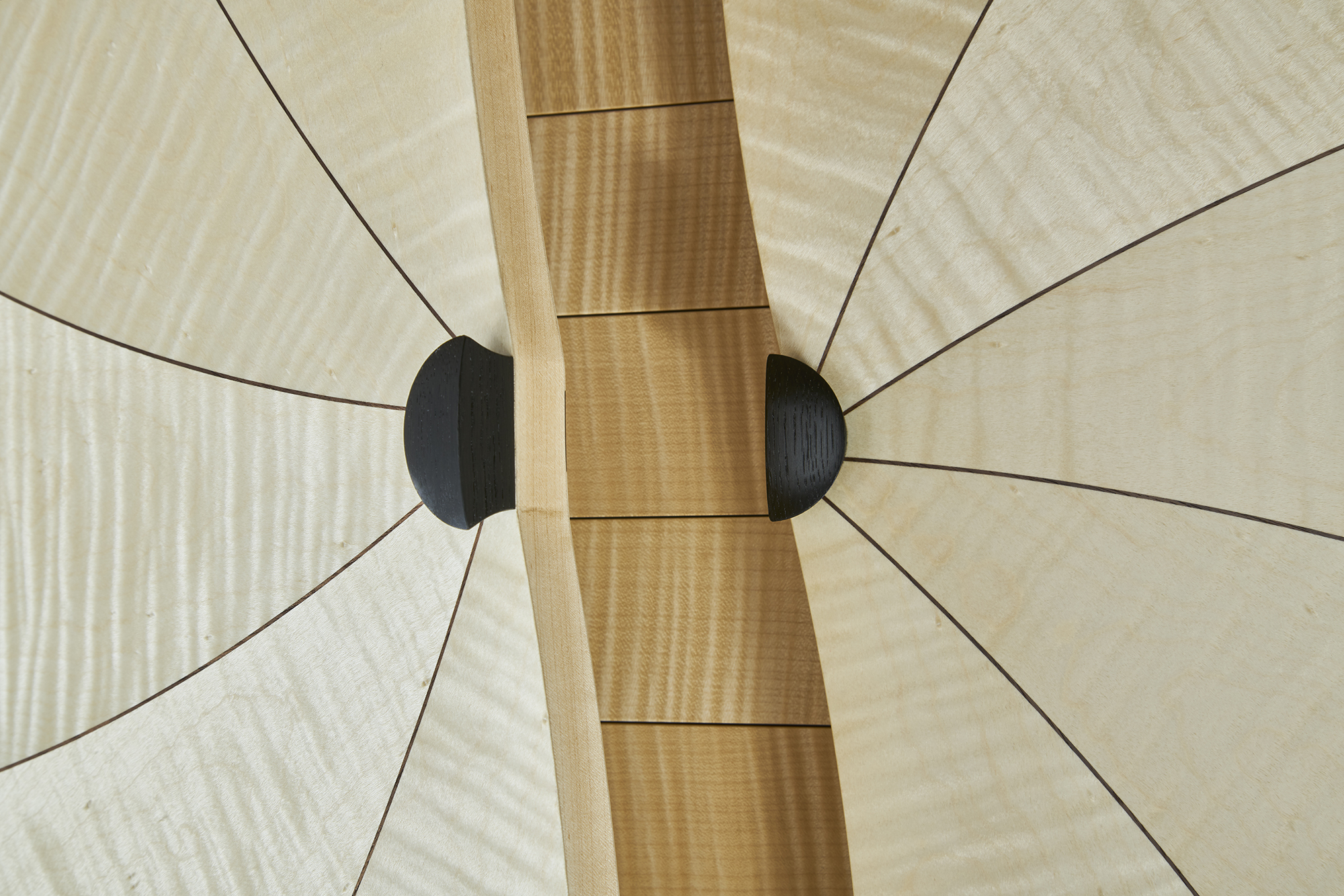
The cabinet
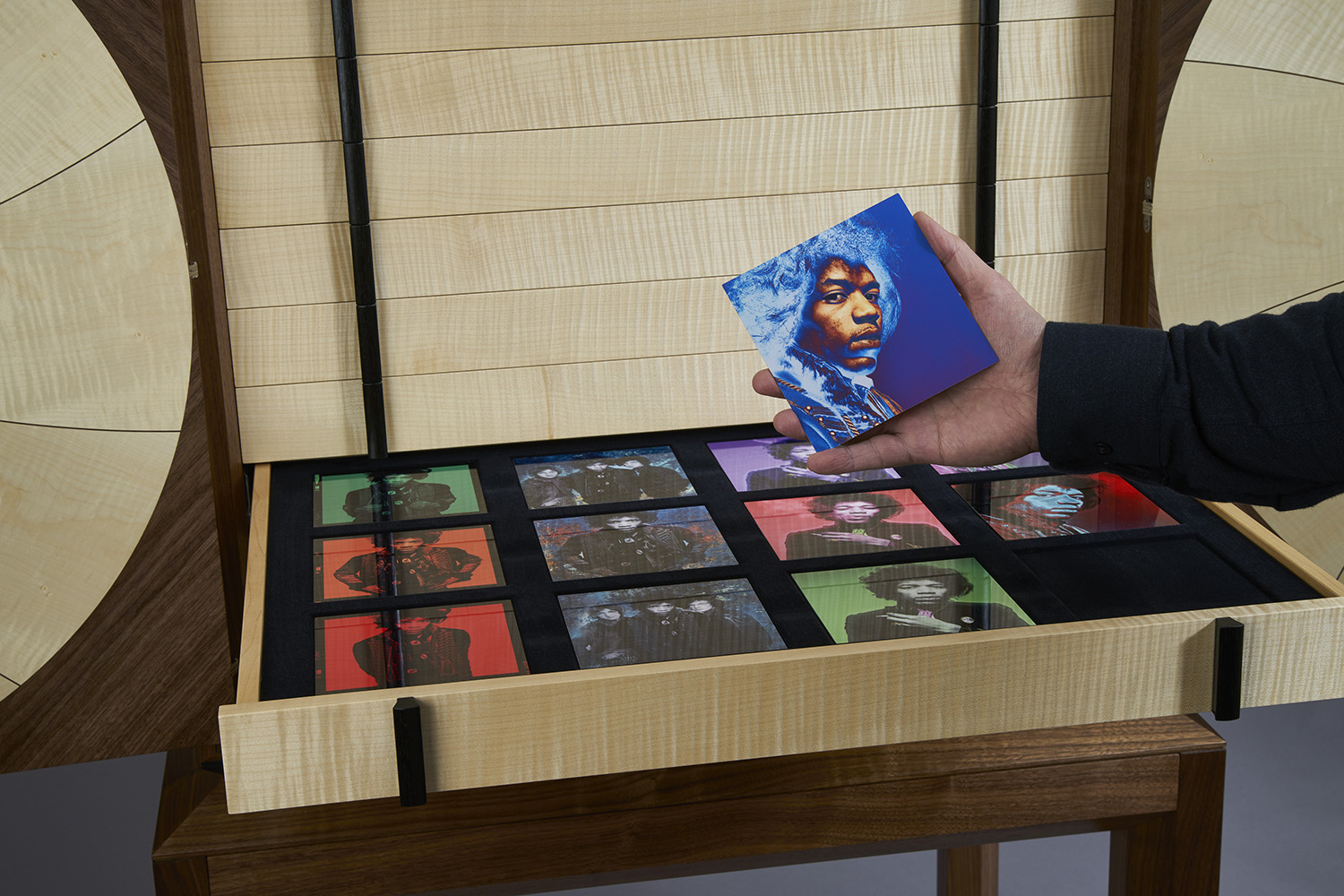
The ChromaLuxe photographs
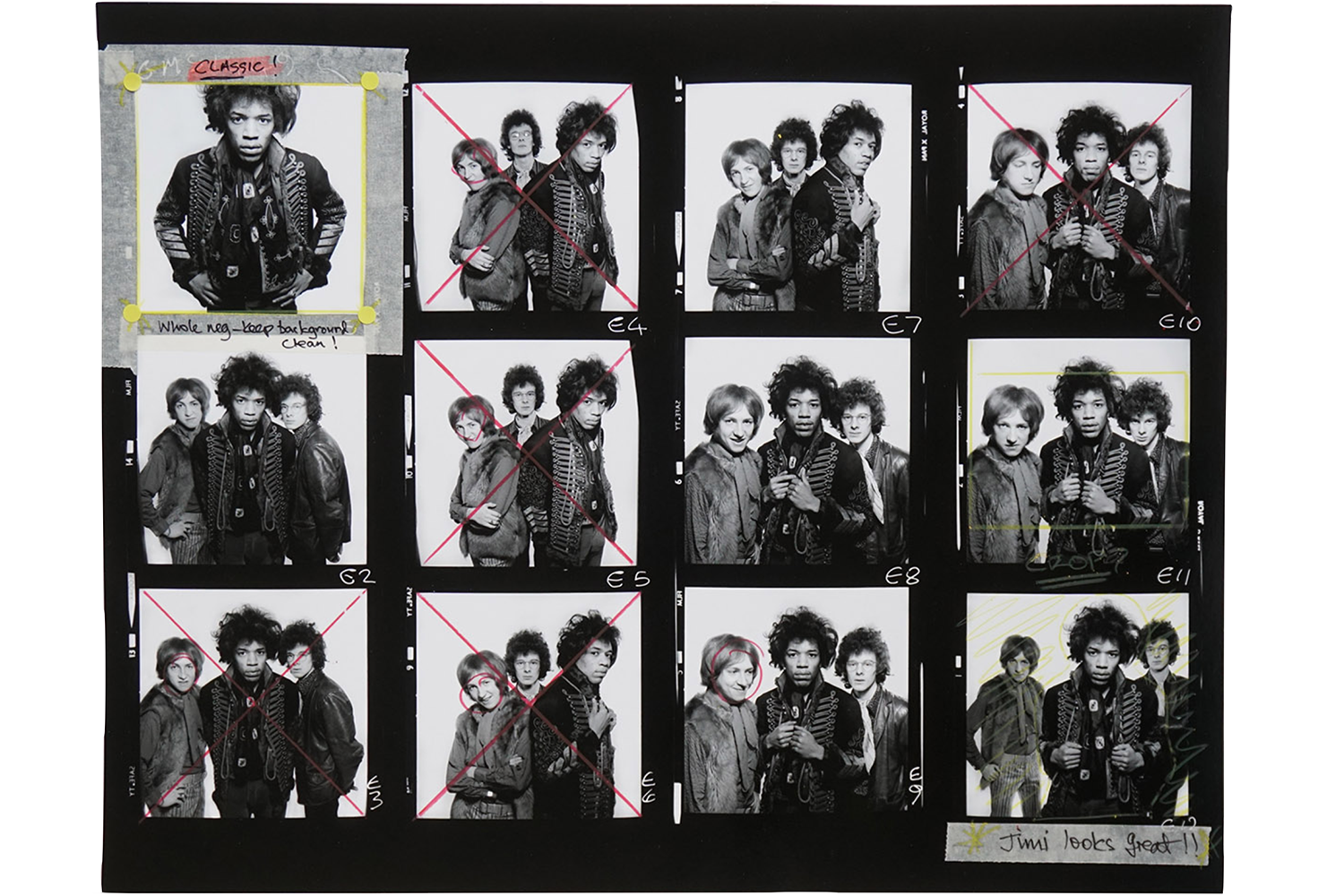
The contact sheets
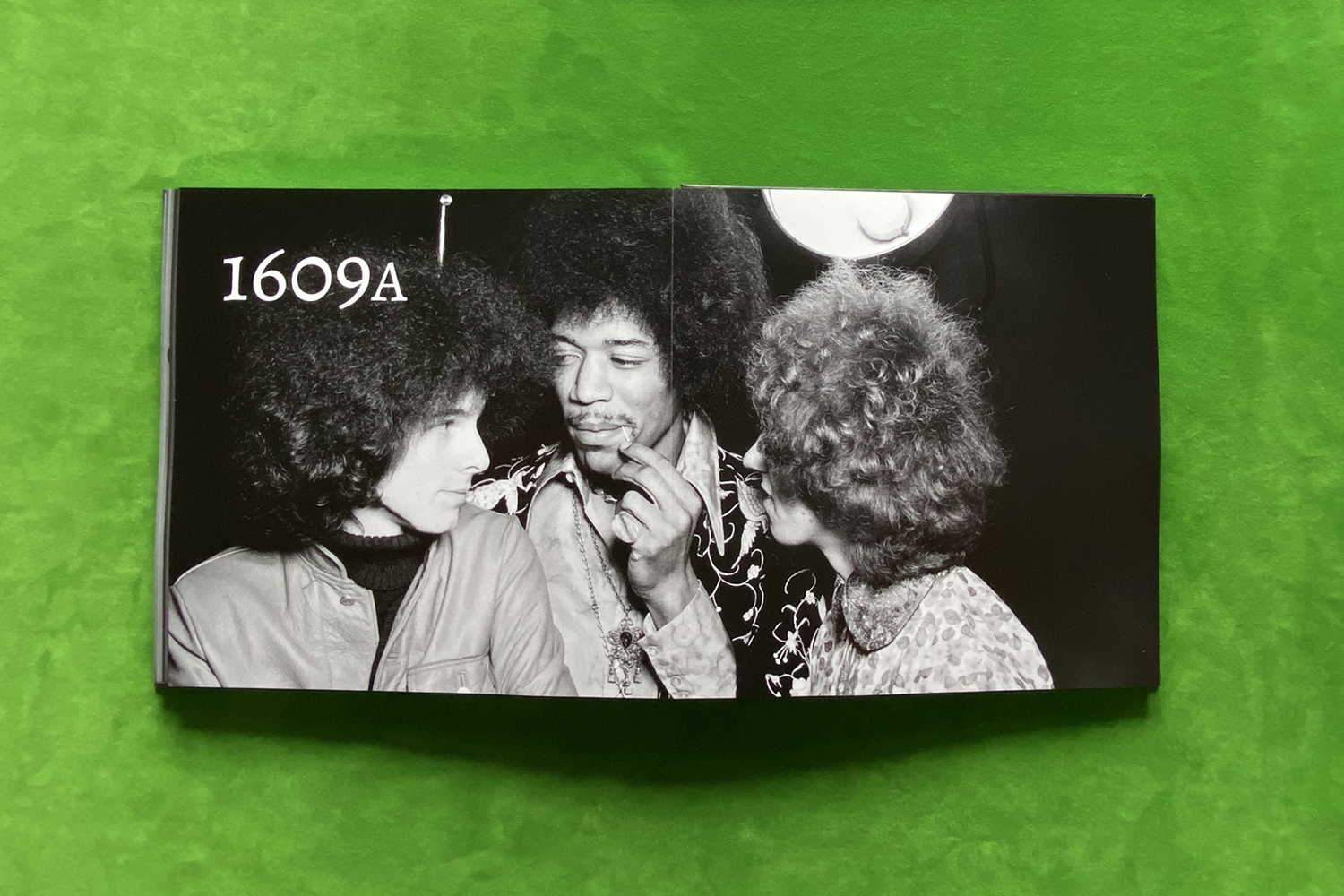
The books
The cabinet
The cabinet is the container for the collection. But it is so much more.
Sometimes, things just have to be.
That’s the case with The Treasury.
It isn’t born out of focus groups.
It is not the result of market research.
It simply needed to exist, so we made it.
Doors
The doors are one of the most beautiful features of the cabinet, and are made from walnut and maple-lipped panels that have been veneered with rippled sycamore and walnut. When viewed head on, they form a circle within a square. The circle is made from ten curved sections of veneered rippled sycamore, five on each door, with each section separated by walnut stringlines. The central circle is framed by panels of shaped walnut veneers in each corner.
Sycamore is generally straight-grained but in places it becomes wavy, especially near the base of the tree. The most prized sycamore is described as rippled—which means there is a regular wave in the grain. When cut, rippled sycamore exhibits a stunning depth which becomes more pronounced after polishing. This gives the doors an ethereal, shimmering, three-dimensional quality.
The idea of curved panels forming a circle on the front of the cabinet came up early in the design process. Not only are they a beautiful feature, they echo the design of a leaf shutter on a camera—apt given the contents of the cabinet. The fact that the doors open along the lines of the curves (and not simply on a straight vertical) was an inspired design feature, and the shadow line where the doors meet creates a similar visual effect as the walnut stringlines that separate the other panels. So much so, that when you look at the cabinet head on, it is difficult to see where the opening is.
The turned wooden handle on the front is made from bog oak—a rare form of partially fossilised timber, discovered after being buried in peat bogs for up to six thousand years. Over the centuries, chemical change causes the colour of the wood to transform to a deep black. The wooden handle splits down the middle, half attached to each door. The doors have been hung using nickel-plated Soss hinges, and rare earth magnets under leather discs hold the doors in place when closed.
Opening both doors reveals the inner box, with eleven drawers. The light tones of the rippled sycamore inside provide a visual contrast with the rich walnut exterior.
Drawers
Drawers in the cabinet
The drawer fronts are made from rippled sycamore. The drawer fronts have been carefully ordered so that ripple direction alternates from drawer to drawer, right to left, then left to right and so on, from the top drawer to the bottom as you look down the front of the inner cabinet.
Each drawer has two shaped bog oak handles, one to the left and one to the right. Each run of eleven vertical handles is constructed from a single piece of bog oak. The drawer internals are made from maple, with veneered drawer bottoms.
All the drawers are mounted on Blumotion soft-close runners, with a very smooth open-and-close mechanism. These runners have been specifically chosen as they allow for the drawers to be fully extended so that the entire contents of each drawer can be viewed at any one time.
Drawer in the base
The stand on which the cabinet sits contains a hidden drawer. This has a walnut front, maple internal walls, and a walnut-veneered drawer bottom, covered in yellow velvet. The drawer also runs on Blumotion soft-close runners, and is opened using a discreet thumbhole recess under the base of the cabinet. The drawer has been constructed specifically to house the contact sheets and certification that accompanies the collection.
A thing of beauty is a joy for ever:
Its loveliness increases; it will never
Pass into nothingness;
John Keats, from Endymion
Velvet linings
Ten of the drawers in the main cabinet have a fixed tray insert, and each tray has twelve individually cut recesses (120 in total) to house the 120 ChromaLuxe photographs that form the bedrock of this collection. Subtle thumb-hole recesses allow the photographs to be removed and studied.
Each drawer is lined with a different colour velvet. The colours are eye-popping, quite deliberately.
The top velvet-lined drawer is slightly deeper and houses two special books that accompany the collection.
Cabinet and stand
The cabinet
The central box section holding the eleven drawers is made from both solid American black walnut and 1.5mm walnut veneered panels. American black walnut is a rich brown hardwood, with a beautiful grain pattern, polished here to an exceptional finish. The front frame has a bog oak stringline detail and has been chamfered on the edges.
The walnut veneers on the sides and top of the cabinet have been carefully selected and matched so that the grain and patterns are as continuous as possible around the cabinet. All the parts have been sanded up to 240 grit extra fine sandpaper and oiled with four coats of Osmo Hardwax oil.
Dimensions
The top section of the cabinet has a 79 x 79cm square front and is 58cm deep. When connected to the base, the cabinet is 160cm high. The base has a slightly larger footprint and is 87cm wide and 61cm deep
The stand
The cabinet sits on a stand. The stand and cabinet are made separately for easier installation and transportation, and the two sections are bolted together on installation. The legs and side rails are constructed from walnut, and the legs and rails are bevelled on the inside faces. The small black feet at the base of each leg are made from bog oak.
Angled frames
Two angled frames link the base and the cabinet together. The larger one is made from walnut and the smaller one is made from bog oak. These add contrast and shadow detail between the two sections.
Why have we done this?
Why not? Sometimes, things just have to be. That’s the case with The Treasury. It isn’t born out of focus groups or market research. It simply deserves to exist. It is the product of a desire to do something purely for its own sake.
This is a project born out of the lockdown and the Covid 19 pandemic—which has provided time to pause and reflect. This fuelled our desire to create a completely new kind of precious, ultra-exclusive collectible—something epic and unprecedented. The challenge we set ourselves was this: find a way to immortalise an historically important collection of photographs in a new way that would endure for the ages—and be a thing of beauty for its owner to enjoy every single day. It had to delight and surprise, with its content, presentation, and choice of materials.
We started with a blank sheet of paper, some imagination, some inspiration, and this is what happened.
A sense of scale
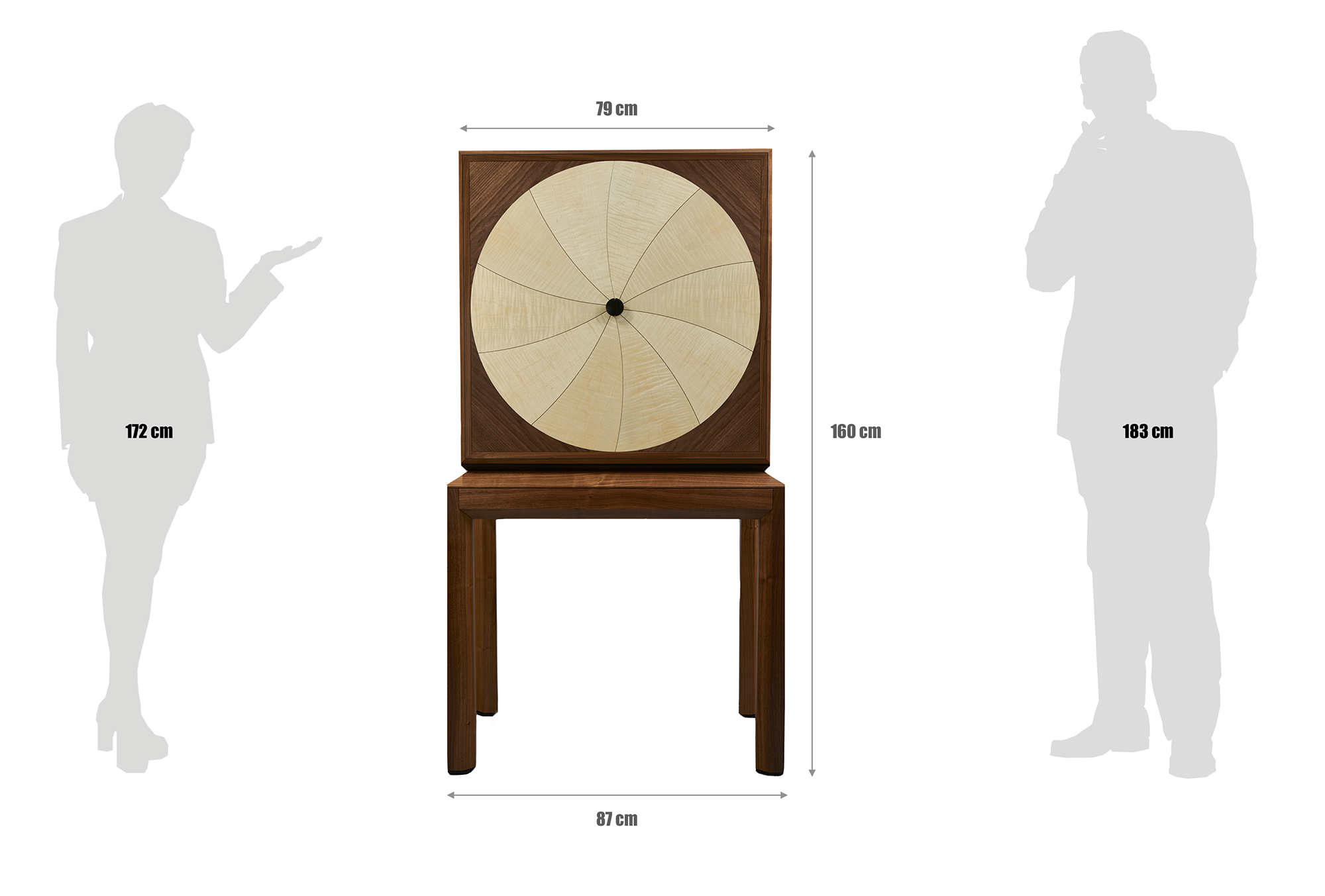
The contents
So now you’ve heard about the cabinet. What about the contents?
There are three elements to the contents. First, the 120 individual photographs that are contained in the cabinet drawers. Second, a collection of annotated contact sheets contained in the hidden drawer in the base of the cabinet, and thirdly, two bespoke books designed specifically for the collection, and which are housed in the top drawer.
We explore each element in further detail below.
A selection of images from the collection
The photographs: Studio sessions 1449 and 1609
Over two sessions in the first half of 1967, Gered Mankowitz made ninety-six portraits of Jimi Hendrix and the Experience at his studio in Mason’s Yard. Taken on medium format film with his trusty Hasselblad, the first session yielded sixty black and white photographs (comprising both group and solo portraits) over five rolls of film, and was allocated the reference number 1449 in Gered’s shoot book. The second session resulted in a further thirty six group portraits, and was allocated the reference 1609. Together these ninety-six photographs represent the most important collection of studio portraits of Jimi and the The Experience. Images from these sessions are known the world over by Jimi Hendrix aficionados.
Gered Mankowitz shares his recollections: “Looking back on these shoots with Jimi and the Experience, I’m amazed by how much usable material we shot with such little film. I don’t have any clear memories of how the images I made were used at the time. Because of that, I probably felt the session wasn’t really very successful from a commercial point of view. My portraits of Jimi remained mainly unseen until my first exhibition in 1982, when I showed a very tightly cropped version of the “Smoking” portrait. It wasn’t until a solo show in 1992 that I showed the photograph of Jimi with hands on hips against a white background—which I call “Classic,”—and which became an immediate success and inspired much interest in my work.
As time passes and these images of Jimi continue to resonate with fans and followers of music from all over the world, I have realised that this particular moment in Jimi’s life was possibly the most positive and optimistic few weeks he might have ever experienced. He had been lifted from obscurity in New York by Chas Chandler, and whisked to London, where he had received the most open, enthusiastic and heartfelt response from musicians and the media. He had recorded as a solo artist and his first single was on the verge of being a hit, and he was playing his kind of music to an ever increasing audience who were accepting him for himself, and loving what he did. The future looked great and he had everything to look forward to and be excited about. This was reflected so vividly in these two sessions that captured Jimi, the human being, at a wonderful moment in what was to be a tragically short life. “
The ChromaLuxe photographs
Exquisite portrait miniatures
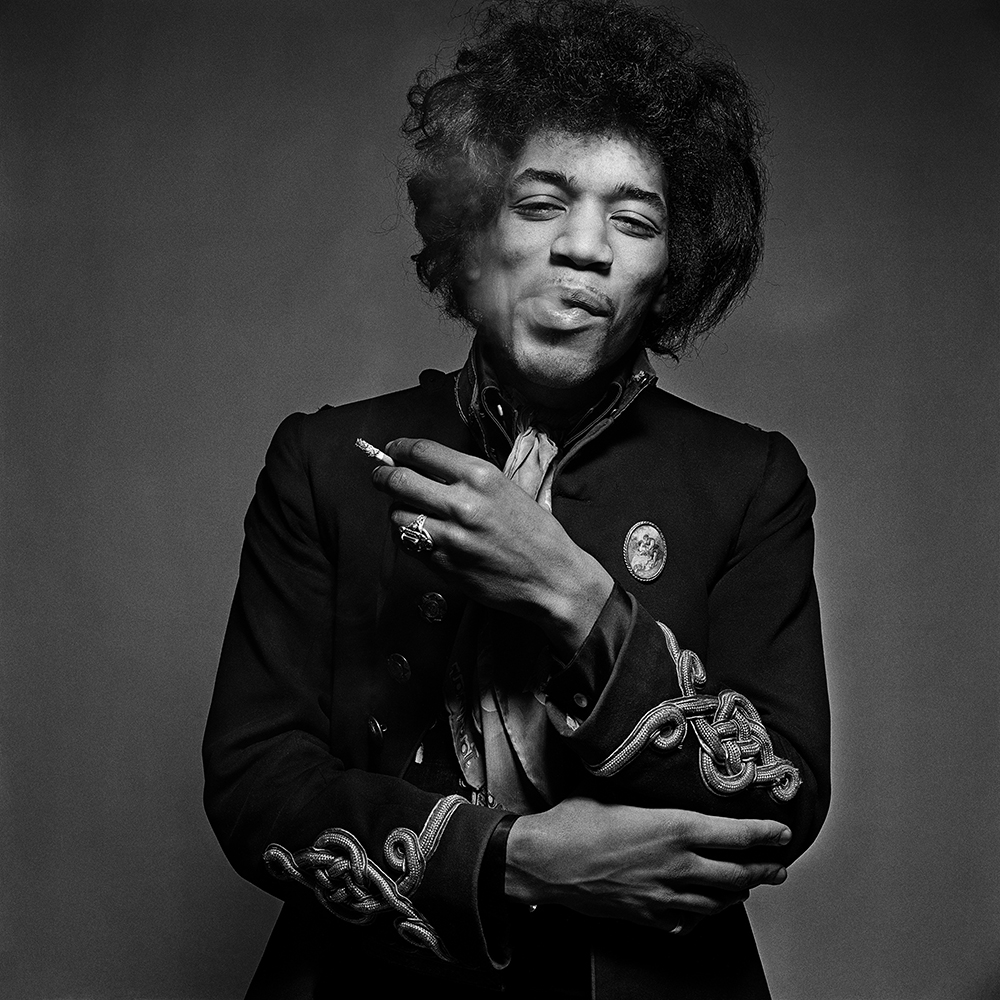
The first session
60
photographs
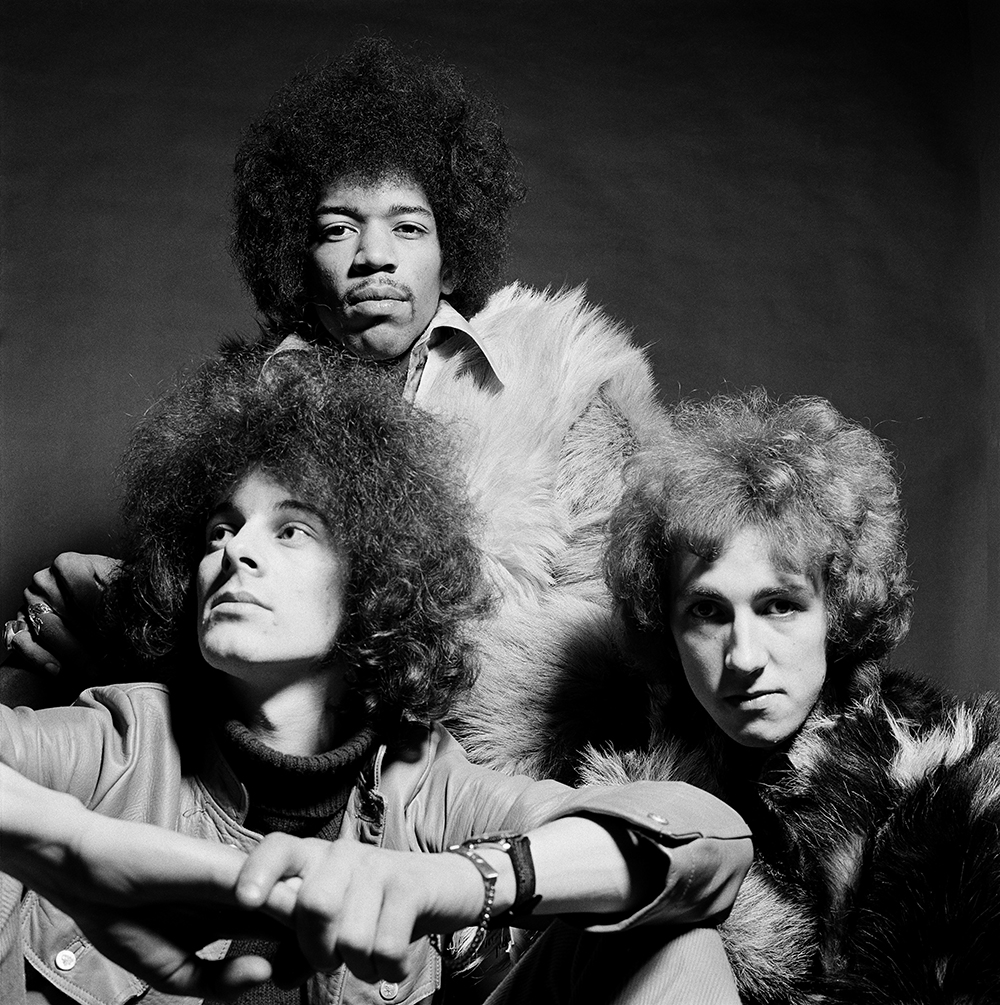
The second session
36
photographs
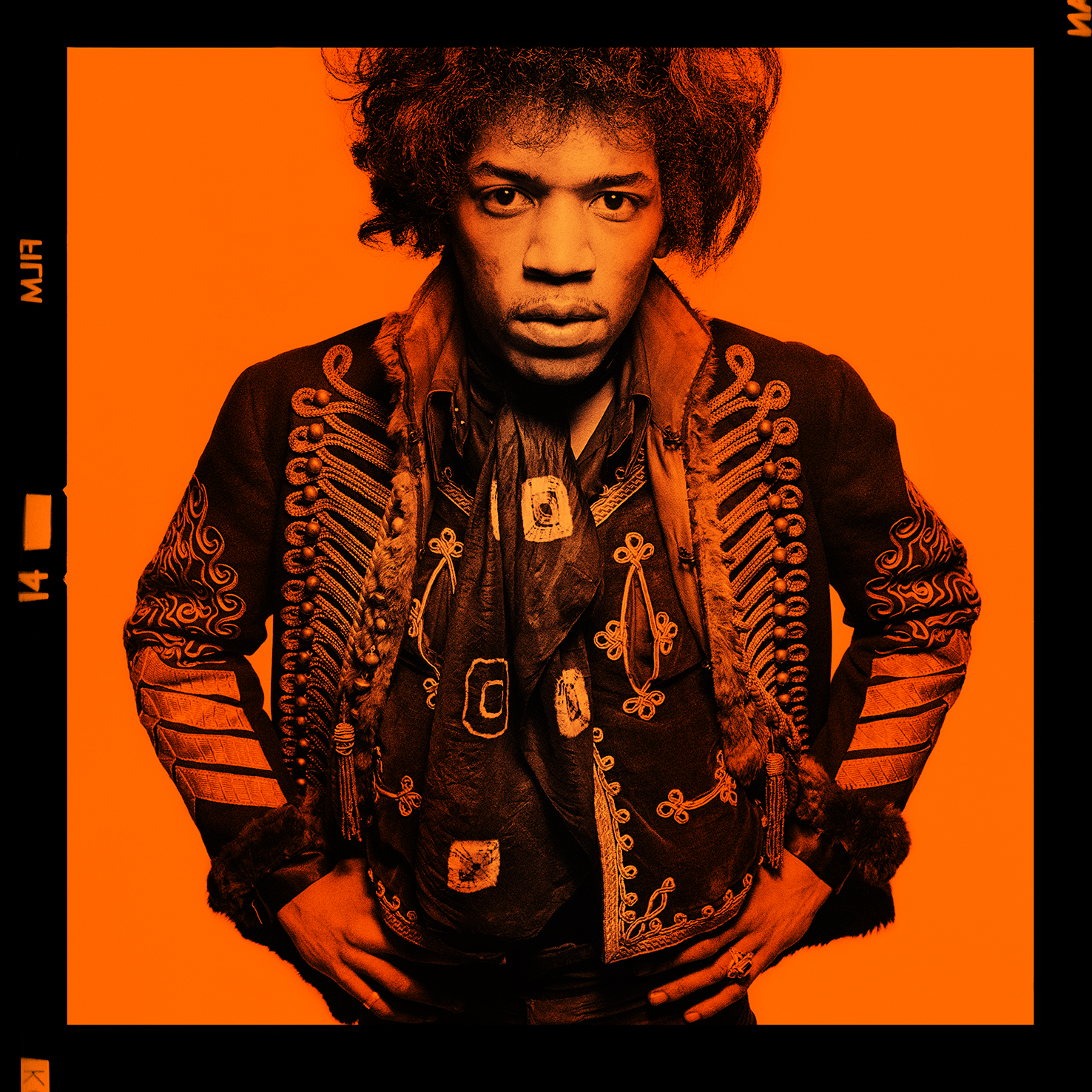
Colourisations
24
photographs
The cabinet contains 120 individually made photographs, spread over ten drawers, and these are the cornerstone of the collection. There are 96 black and white and 24 colour images. The 96 black and white images comprise the complete archive of photographs taken by Gered Mankowitz in his two renowned studio sessions with Jimi Hendrix in London in 1967. The 24 colour photographs demonstrate Gered’s skill at re-working images in colour form.
Each drawer displays twelve photographs, in three rows of four. Each photograph in the collection is square, and measures 12.5 x 12.5 cm (just under five inches square), with subtlely rounded corners. The small size and the fact that they can be easily held in one hand is reminiscent of portrait miniatures—a small scale art form with a long and rich history starting in the 16th century.
Each one is made as a ChromaLuxe print. Chromaluxe printing is an archivally stable process that produces prints with outstanding detail and depth. The technique uses a process called dye sublimation to fuse the image directly into the surface of a 1.2 mm thick panel of white-coated aluminium.
The resulting prints have an ultra-high-gloss finish, richly saturated colours and details, and a jewel-like appearance. They are very resilient and require no additional glass, acrylic, lamination or coating to protect them. The dye sublimation process renders images waterproof, abrasion resistant, fire resistant and chemical resistant.
Because of the small size, each photograph becomes a precious object, which can be easily handled and viewed. The benefit of the ChromaLuxe process is that the photograph has its own structural rigidity and integrity, and, unlike a standard print on paper, a ChromaLuxe print can be picked up and handled without any risk of damaging the surface. The resulting prints have a spectacular clarity and purity—with a vibrancy and immediacy that you don’t get with a traditional print on paper. When you hold one of these small precious objects in your hands it is as if you have a direct relationship with the image.
A selection of images of the ChromaLuxe prints
The Treasury is a celebration of the portrait miniature – an exquisite and finely detailed small-format artwork
The contact sheets
Eight bespoke annotated 16 x 20 inch contact sheets
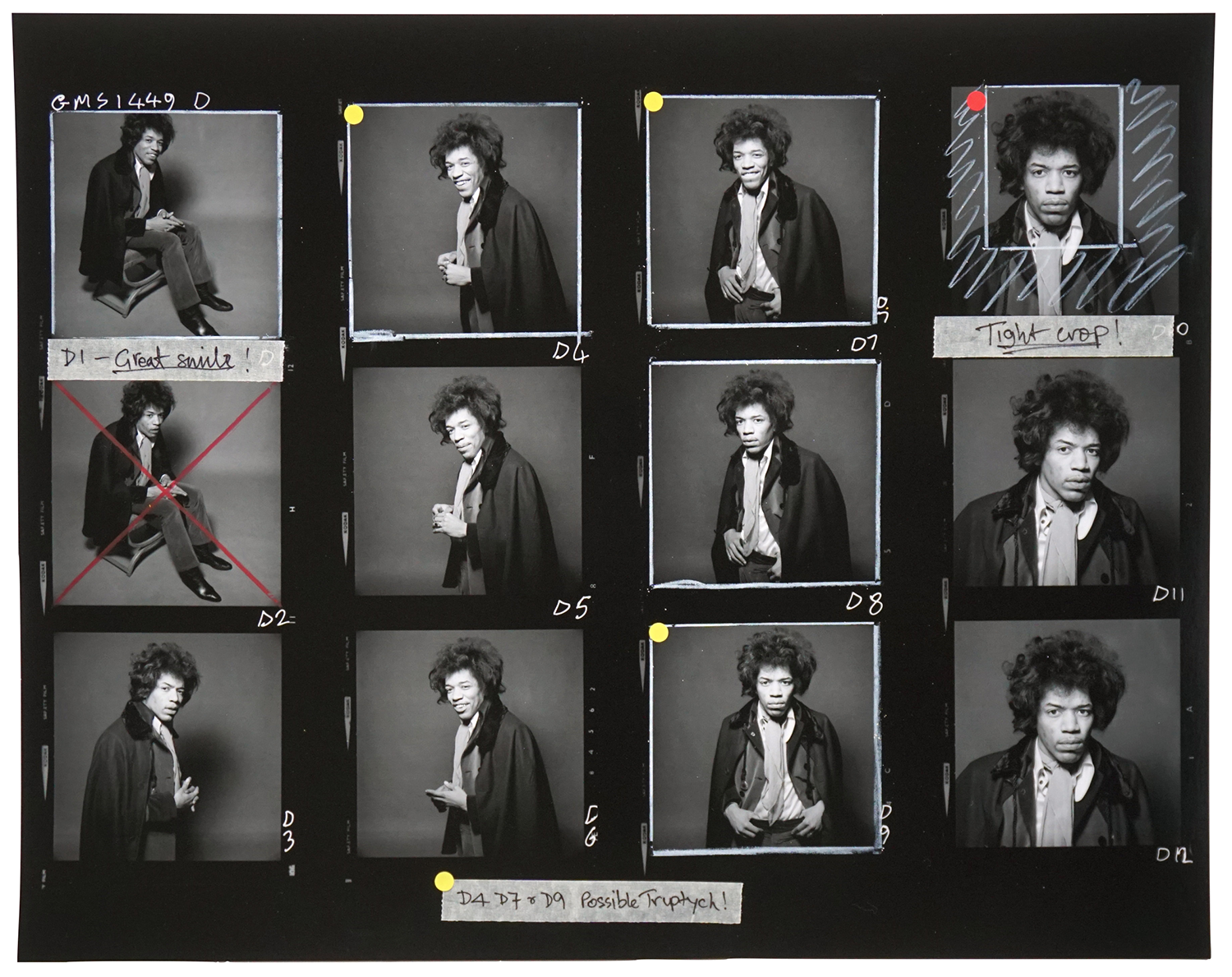
The collection also includes eight individual contact sheets on 16 x 20 inch silver gelatin paper.
Each contact sheet contains twelve frames – an entire roll of medium format film. You can see examples above and below – as you can see the black border extends to the edge of the sheet.
Contact sheets are fascinating documents in their own right as they tell the story of the shoot. Typically, an 8×10 inch contact sheet was the primary working document that Gered would use in the 1960s to make selections from a session.
Gered has created these enlarged 16×20 inch versions specifically for The Treasury. Each one is unique, as Gered has annotated them with hand-drawn chinagraph pencil markings, notes, tape edits and crops, to resemble, as closely as possible, the type of markings that he would typically put onto these working documents when making selections. They provide a fascinating insight into the creative process.
Each contact sheet is presented in an archival transparent sleeve, and all eight are housed in a black buckram clamshell portfolio box, which is found in a hidden drawer in the base of the cabinet. The drawer is opened using a discreet thumbhole recess under the base of the cabinet. Once removed from the cabinet and placed on a table top, the clamshell box opens out flat so that the contact sheets can be moved from one tray to the other, to facilitate easy viewing and to minimise handling.
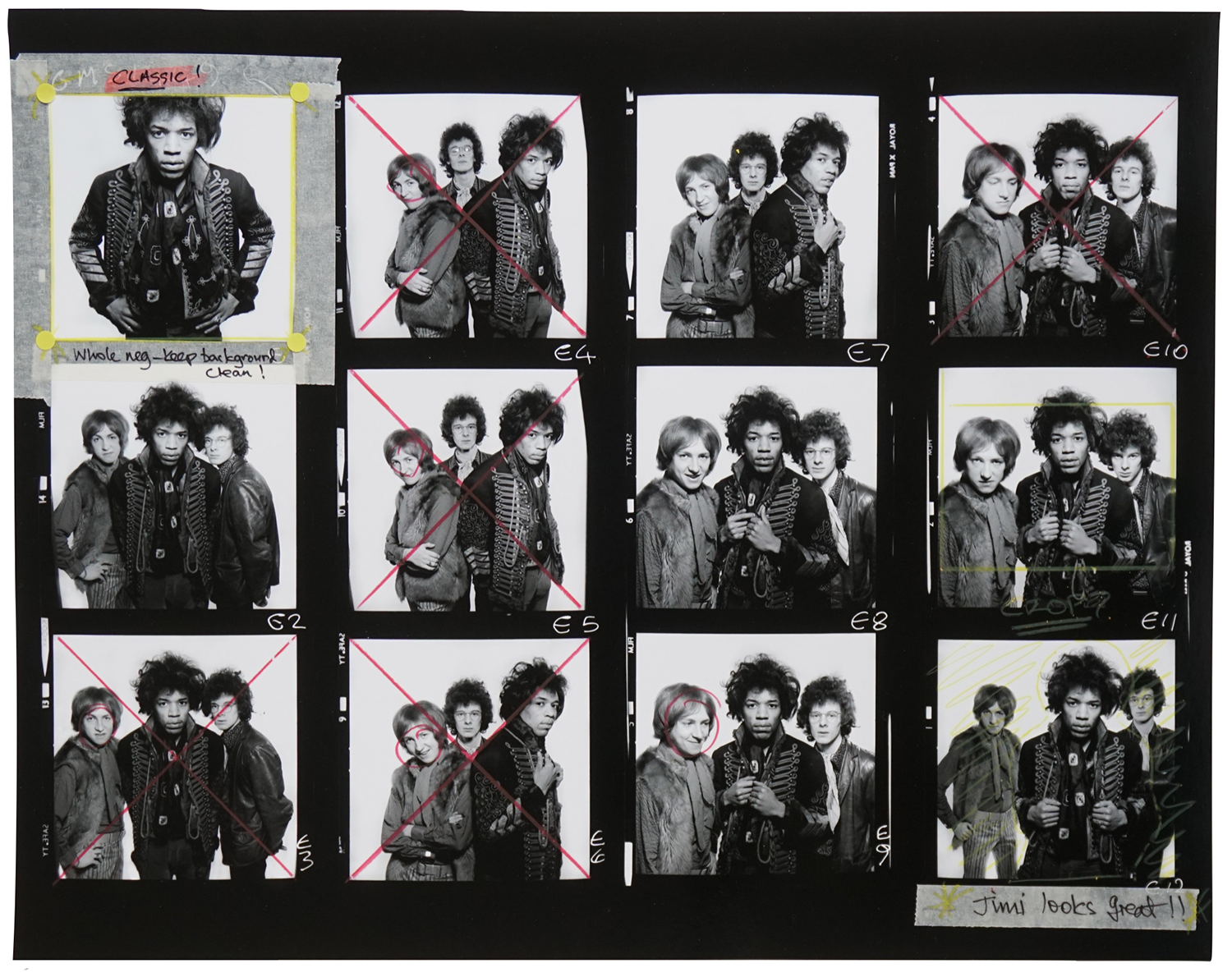
The books
The top drawer of the cabinet contents two books, both completely bespoke to this project and not available to purchase separately.
The first is the story of the making of the cabinet. This measures 8 x 10 inches and has 90 pages. This contains a wealth of production photographs from the inception of the project to the final finished cabinet, including original sketches, computer assisted designs, renders and images from a professional session with London-based product photographer Matthew Booth.
The second book measures 12 x 12 inches and has 110 pages. It contains Gered Mankowitz’s story behind the two sessions, along with the session images.
Both books are lay-flat, printed on heavyweight paper. Layflat books do exactly as the title suggests—they sit perfectly flat when open. This means that no image detail is lost down the central gutter and double page spreads can be enjoyed without any distortion.
Book 1: The making of the cabinet
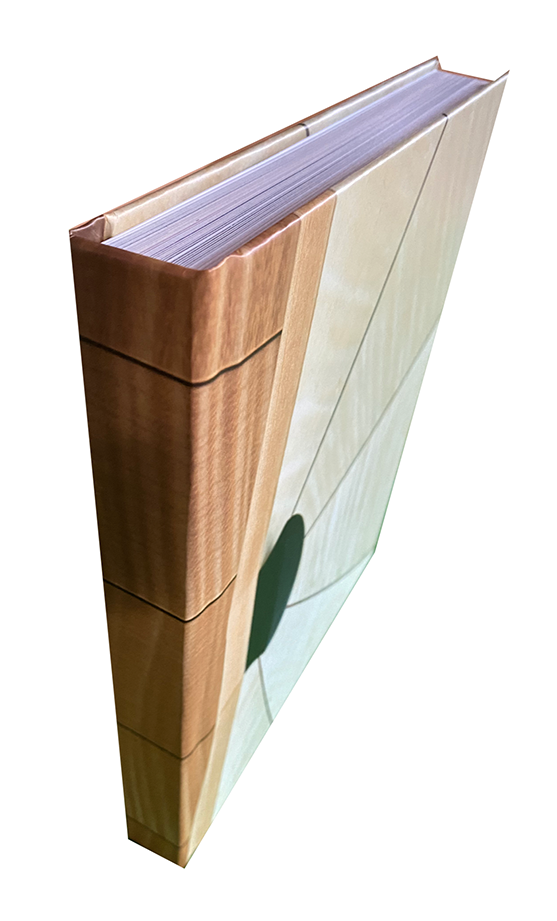
The front cover
Sample spreads
Book 2: The sessions
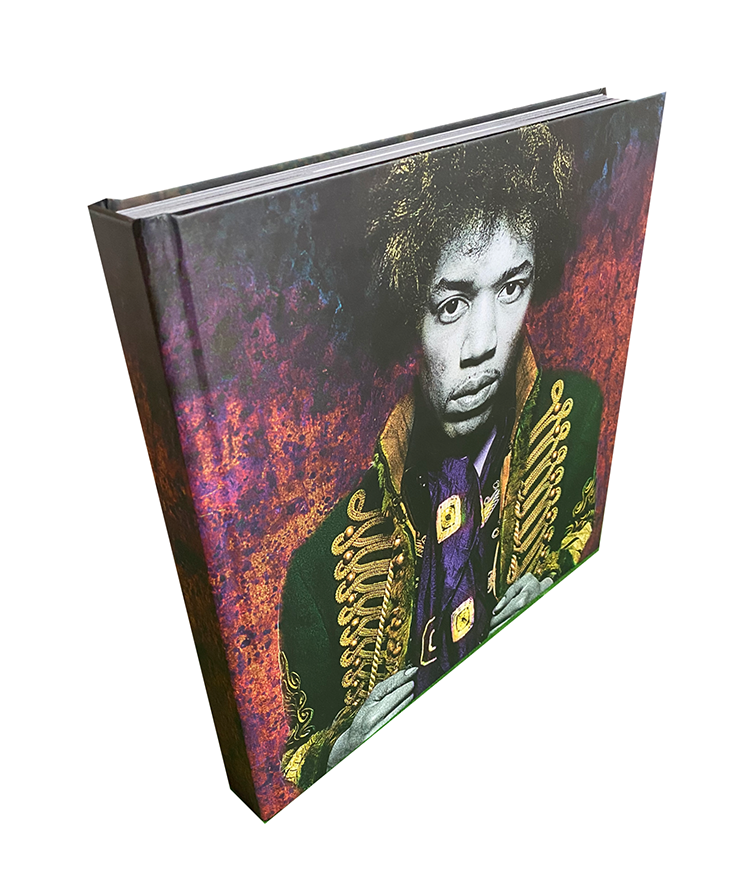
The front cover
Sample spreads
So we’ve covered the cabinet and the contents that together form The Treasury.
Do you like what you see?


